2022 Year in Review inside ECE






2 | PEOPLE POWERING INNOVATION INSIDE THIS ISSUE ELECTRICAL AND COMPUTER ENGINEERING Electrical Engineering and Computer Science Building 1301 Beal Avenue Ann Arbor, MI 48109-2122 EDITORS: Catharine June Hayley Hanway GRAPHIC DESIGNER: Laura Koroncey Jordan B. Acker Michael J. Behm Mark J. Bernstein Paul W. Brown Sarah Hubbard Denise Ilitch Ron Weiser Katherine E. White Santa J. Ono, ex officio A Non-discriminatory, Affirmative Action Employer. © 2022 The Regents of the University of Michigan We would like to thank the many additional contributors to the magazine, especially members of the College of Engineering Communications team. UMichECE umichece EECSatUM Research 4-33 Alumni 66-77 ECE Council 65 Education 34-39 umichece Faculty and Staff 40-47 Students 48-64
Donors
78-79 Faculty Directory 80-83
DEAR FRIENDS,
It has been wonderful to see our students and faculty reconnecting with one another in the classroom and labs, and to see their creativity and innovation in action.



I’d like to point out just a few key highlights of the past year. We are excited to welcome four new faculty members into the ECE community. And we are now offering new machine learning courses both at the undergraduate and graduate levels, new quantum computing courses for undergraduate students, and we’ve added a third specialty to our industry-focused Master of Engineering (MEng) program: Microelectronics and Integrated Circuits.
Many of our faculty are poised to take advantage of the newly-signed CHIPS and Science Act of 2022, and as usual, our faculty are making tremendous progress in areas that have the potential to enhance the human condition. The activities of our faculty, students, and alumni, a small fraction of which are highlighted in this year’s magazine, are truly inspiring. I hope you have some time to read about them!
MINGYAN LIU
Peter and Evelyn Fuss Chair of Electrical and Computer Engineering
Alice L. Hunt Collegiate Professor of Engineering Professor, Electrical Engineering and Computer Science
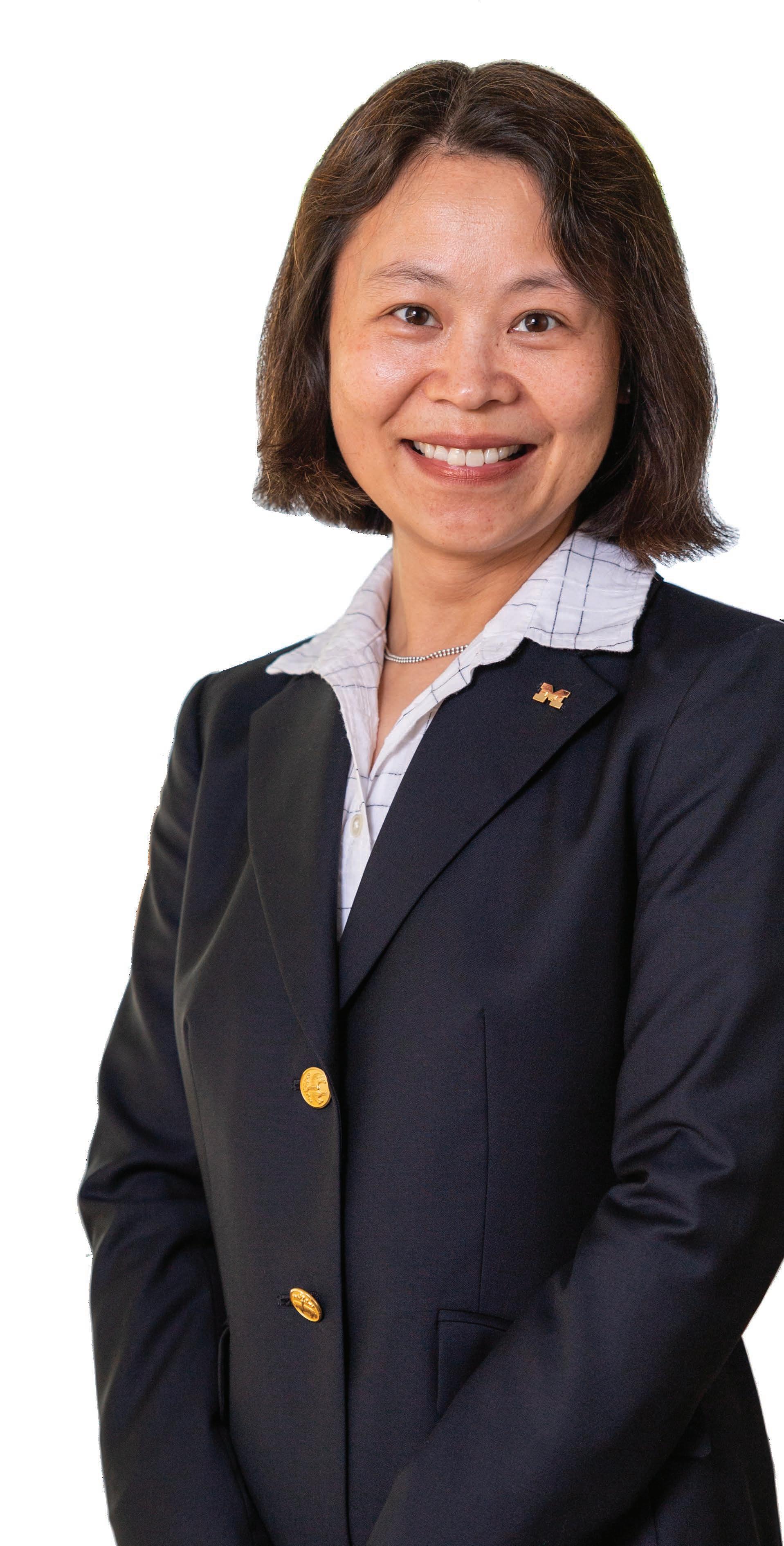
ZEUS Joins International Community of Extreme Light Virtuosos - and Begins its Experiments

4 | PEOPLE POWERING INNOVATION
The three-petawatt ultrashort pulse laser facility known as ZEUS (Zetawatt-Equivalent Ultrashort pulse laser System) is ramping up for business! ZEUS will explore the physics of the quantum universe as well as outer space, and is expected to contribute to new technologies in medicine, electronics and national security.
Experiments have begun with the brand new laser to send its first pulses into an experimental target; the laser is expected to be fully operational in 2023.
ZEUS is also part of a newly-funded multi-institution, international collaboration to develop and apply “extreme light” to advance the frontiers of science and engineering.
Extreme light refers to the newest generation of lasers capable of accessing frontiers of laser-matter interactions at the highest intensities, the fastest times, and the shortest distances yet obtained.

Funded by the National Science Foundation and coordinated by The Ohio State University, the goal of this collaboration is to improve communication among otherwise separated research fields, and promote broad participation at the frontiers of laser-driven science. The initiative is called Extreme Light in Intensity, Time, and Space (X-lites).
“Each facility will have a different perspective, so the idea is to come together and figure out best practices and how to best integrate our different user communities,” explained Prof. Louise Willingale, Associate Director of the ZEUS Facility.
When completed, ZEUS will be the most advanced particle accelerator in the United States, and joins a network of similarly extraordinary facilities around the world with the goal of opening up research opportunities to an international cohort of scientists and engineers.
These laser facilities don’t come cheap. ZEUS, for example, is supported by more than $18M from the NSF. This means that researchers who are used to working in their own laboratories need to adapt to a new paradigm where they become part of a collaborative of researchers using the same facilities.
With users coming from a variety of disciplines (physics, chemistry, biology, materials, engineering, and more), there is tremendous opportunity for cross-disciplinary
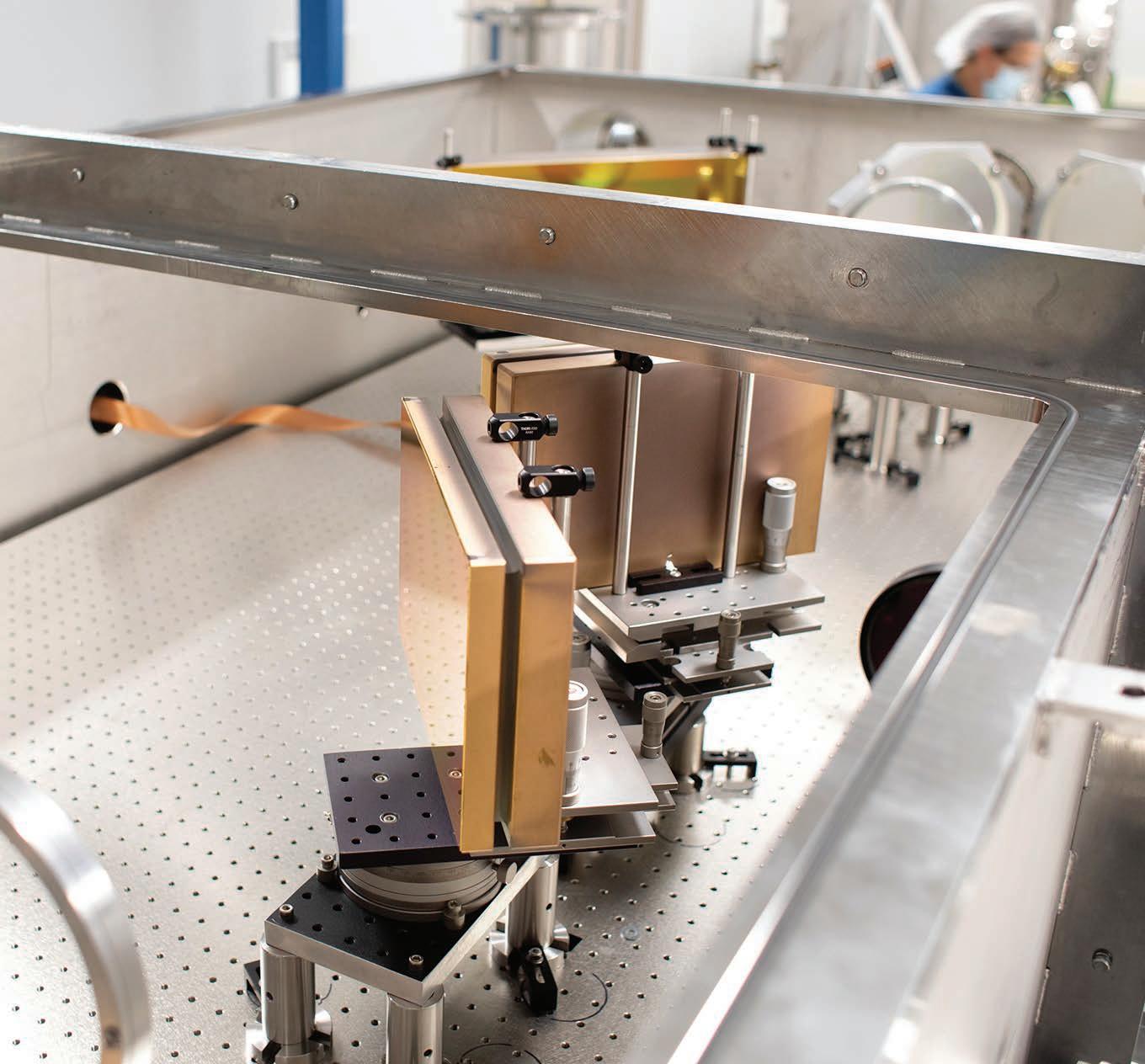
Above: A look into the 500 TW compressor vacuum chamber. Coming soon is the 3PW system.
Left: Research scientist John Nees and research engineer Galina Kalinchenko work on the ZEUS laser. Photo: Marcin Szczepanski
PEOPLE POWERING INNOVATION | 5
ECE RESEARCH
collaborations, which is considered essential for solving the most complex problems facing society.
“The entire ZEUS team is excited to be part of this international network of researchers and facilities,” said Willingale. “We’ve seen this work at Michigan, and we look forward to being part of the next frontier of extreme light.”
FIRST EXPERIMENTS
In the first series of experiments, the ZEUS team started at a power of 30 terawatts (30 trillion watts), about 3% of the current most powerful lasers in the U.S. and 1% of ZEUS’s eventual maximum power.
“During the experiment here, we’ll put the first light through to the target chamber and develop towards that 300 terawatt level,” said research scientist John Nees.
Nees leads the building of the laser alongside research scientist Anatoly Maksimchuk, who leads the development of the experimental areas.
Assisting with the first experiments is alumnus Franklin Dollar (MSE in Electrical Engineering and PhD in Applied Physics). Dollar’s team investigates how to make and use these new kinds of X-ray sources, especially for medical imaging.

“It’s very exciting to think of how we could use these laserlike X-rays to do low-dose imaging, taking advantage of the fact that they’re laser-like rather than having to rely on the absorption imaging of the past,” said Dollar.
Dollar’s team plans to return late in the fall for another run, aiming for the full power intended for the high repetition target area, 500 terawatts. The maximum power of 3 petawatts, or quadrillion watts, will be accomplished in a later set of experiments.
“Our team at ZEUS is very excited that our hard work paid off, and despite all the post-pandemic equipment delivery delays, we are on schedule to our original timeline. This experiment is the beginning to gradually ramp up the power until full commissioning in the fall of 2023,” said project manager Franko Bayer.
6 | PEOPLE POWERING INNOVATION
Prof. Louise Willingale, Associate Director of ZEUS, checks out one of the three target chambers available in the ZEUS facility. Photo: Silvia Cardarelli
“We look forward to being part of the next frontier of extreme light.” —Prof. Louise Willingale, Associate Director, ZEUS Facility
A View into What’s Really Happening During Gene Editing for Precision CRISPR
Gene editing is one of the hottest new techniques being explored by scientists and medical doctors alike, with the most typical applications including improved food production and treatment of serious diseases. Expected to reach a market size of $18.5M by 2028, the most popular method relies on the technique known as CRISPR (clustered regularly interspaced short palindromic repeats).
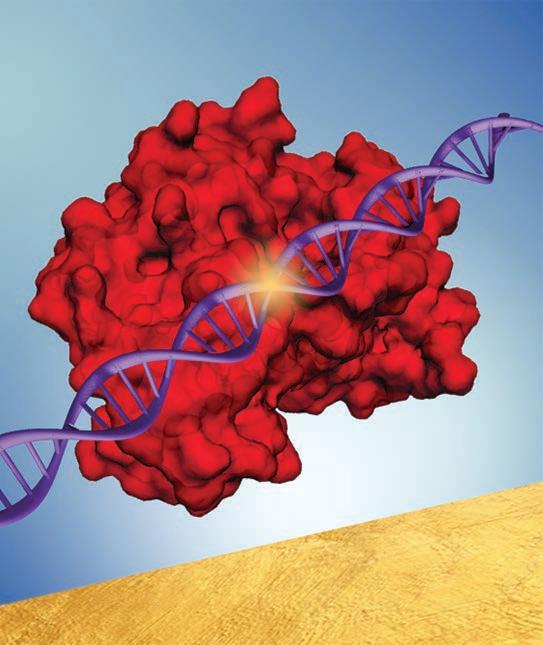
Prof. Somin Lee and her team have found a way to make CRISPR-style gene editing much more efficient and reliable thanks to a new technique that will allow doctors to view what’s happening in real time.
“This work paves the way for 'Precision CRISPR' to verify in realtime that every single cell is corrected,” said Lee.
The CRISPR technique is modeled after how bacteria destroy viruses. After recognizing a destructive entity, the bacteria mimic it enough to be able to attach itself to the virus. It then “cuts” the viral DNA apart, thereby destroying the defective gene.
Gene editing has already been used to improve the hardiness of plants, and the medical community has been experimenting with the technique to treat cancer, viral infections, and a variety of genetic diseases.
But it is time consuming to come up with an appropriate gene edit, because the norm is to simply wait and see if the process worked, and if not, keep trying. Relying on this trial and error method wastes valuable time, and makes it more difficult to intentionally impact the DNA in the way it was intended. It would be so much more helpful to be able to watch the process from beginning to end.
The most promising technique currently used to view the entire process is fluorescence imaging. Unfortunately, it yields only glimpses of what’s happening to the DNA because it’s also prone to photobleaching, which nullifies the fluorescence and sends the process back into darkness and invisibility.
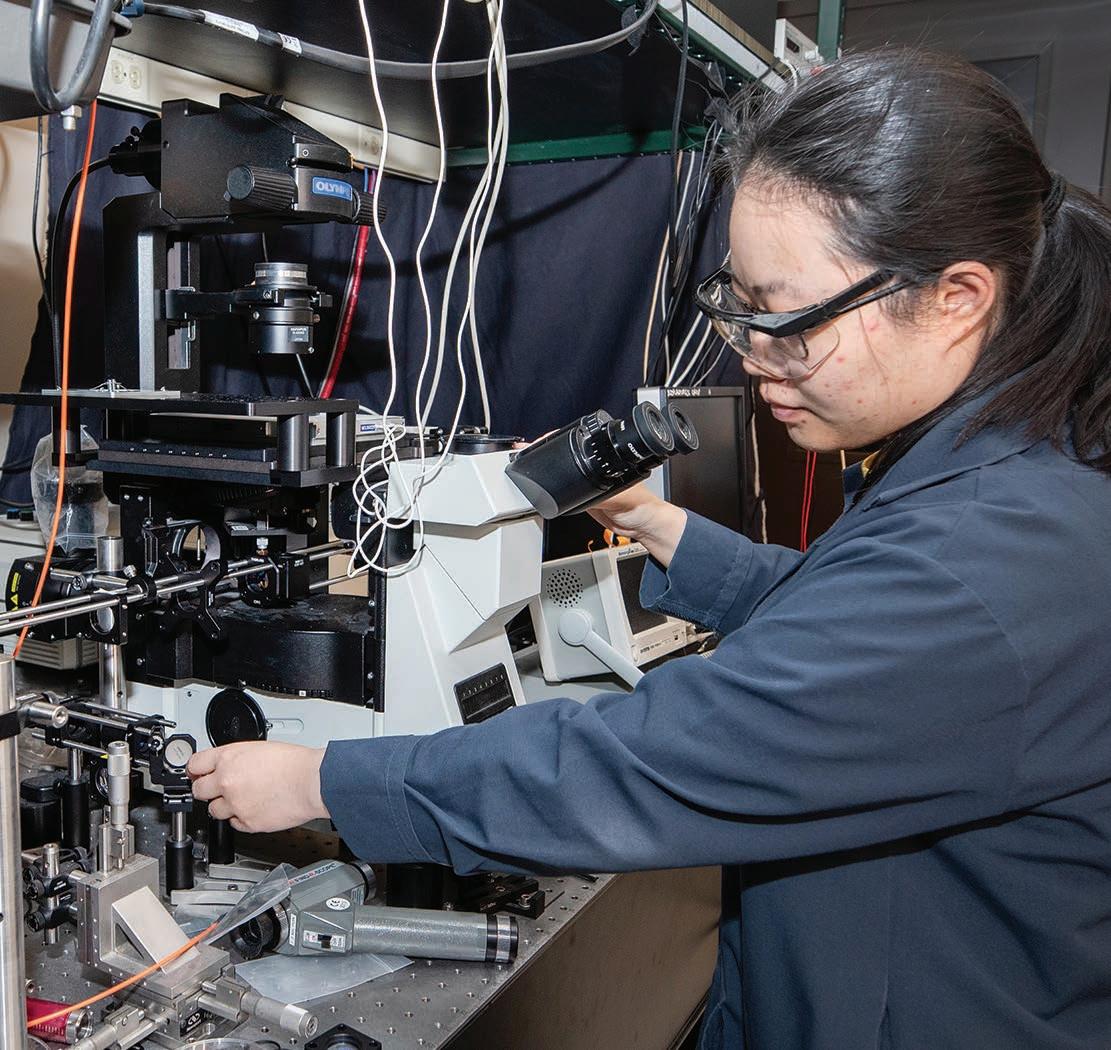
Lee and her team overcame the negative impact of photobleaching by using single particle spectroscopy. As a result, they were able to view, for the first time, the complete CRISPR-Cas process on bioplasmonic surfaces. And in the process, Lee’s team discovered why CRISPR-Cas efficacy tends to be quite low. The key problem lay in the fact that the target recognition and cleavage processes were surprisingly heterogeneous, which led to unsuccessful gene edits.
“Our technique can help the medical community use CRISPR-Cas systems more effectively in precision medicine and personalized disease therapeutics,” said Lee.
PEOPLE POWERING INNOVATION | 7
The red graphic represents the CRISPR-Cas protein binding with the DNA target. The gold base represents the bioplasmonic surface.
ECE RESEARCH
Image: Prof. Somin Lee
Doctoral student Zhijia Zhang in Prof. Somin Lee’s Bioplasmonics Lab.
Photo: Silvia Cardarelli
CHIPS AND SCIENCE ACT: Implications and Opportunities
The Creating Helpful Incentives to Produce Semiconductors (CHIPS) and Science Act of 2022, signed into law August 9, 2022, promises to bring relief to industries besieged by a chip shortage that has halted production of vehicles, consumer electronics, and much more. In anticipation of this historic initiative to revitalize the U.S. semiconductor industry, companies and educational institutions have already begun moving ahead with plans to maximize its impact.
Among those who have been planning far in advance of the signing of the CHIPS Act is Dennis Sylvester, Edward S. Davidson Collegiate Professor and Associate Chair of Electrical and Computer Engineering at the University of Michigan.
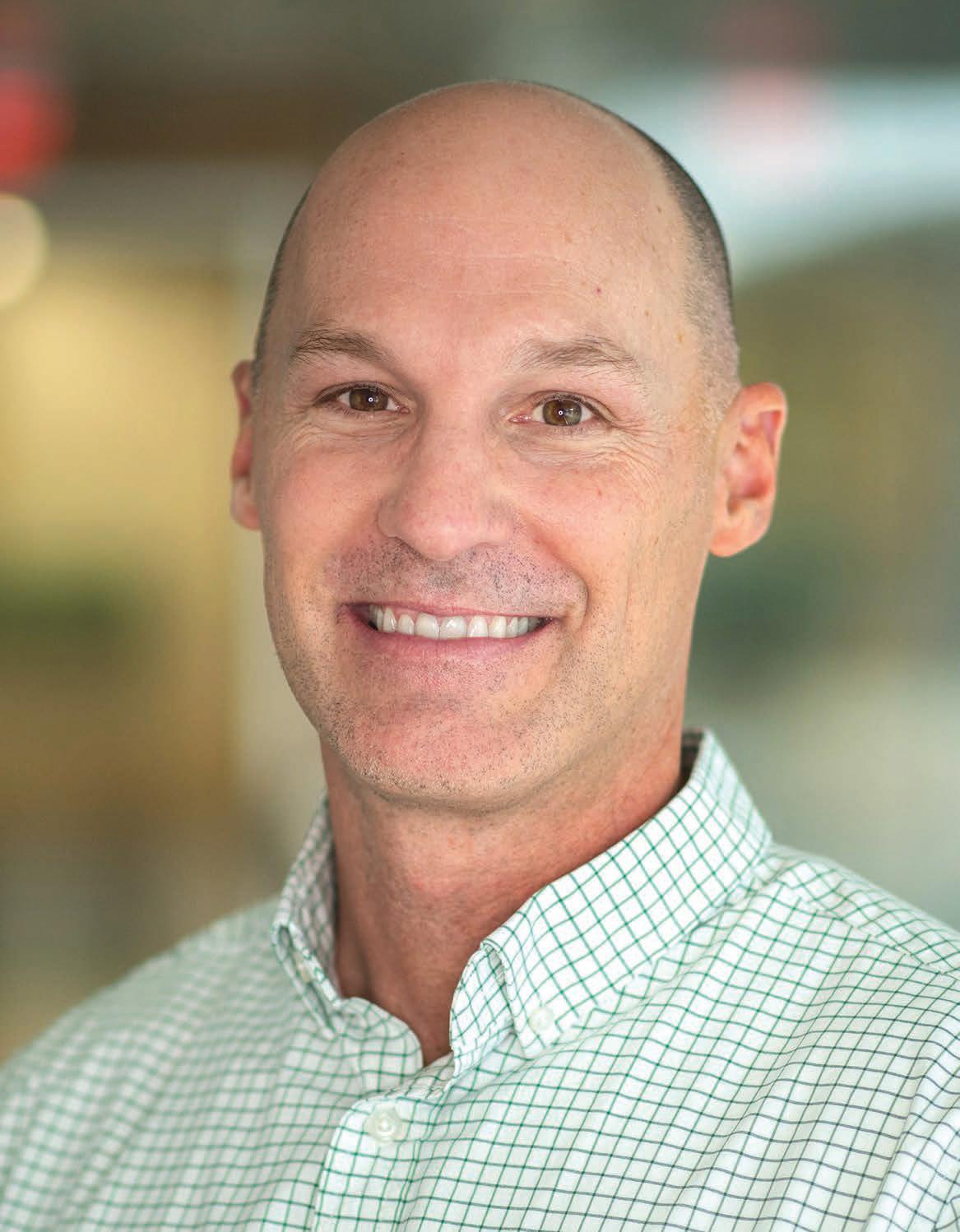
Sylvester is an internationallyrecognized leader in the area of ultra-low power microprocessor design. He and his collaborators created the world’s smallest computer, called the Michigan Micro Mote (M3), much of which is currently being manufactured overseas. Ready to take advantage of
the new opportunities presented by the signing of the CHIPS Act, Sylvester offers his perspective on this transformative event.
WHY IS THERE A CHIPS AND SCIENCE ACT?
The main goal of the Chips Act is to reignite semiconductor manufacturing in the United States, which has largely moved overseas. About $39B of the $52.7B budgeted over the next five years will be used for this purpose.

The current practice of designing chips, and then sending them to a large foundry to build them, began in the 1990’s and really took off in the 21st century. Companies moved to this so-called fabless model, or foundry model, as the cost of making more complicated chips in their own facilities became too expensive. The TSMC foundry in Taiwan emerged as a worldwide leader, and supply met demand for a number of years.
However, by 2020, the year the CHIPS Act was first introduced into Congress, many industries (and consumers) in the U.S. had been negatively impacted by a
8 | PEOPLE POWERING INNOVATION
“ECE departments can play a big role in developing a workforce for the expanding semiconductor industry in the U.S.”
—Prof. Dennis Sylvester
The CHIPS and Science Act of 2022 promises to revitalize the U.S. semiconductor industry. Dennis Sylvester offers his perspective on what it means for ECE.
Dennis Sylvester, Edward S. Davidson Collegiate Professor of Electrical and Computer Engineering
shortage of chips, making it both an economic and national security issue. The pandemic contributed to this shortage, as did an increasing demand for chips in general. The auto industry has been hit the hardest, followed by consumer electronics, and the list goes on (Goldman Sachs identified 169 industries negatively impacted by the chip shortage).
The CHIPS and Science Act will support a ramping-up of semiconductor foundries within the U.S. to meet this demand, and keep associated jobs in this country. The Act has already impacted a number of companies which have announced plans to invest billions of dollars to revamp their own chip manufacturing capabilities.
After the foundries, which are clearly the most expensive part, there are three primary areas of focus in the CHIPS Act: workforce development, core research, and translational activities, meaning moving technology from academia to industry.
HOW CAN ECE DEPARTMENTS CONTRIBUTE TO WORKFORCE DEVELOPMENT?
ECE departments can play a big role in developing a workforce for the expanding semiconductor industry in the U.S., as can related disciplines such as materials science. For example, we can develop new courses, new certificate programs, and new degree specialties. We can also develop, or continue to offer, continuing education programs for those who are already working in an adjacent field and want to transition into this growing area.
One thing smaller departments in particular can do if they want to emphasize this as a growth area is to target specific semiconductor companies either locally or nationally and sponsor them at their career fairs, or invite them to come give a tech talk. Building this engagement could result
in these companies inspiring and ultimately recruiting your students.
Looking beyond research 1-type universities, smaller colleges and even community colleges can become involved in training individuals for the expected job growth in this area. Many jobs at the foundries will be more technician oriented, and won’t require a master’s or PhD degree. But they will require specialized training in order to maintain the equipment, which are these big, huge, complex, laser-based or plasma-based devices.
One goal of the CHIPS Act is to bring jobs to more rural regions of the country. Intel has already announced that they are opening two new plants near Columbus, Ohio at an initial cost of $20B.
These foundries bring with them an entire ecosystem of supporting companies (and jobs) for activities such as packaging, testing, printed circuit board manufacturing, or even to just supply chemicals to the fabs. Many of those jobs are currently overseas as well.
WHAT
ARE SOME EXAMPLES THAT MICHIGAN HAS DONE TO SUPPORT WORKFORCE DEVELOPMENT IN THE SEMICONDUCTOR INDUSTRY?
Michigan has always been strong in microelectronic and semiconductor research. We have among the largest number of graduate students in these fields in the country. And we have one of the finest cleanrooms in the country with the Lurie Nanofabrication Facility.
One of the things we’ve done in the past couple years is to overhaul and expand our core courses on semiconductor and MEMS fabrication that introduce senior level UG and first year grad students to the cleanroom. These classes train students from all kinds of disciplines to be able to understand how to use the equipment – what the work flow is like, what the bottlenecks are, and things like that.
I personally think just the act of getting students into a cleanroom to whet their appetite for this type of work is a great step toward helping increase the workforce in this area, even if they’re not going to be in a cleanroom or doing research in the area.
Summer is a great opportunity to reach out to younger students. We’ve done that with one of our research centers where we brought in STEM students from Detroit and other less advantaged areas to experience ECE research in general and the cleanroom in particular. We’ve done the same with one of our Electrify Tech Camps, though that’s been on hold the past couple years due to the pandemic.
My own research area is circuits, and there is a renewed push by companies to have students become more involved in the entire design and fabrication flow that they might see when they’re in industry. For example, Apple supported a design contest and a tape out class in my last class, and they’ve done this at other schools. In a
PEOPLE POWERING INNOVATION | 9 ECE RESEARCH
“Michigan has always been strong in microelectronic and semiconductor research. We have among the largest number of graduate students in these fields in the country. And we have one of the finest cleanrooms in the country.”
—Prof. Dennis Sylvester
future class, they’ll support fabrication of some of the chips if the students are willing to test them after getting them back.
This is similar to an in-class AMD Student Design Contest we had in previous years. Mike Flynn has done the same in two of his courses with support from Analog Devices and Apple. KLA has supported courses as well.
Our own students have taken the initiative to establish a Student Chapter of the IEEE Solid-State Circuits Society. Their goals include mentoring of younger students and fostering stronger relationships with industry. And our undergraduate student groups regularly invite companies to campus for Tech Talks.
To give you an idea of what we’ve done in terms of our graduate programs, we have a new master’s in engineering (MEng) program, with a specialty in microelectronics and IC design. The MEng program is designed for students who know what they want to do, and know they want to join industry when they graduate.

CAN YOU COMMENT ON KEY ASPECTS OF THE CHIPS ACT AS IT PERTAINS TO RESEARCH?
The CHIPS Act includes up to four microelectronics science research centers which are expected to be large collaborative efforts with significant funding. Details and RFPs should be coming out in the next few months. This is in addition to increased funding for microelectronics research in general, and specific research related to wireless technologies, energy innovation, clean water, and artificial intelligence for national security.
I also think that there are big growth opportunities for institutions looking to improve their infrastructure in this area, such as building a cleanroom, or improving their infrastructure in the physical sciences in general.
AND HOW ABOUT THE TRANSLATIONAL ACTIVITIES AND INDUSTRIAL PARTNERSHIPS, WHICH YOU STATED WAS AN ADDITIONAL MAJOR FOCUS OF THE CHIPS ACT?
The CHIPS and Science Act places a strong emphasis on moving from basic research to products that advance the
state of microelectronics. If departments are not doing this already, they should probably make sure they highlight what they are doing in terms of moving innovations in research to the marketplace. At Michigan, ECE researchers are leaders among the entire university for generating translational research, as indicated by new U.S. patents, inventions, and startup companies. Most of our startup companies have grown out of research in the area of microelectronics, solid state and nanotechnology – all relevant to the semiconductor industry.
Some examples of forging stronger partnerships with industry have been already mentioned. The automotive industry is a huge customer for semiconductor manufacturing, as one example. And in this industry, there’s also lidars, radars, all kinds of optical or RF devices, sensors, as well as the interface circuits that are going into these cars. So there’s great potential for relationships being built to support these cool trends, which will also impact education as well as research.
FINAL THOUGHTS?
The field of electrical and computer engineering has always been a leader in new technology and translational research. The CHIPS and Science Act is a huge opportunity for departments to capitalize on what they’re already doing, as well as sharpen their focus for the future.
10 | PEOPLE POWERING INNOVATION
High
school students in the LNF participating in ECE’s Electrify Summer Camp
“Many of our startup companies have grown out of research in the area of microelectronics, solid state and nanotechnology – all relevant to the semiconductor industry.”
—Prof. Dennis Sylvester
Keeping Those Pesky Nanoparticles in Place
A new method for manufacturing devices that require precisely sized and positioned micro- and nanoscale particles has been developed by Prof. Jay Guo and collaborators at Seoul National University of Science and Technology. It is suitable for a wide array of assembly of micro- and nanoscale objects, and useful for electronic devices and in biological applications.
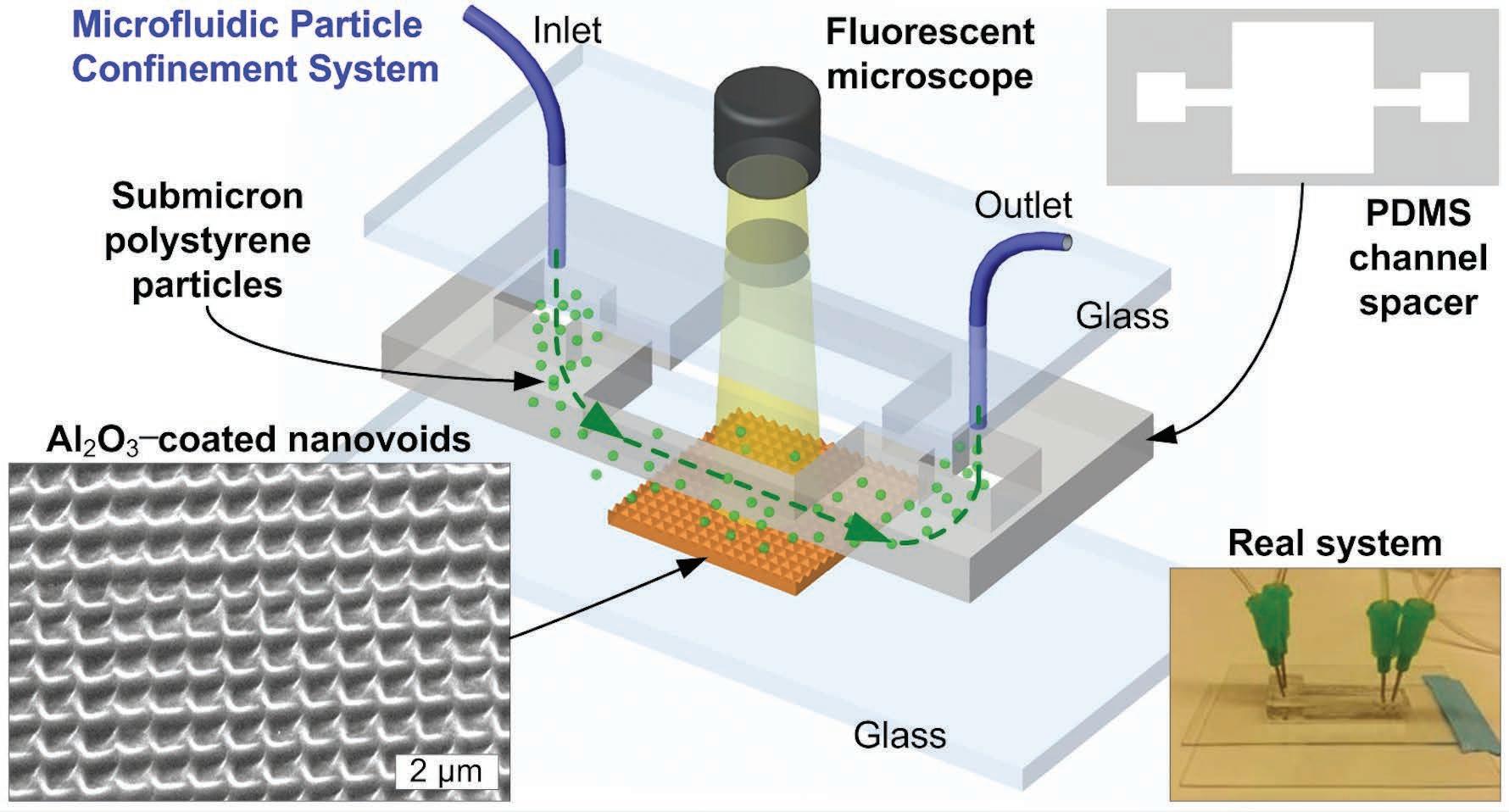
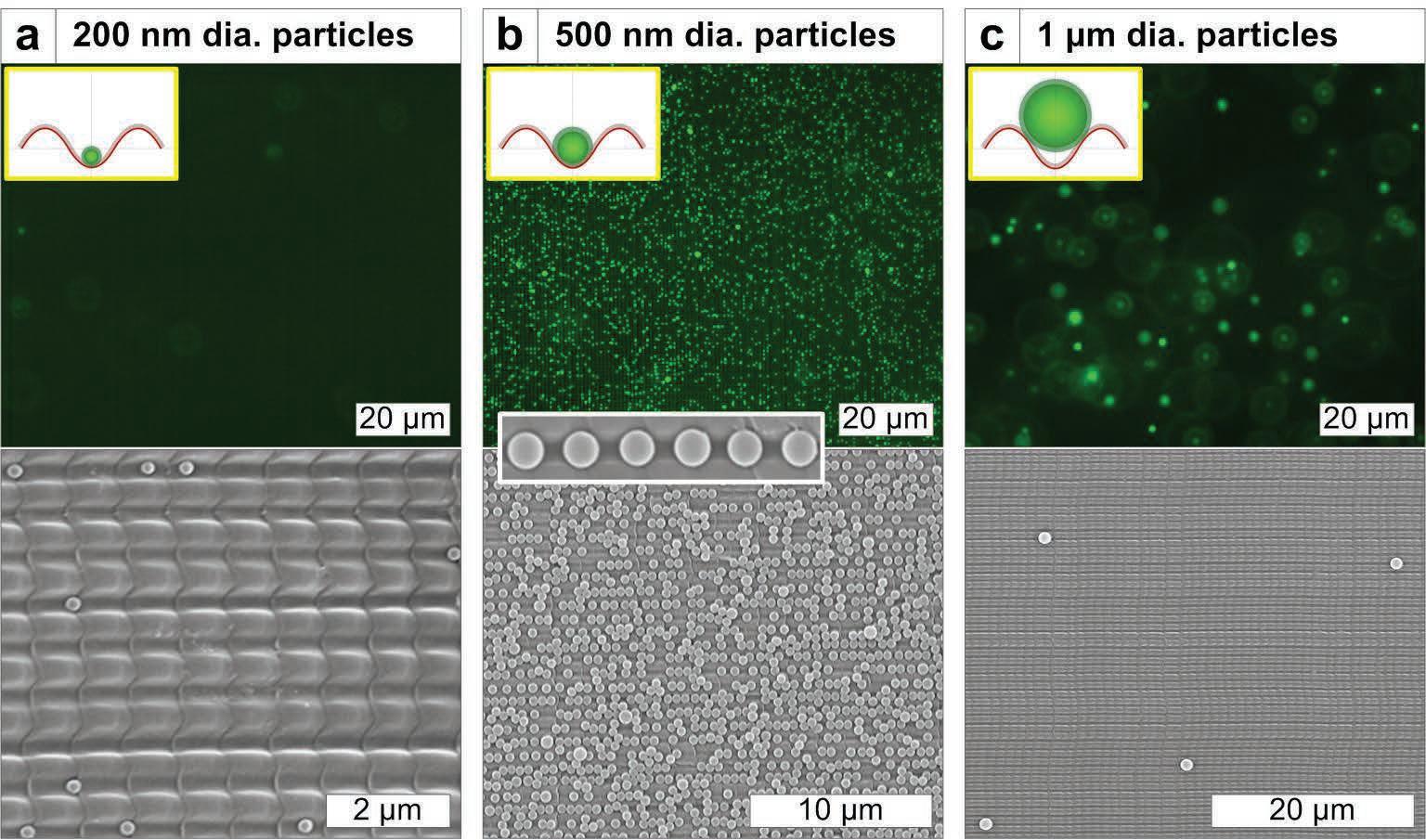
“It’s very hard to regulate things in the microscopic and nano-scale. You want the particles to sit there, and they won’t,” said Guo. “We found a way to sort and localize large quantities of particles, and we can do it in a very scalable fashion.”
With this ability, engineers would be able to more efficiently manufacture and assemble photonic crystals, filtration devices and biological assays, create more sensitive sensing devices, and much more.
Guo has been working in the area of nanomanufacturing for decades, beginning with his work on roll-to-roll nanoimprint lithography. He switched to the current methodology of nanopatterning relying only on a sliced silicon wafer because of its relative simplicity and speed.
The new method adds an electric charge, which seems to make all the difference.
A key aspect of the technique for creating these nanovoids is its scalability. The 2D-DNI process creates specifically-sized nanovoids at high speed (~1 m/min or faster), which easily beats the competition by an order of magnitude. It is also a relatively low-cost technique.
While Guo’s primary focus was the application of this technique to building ever-shrinking and high-density
electronic systems, he believes it could also have an impact on the future of biomedical devices, as well as the ability of medical researchers to investigate proteins, cancer cells, and bacteria interacting with charged surfaces.
PEOPLE POWERING INNOVATION | 11
ECE RESEARCH
Fluorescent microscope images (top row) and SEM images (bottom row) of the particles trapped to the Al2O3-coated nanovoid structures, with the diameters of 200 nm (a), 500 nm (b), and 1 μm (c). The upper-left insets show the schemes of each case. The middle inset to panel b shows the enlarged SEM image disclosing the 500 nm diameter particles trapped in nanovoids in an orderly fashion.
Microfluidic Particle Confinement System


12 RESEARCH FULL SPEED AHEAD on Manufacturable Semiconductors for Next-Generation Electronics 12 | PEOPLE POWERING INNOVATION VR/AR • WATER PURIFICATION •QUANTUM COMPUTING •COMMERCIALIZATION 5G/6G COMMUNICATIONS • NEW MATERIALS
Graphene-hBN Breakthrough for Creation and Commercialization of Next-gen Electronics
In a discovery that could speed research into nextgeneration electronics and LED devices, Prof. Zetian Mi’s team has developed the first reliable, scalable method for growing single layers of hexagonal boron nitride (hBN) on graphene. This method can produce large sheets of highquality hBN with the widely used molecular-beam epitaxy process.
Graphene-hBN structures can power LEDs that generate deep-UV light, which is impossible in today’s LEDs. In turn, deep-UV LEDs could drive smaller size and greater efficiency in a variety of devices - including lasers and air purifiers.
“The technology used to generate deep-UV light today is mercury-xenon lamps, which are hot, bulky, inefficient and contain toxic materials,” Mi said. “If we can generate that light with LEDs, we could see an efficiency revolution in UV devices similar to what we saw when LED light bulbs replaced incandescents.”

Hexagonal boron nitride is the world’s thinnest insulator while graphene is the thinnest of a class of materials called semimetals, which have highly malleable electrical properties and are important for their role in computers and other electronics.
Bonding hBN and graphene together in smooth, single-atomthick layers unleashes a treasure trove of exotic properties. In addition to deep-UV LEDs, graphene-hBN structures could enable quantum computing devices, smaller and more efficient electronics and optoelectronics and a variety of other applications.
“Researchers have known about the properties of hBN for years, but in the past, the only way to get the thin sheets
needed for research was to physically exfoliate them from a larger boron nitride crystal, which is labor-intensive and only yields tiny flakes of the material,” Mi said. “Our process can grow atomic-scale-thin sheets of essentially any size, which opens a lot of exciting new research possibilities.”
This research came out of a broad coalition of researchers who brought their expertise to solving the problem.
Mi and his team, including Ping Wang, David Laleyan, Yuanpeng Wu, Ayush Pandey and Ding Wang, developed the materials synthesis process and performed structural and optical studies. For the mathematical theory that underpins some of the work, Prof. Mackillo Kira and his PhD students Woncheol Lee and Qiannan Wen worked with Emmanouil Kioupakis, an Associate Professor of Materials Science and Engineering at U-M, and Diana Y. Qiu, an Assistant Professor of Mechanical Engineering and Materials Science at Yale University. Detailed structural and electrical characterization were performed by Jay Gupta, Professor of Physics at Ohio State University, and his group members Joseph Corbett and William Koll, and by Robert Hovden and John Heron, Assistant Professors of Materials Science and Engineering at U-M, and their group members Jiseok Gim and Nguyen M. Vu.
“Experimenting with large amounts of pristine hBN was a distant dream for many years, but this discovery changes that,” Mi said. “This is a big step toward the commercialization of 2D quantum structures.”
PEOPLE POWERING INNOVATION | 13
Left: Assistant Research Scientist Dr. Ping Wang and doctoral student Woncheol Lee in the MBE Lab, where they helped produce the first method for produc ing high-quality, wafer-scale hexagonal boron nitride, a discovery that could advance next-generation computing and LED devices. Photo: Silvia Cardarelli
“If we can generate that light with LEDs, we could see an efficiency revolution in UV devices similar to what we saw when LED light bulbs replaced incandescents.”
ECE RESEARCH
—Zetian Mi
Overcoming the Efficiency Cliff of Red Micro-LEDs for AR/VR
Red LEDs are currently used in applications where size and clarity is not an overriding concern, such as street lights and other types of outdoor lighting. The same LEDs, however, fall short when needed for close up work, such as augmented and virtual reality (AR/VR) devices.
With virtual reality putting displays within inches of the user’s eyes, researchers have been exploring how to make extremely small pixels. Nanowire LEDs are approximately 10,000 times smaller than standard phone display pixels, but until now, the red micro LEDs haven’t been efficient enough to be practical.
Prof. Zetian Mi’s team broke through the efficiency barrier and developed red LEDs that are nearly three orders of magnitude smaller in surface area than previously reported devices, while exhibiting an external quantum efficiency of ~1.2%, matching many conventional micro-LEDs of any color.



The researchers say that with proper packaging and further developments, the device efficiency will exceed that used in phone pixels – but with sizes two to three orders of magnitude smaller. These highly efficient, bright, and robust micro LEDs offer a promising future for not only crystal clear VR headsets, but for future on-chip integration with blue and green LEDs.
The ultimate goal is to integrate red, blue, and green LEDs on a single chip, which would be feasible with the materials used in this work.
Postdoctoral researcher Ayush Pandey helped plan the parameters of the nanowires for growth in the MBE system, and then fabricated the actual LEDs in the Lurie Nanofabrication Facility.
Photo: Silvia Cardarelli
14 | PEOPLE POWERING INNOVATION
ECE doctoral student Yakshita Malhotra helped plan the parameters and then grow the nanowire crystals using the MBE system in Prof. Mi’s lab. Photo: Silvia Cardarelli
“Fundamental research on new materials and their properties has a long history of leading to novel physical discoveries and multifunction and cross-field applications.” —Dr. Ping Wang
Breakthrough in Ferroelectric III-V Semiconductors
Arecent breakthrough in ferroelectric III-V semiconductors has been followed by several advancements and new funding to bring the technology closer to market.
“Fundamental research on new materials and their properties has a long history of leading to novel physical discoveries and multifunction and cross-field applications,” said Assistant Research Scientist Ping Wang, a member of Prof. Zetian Mi’s group.
Mi’s group has been investigating gallium nitride (GaN) semiconductors for more than a decade, and recently achieved single-crystalline high-quality ferroelectric III-V semiconductors using molecular beam epitaxy (MBE), in collaboration with Prof. John Heron’s group in the Department of Materials Science & Engineering. Key to this breakthrough was the introduction of scandium (Sc) to the materials mix. Using MBE to grow the materials makes the process compatible with some of the mainstream manufacturing.
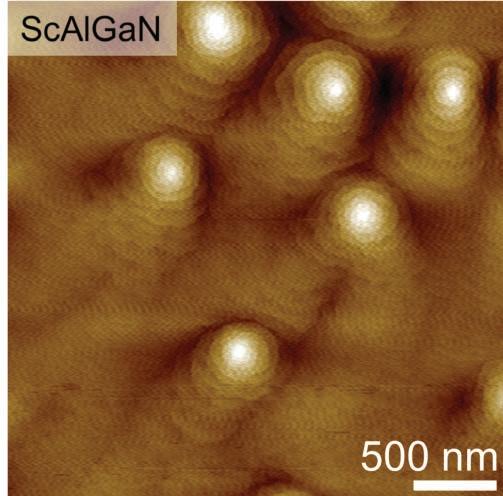

In related work, Mi collaborated with Prof. Elaheh Ahmadi to investigate the viability of N-polar ScAlN for use in HEMT structures. They achieved high sheet electron concentration and mobility in GaN-based HEMT structures, demonstrating its compatibility for use in next-generation high-frequency and high-power electronic devices, as well as applications requiring piezoelectricity and ferroelectricity.

In yet another project, Mi’s group has been attempting to improve the material quality of ScAlN to satisfy the requirements for high-performance electronic and optoelectronic devices, in collaboration with Prof. Robert Hovden’s group in the Department of Materials Science & Engineering. Following up on what turned out to be a beautiful accident in the lab, they achieved fundamental improvements that are crucial for Sc-III-nitrides-based device architectures, with promising future applications in photonic, optoelectronic, and ferroelectric devices.
“The addition of scandium in GaN-based materials, one of the most produced semiconductors in the world, offers a revolutionary platform for next generation high frequency/ power electronics, some key technologies of 5G/6G communications, and ultraviolet optoelectronics for air/water purification, to name a few. We are excited about contributing to this emerging revolution.” said Mi.
Atomic force microscopy images of ScAlN (above) and ScAlGaN (below) grown by molecular beam epitaxy.
VR/AR • WATER PURIFICATION •QUANTUM COMPUTING •COMMERCIALIZATION 5G/6G COMMUNICATIONS • NEW MATERIALS PEOPLE POWERING INNOVATION | 15
FAIR AND SUSTAINABLE ENERGY SYSTEMS
Energy Justice
Prof. Johanna Mathieu is co-leading a new project that aims to increase the understanding of residential energy consumption in three majority African American and Hispanic neighborhoods in Detroit. With a focus on low and moderate-income (LMI) households, the project is a collaboration with R&D company Pecan Street Inc. and Detroit-based non-profit Ecoworks.
“The overall goal is to capture highresolution data to help design new programs for energy assistance and energy efficiency, as well as new electricity rates for low income customers,” Mathieu said. “We want to help them save money, and this can also help save energy.”
On average, energy costs for African American and Hispanic households are 43% and 20% higher, respectively, than non-Hispanic white households. Some Detroiters spend up to 30% of their monthly income on home energy bills, which places the city among the top 10 nationally in a category that researchers call household “energy burden.” These disproportionately higher energy burdens result in household energy
The project is funded with a U-M Anti-Racism grant in partnership with the National Center for Institutional Diversity. Mathieu is also collaborating with Prof. Tony Reames from the School for Environment and Sustainability, Research Prof. Carina Gronlund from the Institute for Social Research, and Prof. Marie O’Neill from the School of Public Health.
insecurity, or the inability to adequately afford their energy costs. Energy insecurity leads to or exacerbates a host of physical, social, economic, and health issues in communities of color.
must solve the other,” said Pecan Street CEO Suzanne Russo. “This team will leverage our decade of data and analysis expertise to identify the gaps in information and to develop solutions that ensure the clean energy transition is a just transition.”
In partnership with Ecoworks, the team will recruit 75 households for the study. A key goal is to ensure that all participants receive substantial benefit for contributing to the project.
By obtaining detailed reports of energy consumption for these households, researchers hope to improve interventions aimed at reducing disparities in household energy insecurity. Data collection will be focused on capturing everything from power, voltage, current, total harmonic disturbance and more from each circuit in the house, all in timescales of seconds. That data will then be made accessible to researchers worldwide through Pecan Street’s Dataport.
“Climate change and racial injustice are inextricably linked. To solve one, we
“The important thing is we’re collaborating with community partners who understand the community, and they’re telling us how to best serve the community in the process,” Mathieu said. “That’s why I feel like this is going to go somewhere, and I’m excited.”
16 | PEOPLE POWERING INNOVATION
“We want to help them save money, and this can also help save energy.”
—Johanna Mathieu
Working Together for Grid Stability
The rapid growth of renewable energy prompted an international task force to study its impact on the stability of worldwide power systems. The task force established new definitions and classifications of power system stability in an effort to enhance communication among researchers, manufacturers, and utility companies.
In Europe and the United States, wind has been the primary source of renewable energy, but solar power is undergoing rapid development – especially in places like Australia and the sunnier parts of the U.S.
One of the issues that the power and energy industry has been facing is increasing use of specially designed power electronic inverters to connect renewable energy to the grid. These devices, which the task force is calling converter interfaced generation (CIG) technologies, also connect energy storage systems, such as batteries, to the grid.
CIGs are programmed to respond to disturbances on the grid in a way that seeks to maximize their stability. But different manufacturers adopt different control strategies, which may interact badly under rare grid conditions. Furthermore, interactions between CIGs and traditional synchronous
generators are still not well understood, with studies suggesting such interactions could threaten the overall stability of the grid.
“A blackout in Australia occurred because of unanticipated interactions between wind generation and the grid,” said task force member Ian Hiskens, Vennema Professor of Engineering.
Convening task forces to define and classify what is happening on the grid is a long-standing tradition (similar reports have been published in 2004, 1982, 1978, 1966, and 1948), but these inverter-based controls have thrown a real curve ball at the industry.
The information provided by the task force will hopefully be used by researchers, manufacturers and utility companies. For example, problems have arisen where a manufacturer of CIGs built certain characteristics into their equipment, but didn’t disclose those characteristics to the utility company. Meanwhile, utility companies are creating operational criteria while oblivious to the true behavior of the equipment.
PEOPLE POWERING INNOVATION | 17 ECE RESEARCH
Also, “you have different manufacturers installing equipment on the same grid – using different control loops and technology,” said Hiskens. “Manufacturers thoroughly test their equipment to ensure it works fine in the lab and in isolated field tests, but there’s no opportunity to check that equipment from different manufacturers will work well together.”
The report is expected to motivate and enable future research to establish ways of checking for new phenomena that may occur on the grid, and to provide analysis tools and establish standards.
Summary graphic of the overall classification of power system stability. Resonance stability and converter-driven stability are both new stability classes, motivated by the increasing use of CIGs in national power systems such as the U.S. grid.
Quantum Physics meets Electromagnetics in a New Theory
Prof. Eric Michielssen and former postdoctoral researcher Utkarsh Patel took a technique common to the field of quantum physics and, in a novel twist, applied it to their field of electromagnetics. In the process, they came up with an entirely new theory for understanding electromagnetic wave propagation.

“It is a new way of characterizing time delays experienced by electromagnetic waves as they interact with devices and complex environments,” said Michielssen, the Louise Ganiard Johnson Professor of Engineering.
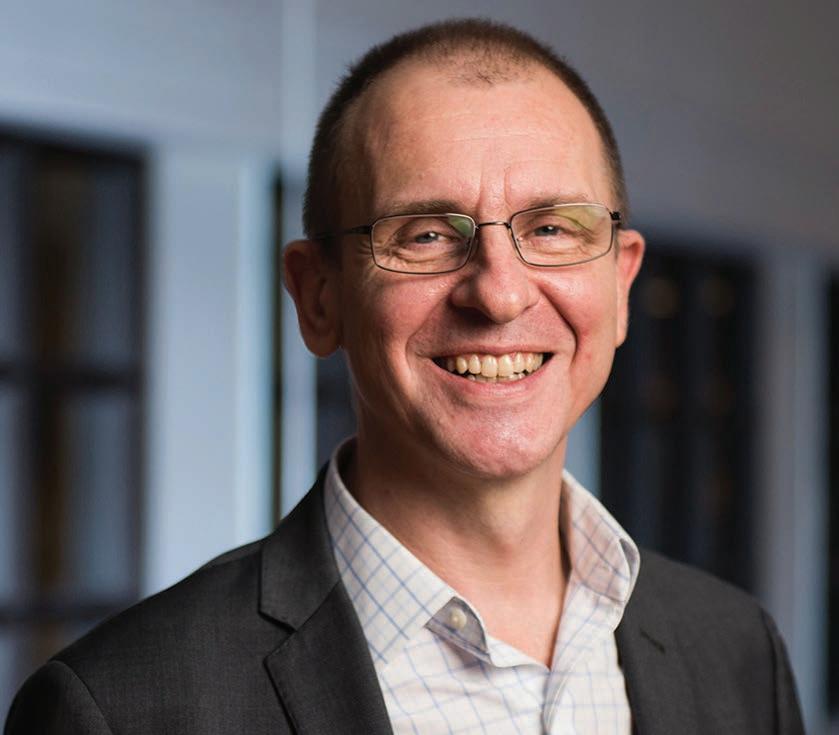
Engineering advances often describe continual optimization, but Michielssen and Utkarsh had the novel idea of applying Wigner-Smith techniques, developed about 60 years ago to characterize time delays experienced by interacting fields and particles and commonly used in physics, to computational electromagnetics.
“There were similarities in the equations, and there were interesting applications in photonics which made this more interesting,” said Patel, a former postdoctoral researcher now at AMD. “We thought we could come up with new ways to design antenna arrays, for example, or come up with new devices where we need to precisely control the time delay between the signals.”
Potential applications include the design of antennas, microwave devices, and novel material systems.
18 | PEOPLE POWERING INNOVATION
Prof. Utkarsh Patel
Prof. Eric Michielssen
Automating Communication Systems for Wireless Networks, IoT, and Autonomous Systems
Collaborating with ECE alumnus Jung Hyun Bae (now at Samsung) and Samsung researchers Hamid Saber and Homayoon Hatami, ECE doctoral student Mohammad Vahid Jamali invented a new class of neural channel codes that the team dubbed Product AutoEncoders (ProductAEs).
“ProductAE enables designing large neural channel codes that beat state-of-the-art performance with potential applications in the design of the next generations of wireless networks,” said Jamali. “This work could play a critical role in the next generation of wireless networks, IoT, and autonomous systems, among others.”

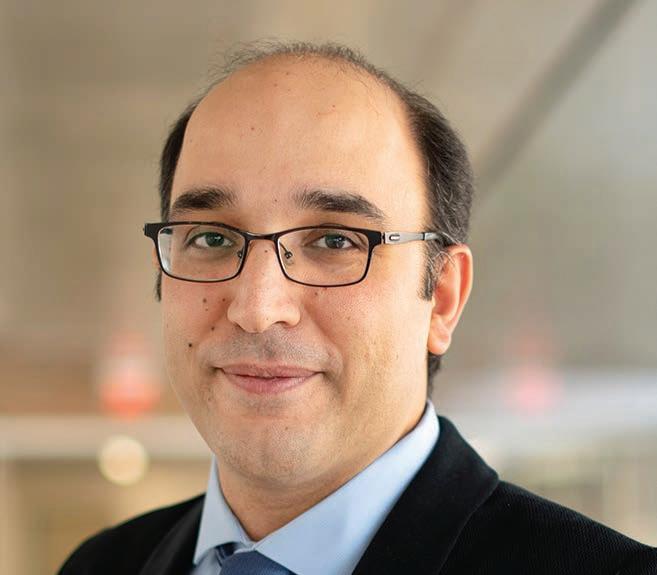
Channel encoders and decoders are essential components of any communication system. They enable reliable communication by protecting the transmission of messages across a
A
random noisy channel. This is especially important as the world becomes more reliant on wireless systems, including autonomous cars and an ever-expanding Internet of Things (IoT).
However, it is extremely complex, if not impossible, to train relatively large channel codes due to dimensionality issues caused by huge code spaces. ProductAE provides an efficient framework for training and constructing large neural codes based on smaller code components.
The research earned the team a Best Paper award at the 2022 IEEE Int. Conference on Communications. Jamali is advised by Prof. Hessam Mahdavifar.
“Non-real”
Approach to Data
Massive amounts of data are being generated, transmitted, received, processed, and stored at an unprecedented scale every day. The sheer amount of the data available is outstripping our ability to make use of it.
Professors Laura Balzano and Hessam Mahdavifar are developing new ways to compress data as part of an investment from the DOE’s Office of Advanced Scientific Computing Research. According to Balzano and Mahdavifar, the potential applications are vast and encompass almost any everyday scenario involving large volumes of data including healthcare, retail and customer service, and banking as well as more specific engineering and science applications such as genetics, neuroscience, and environmental sensing.
The work they are doing involves generating “randomized algorithms,” which are algorithms that include some form of sampling or randomness in their approach for dealing with massive data, enabling predictive modeling and simulation, and carrying out scientific analysis.
The team says they use randomization to create methods that work well on a lot of different datasets. They are known to be powerful methods in a wide range of scientific domains including all aspects of data processing, storage, and communications. The project is called, “Get Non-Real: Randomized Sketching for High-Dimensional Non-Real-Valued Data.”
PEOPLE POWERING INNOVATION | 19 ECE RESEARCH
Prof. Laura Balzano
Prof. Hessam Mahdavifar
Walking and Slithering aren’t as Different as You Think
Unlike the dynamic motion of gliding birds and sharks and galloping horses—where speed is driven, at least in part, by momentum—every bit of speed for ants, centipedes, snakes and swimming microbes is driven by changing the shape of the body. This is known as kinematic motion.
Paying attention to kinematic motion could change the way roboticists think about programming many-limbed robots.
Prof. Shai Revzen, director of the Biologically Inspired Robotics and Dynamical Systems (BIRDS) Lab, is used to getting inspiration and insights into robotic motions by studying animals. Confounding popular thought, he and his collaborators came up with a single mathematical model that can be applied to animals, and robotic devices, having different numbers of legs (or feet—or whatever part of the body is in contact with the ground).
To test the theory, the team took a known model that describes swimming microbes and reconfigured it to be used with their multi-legged robots. The model reliably reflected their data, which came from multipods—modular robots that can operate with 6 to 12 legs—and a six-legged robot called BigAnt.


Data gathered from ants helped to show that many-legged walking, slithering and some kinds of swimming follow the same mathematical model.
The team collaborated with Glenna Clifton, an assistant professor of biology at the University of Portland in Oregon, who provided data on ants walking on a flat surface. While the robot legs slip a lot, up to 100% of the time for the multipods, ant feet have much firmer connections with the ground, slipping only 4.7% of the time. Even so, the ants and robots followed the same equations, with their speeds proportional to how quickly they moved their legs. It turned out that this kind of slipping didn’t alter the kinematic nature of the motion.
“Even when the robot looks like it’s sliding, like its feet are slipping, its velocity is still proportional to how quickly it’s moving its body,” said team member Dan Zhao (MS PhD ECE ME '19 '21).
20 | PEOPLE POWERING INNOVATION ECE RESEARCH
Mimicking a Human Fingertip’s Sensitivity and Sense of Direction for Robotic Applications
With the help of 1.6 million GaN nanopillars per sensor, Prof. P.C. Ku’s research team was able to provide human-level sensitivity with directionality on a compact, easily manufactured system.
As robotic devices such as artificial prosthetics and human-computer interfaces are increasingly integrated into society, researchers have been looking more deeply into the sensitivity of the devices that serve the same function as hands. Human fingertips are remarkably sensitive. They can communicate details of an object as small as 40μm (about half the width of a human hair), discern subtle differences in surface textures, and apply just enough force to lift either an egg or a 20 lb. bag of dog food without slipping. They can also manipulate objects with relative ease.
Engineers have been working to mimic this ability for eventual robotic or prosthetic uses with varying levels of success. Prof. P.C. Ku and
his group have recently reported an improved method for tactile sensing that detects directionality as well as force with a high level of sensitivity. The system’s high resolution makes it uniquely suitable for robotic and HCI applications. It is also relatively simple to manufacture.
As a proof of concept, the team built a sensor, roughly the size of a fingertip, that contains 1.6 million gallium nitride (GaN) nanopillars. GaN was used because of its ability to measure force through its innate piezoelectric property, meaning its ability to generate an electrical charge when stressed.
The elliptical shape and arrangement of the nanopillars are key to its success in being able to detect directionality. Because the sensor is able to determine the direction of the force, it
can then alert a future prosthetic device about whether an object may be falling through its grasp, requiring a tighter grip.
The system does not require complex electrical interconnects, which require very high manufacturing uniformity. It also uses well-known methods of manufacturing that are easily repeatable.
“We are bridging the gap between humans and computers, so maybe we can teach a robot how to feel objects in a way that would be closer to our own capabilities,” said doctoral student Nathan Dvořák.
Conceptual drawing of the tactile sensor in action. Pressure applied to the nanopillars reduces the light emitted by the LEDs.
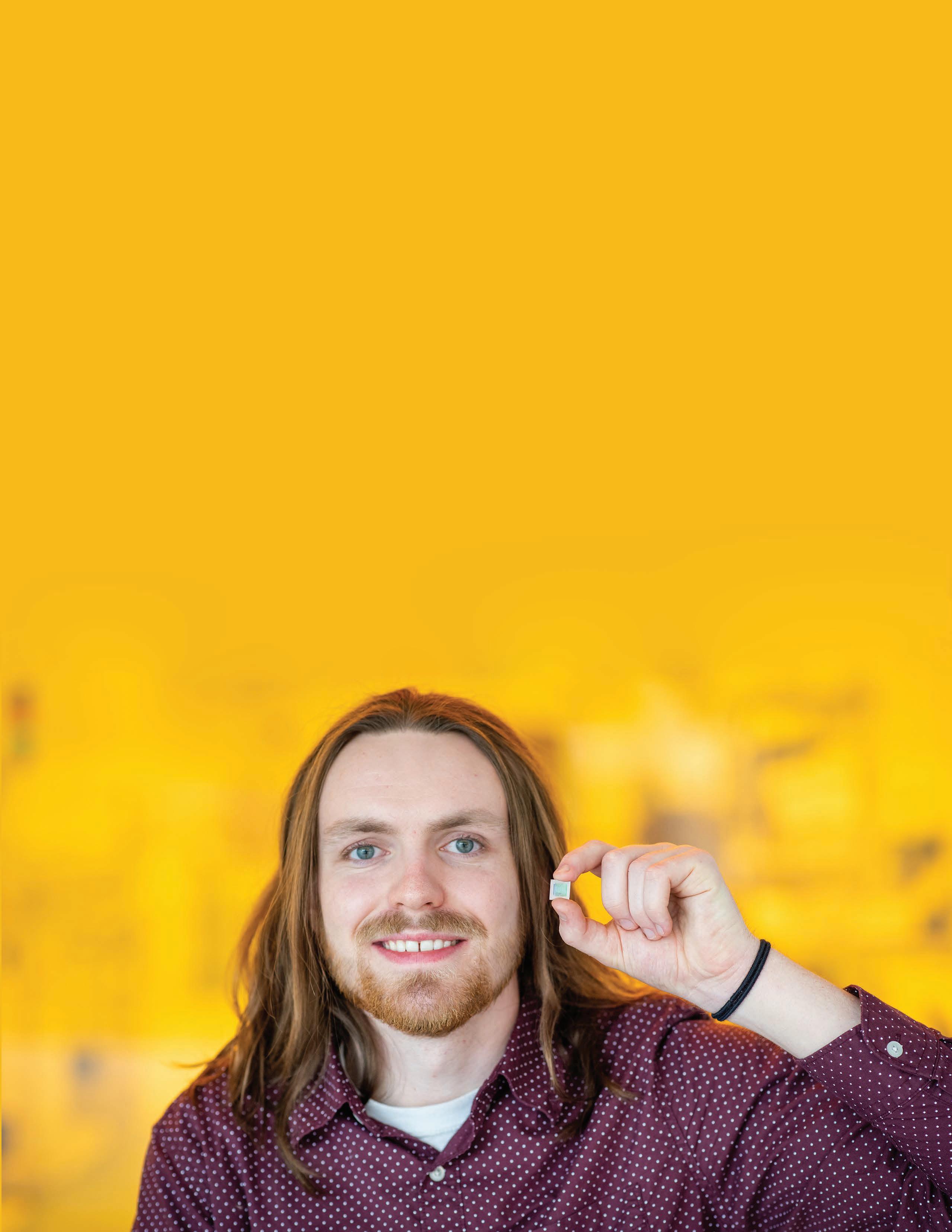 ECE doctoral student Nathan Dvořák holds a prototype sensor. Photo: Silvia Cardarelli
IMAGE SENSOR
ECE doctoral student Nathan Dvořák holds a prototype sensor. Photo: Silvia Cardarelli
IMAGE SENSOR
PEOPLE POWERING INNOVATION | 21
G a N NANOPILLARS
Engineers and Neuroscientists Working Together to Improve BRAIN UNDERSTANDING

22
22 | PEOPLE POWERING INNOVATION
The HectoSTAR
Building on decades of research in neural probes, Prof. Euisik Yoon’s team developed a neural probe with an unprecedented number of micro-LEDs and recording sites integrated on the same neural device.
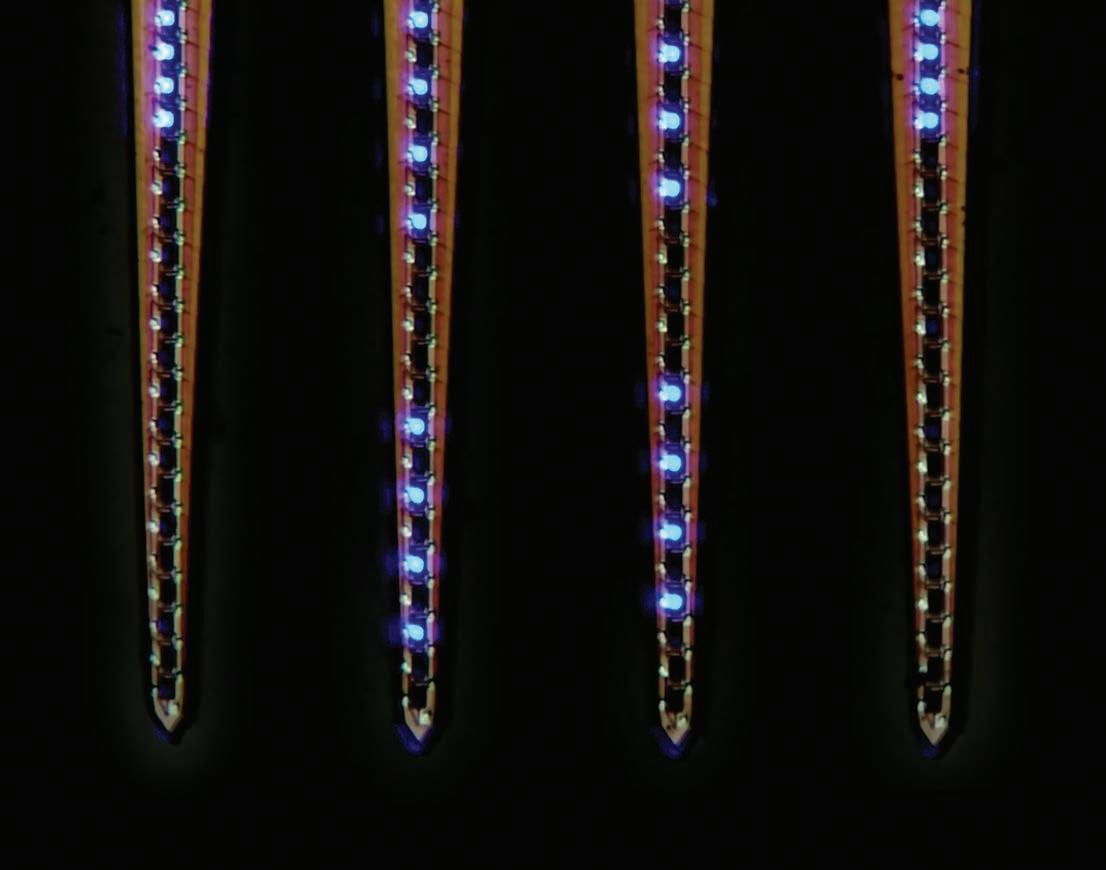
Called the hectoSTAR, the 128 μLEDs and 256 recording electrodes integrated on this device are allowing neuroscientists to track interactions across different regions of the brain for the first time, and this may lead to important insights into treating neurological disorders.
To give an idea of the history of the hectoSTAR, in 2015, Yoon’s team reported a neural probe capable of recording activities from multiple neurons and stimulating the neurons’ activities at a nearly single-cellular resolution. Those probes, the first of their kind, contained 12 μLEDs and 32 recording electrodes. In 2020, Yoon’s team, led by Kim, introduced a more practical microLED probe that allowed high-quality neural signal recording during LED stimulation by removing the large amount of noise that LED stimulation had generated in the recorded neural signal.
However, the next step, increasing the number of optical stimulation sites to 128, was a bit of a nightmare, including not just miniaturization and integration, but control. So Yoon’s team designed an open-source multi-channel μLED controller system to individually control the light being sent to each μLED, and then to process the incoming information from the recording electrodes.
“The result has enabled neuroscientists to increase their understanding of the global connectivity of the brain. We are excited about this new chip,” said Yoon.
“With the hectoSTAR probe, we could address some questions that we were not able to answer before,” said Mihály Vöröslakos, long-time collaborator and neuroscientist at New York University. “Having technology that no one else has gives a rare opportunity to be the first to test these devices.”
The hectoSTAR probe can cover a region spanning the surface of a rodent’s brain, called the cortex, all the way down to the hippocampus in the deep brain. Comprised of four 30-μm thick silicon micro-needle shanks, it is capable of recording from about 1 mm2 area (1.3 mm x 0.9 mm), up to as deep as 6 mm inside the brain.
After two years of development by researchers at the University of Michigan, it worked the first time in real-life conditions. But getting there meant overcoming a number of engineering challenges.
“Nothing was trivial in terms of shrinking things down,” said Kanghwan Kim (MSE PhD EE '15, '20).

PEOPLE POWERING INNOVATION | 23
Doctoral student Eunah Ko works with the hectoSTAR probe in Prof. Yoon’s testing lab.
ECE RESEARCH
“The result has enabled neuroscientists to increase their understanding of the global connectivity of the brain. We are excited about this new chip.” —Prof. Euisk Yoon
Closeup of the four shanks of the hectoSTAR neural probe with some of the selected μLEDs illuminated.
Each probe shank measures 0.07 millimeters across. One of the LEDs, tiny enough to target a single neuron, is illuminated. The receiving electrodes appear as pale spots around the edges of each tip.
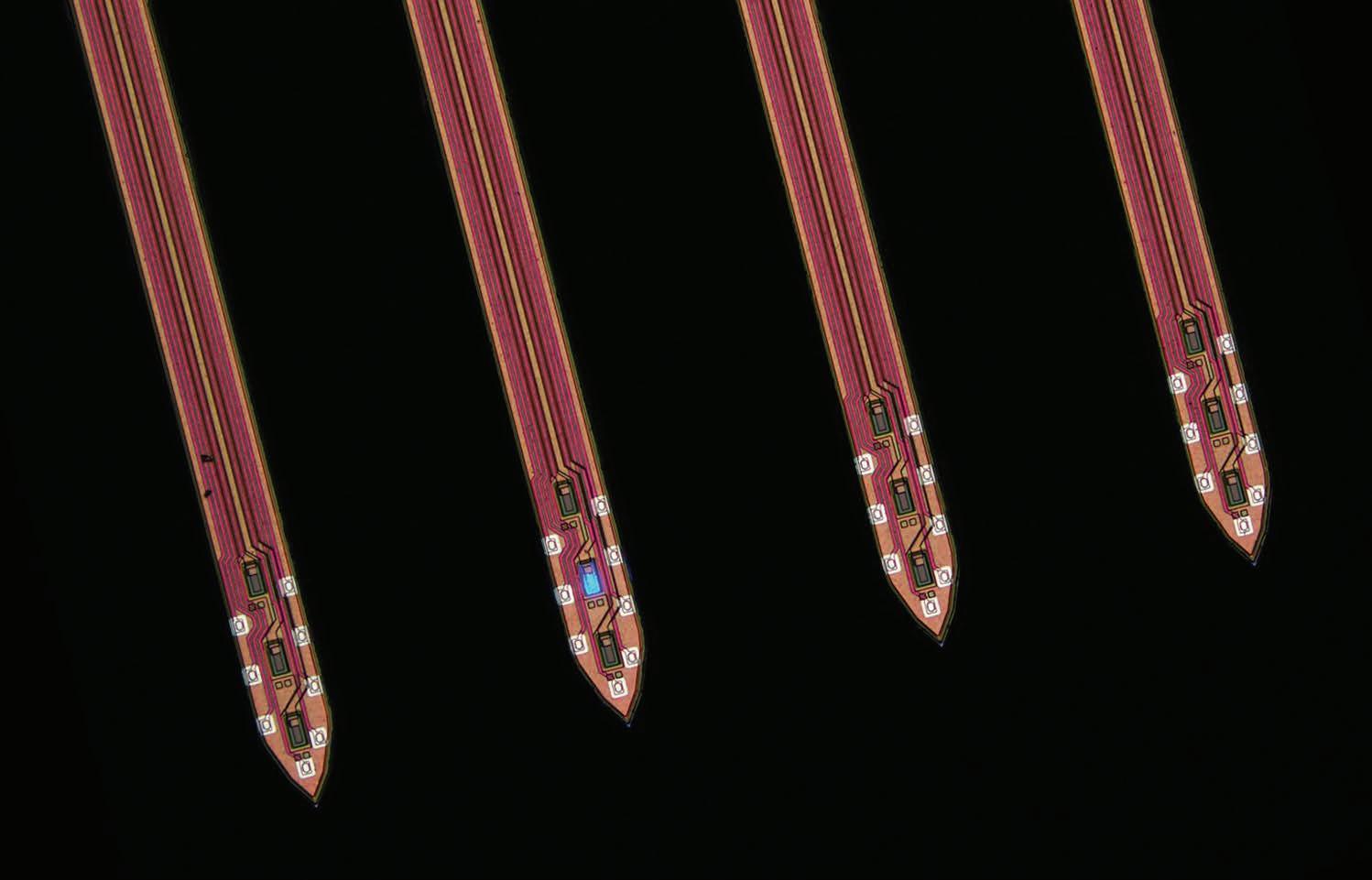
Lessons Learned about the Hippocampus
Prof. Euisik Yoon has been collaborating with György Buzsáki, Biggs Professor of Neuroscience at New York University School of Medicine, since his days as a doctoral student in the late 1980’s working with his advisor and renowned developer of neural probes, Kendall D. Wise, William Gould Dow Distinguished University Professor Emeritus.
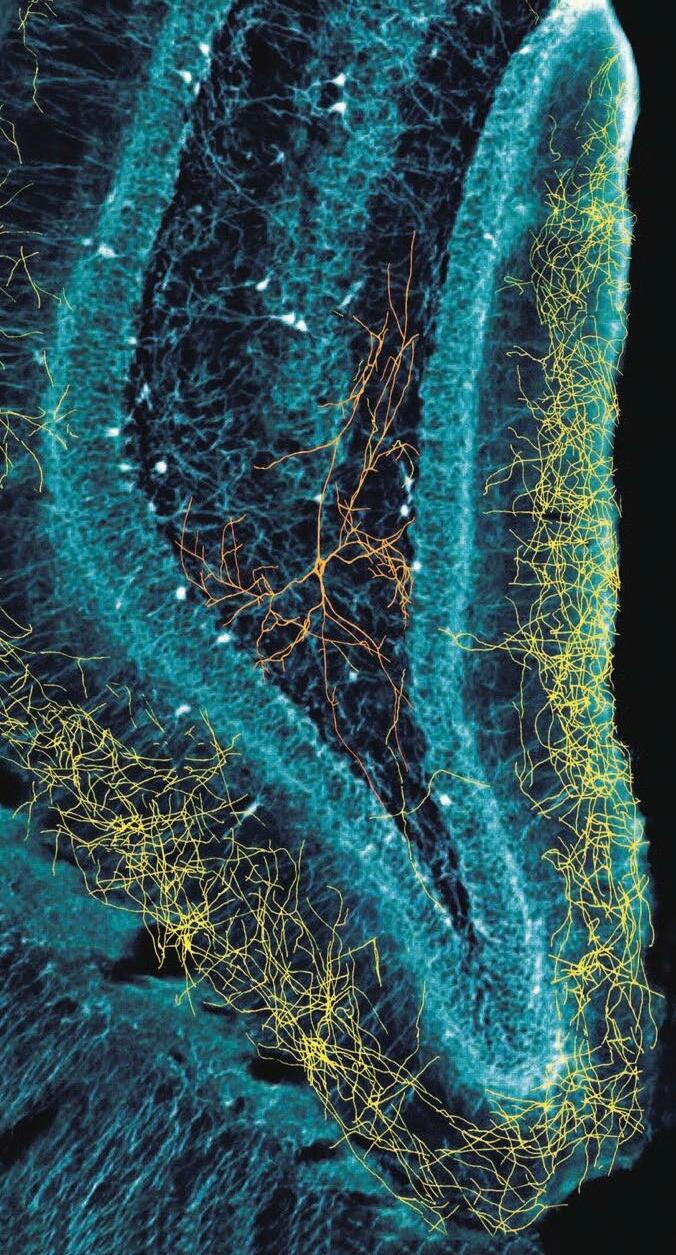
Recently, that collaboration led to a new understanding of how neurons work in the hippocampus of the brain. The finding may settle a 30-year debate about the nature of seemingly inactive neurons, and whether the neurons have unique traits, as currently assumed, or whether they simply take on different functions at different times – as suggested by the research.
“My group has focused on what we call memory cells,” said Buzsáki. “Others have focused on what they call place cells, or time cells, or border cells. Scientists have also named many other types of cells. Euisik’s probes confirmed that they are all the same type of cell. Their different actions are driven by inputs from the neocortex. This is a giant step in brain research – but also just a tiny step compared to what still needs to be known.”
To get those readings, Yoon’s probes activated 900 neurons every few seconds and measured what was happening both when activated by the LEDs, and during the rest times.
“The neural probes used in this study are equipped with LEDs, which are as small as the neurons themselves,” said Yoon. “The LEDs are capable of activating a single neuron, and the electrodes in the probe measure the electrical response of neighboring neurons. We can also activate an individual LED at precise time intervals, which is important for György’s research.”
“Researchers who are interested in smell, vision, motivation, emotions – whatever, can use the same method because Euisik’s electrode allows them to do large-scale measurement of subthreshold activity of neurons, without damaging the neurons,” added Buzsáki.
24 | PEOPLE POWERING INNOVATION
“This is a giant step in brain research – but also just a tiny step compared to what still needs to be known.”
—Prof. György Buzsáki
The hippocampal dentate gyrus. Axon arbor (yellow) of a single dentate interneu rons (orange) innervate tens of thousands of granule cells. Credit: Attila Sik and Prof. György Buzsáki
Machine Learning Begins to Understand the Human Gut
A new computer model developed by Alfred Hero, the John H. Holland Distinguished University Professor of EECS, and an international group of millions of microbial communities from hundreds of experiments, an advance toward precision medicine.
The making of the model also suggests a route toward scaling from the 25 microbe species explored to the thousands that may be present in human digestive systems.
“Whenever we increase the number of species, we get an exponential increase in the number of possible communities,” said Hero. “That’s why it’s so important that we can extrapolate from the data collected on a few hundred communities to predict the behaviors of the millions of communities we haven’t seen.”
While research continues to unveil the multifaceted ways that microbial communities influence human health, probiotics often don’t live up to the hype. We don’t have a good way of predicting how the introduction of one strain will affect the existing community. But machine learning, an approach to artificial intelligence in which algorithms learn to make predictions based on data sets, could help change that.
“Problems of this scale required a complete overhaul in terms of how we model community behavior,” said Prof. Mayank Baranwal, who is affiliated with the Indian Institute of Technology.
He explained that the new algorithm could map out the entire landscape of 33 million possible communities in minutes, compared to the days to months needed for conventional ecological models.
Integral to this major step was Ophelia Venturelli, Assistant Professor of Biochemistry at the University of Wisconsin. Venturelli’s lab runs experiments with microbial communities, keeping them in low-oxygen environments that mimic the environment of the mammalian gut.
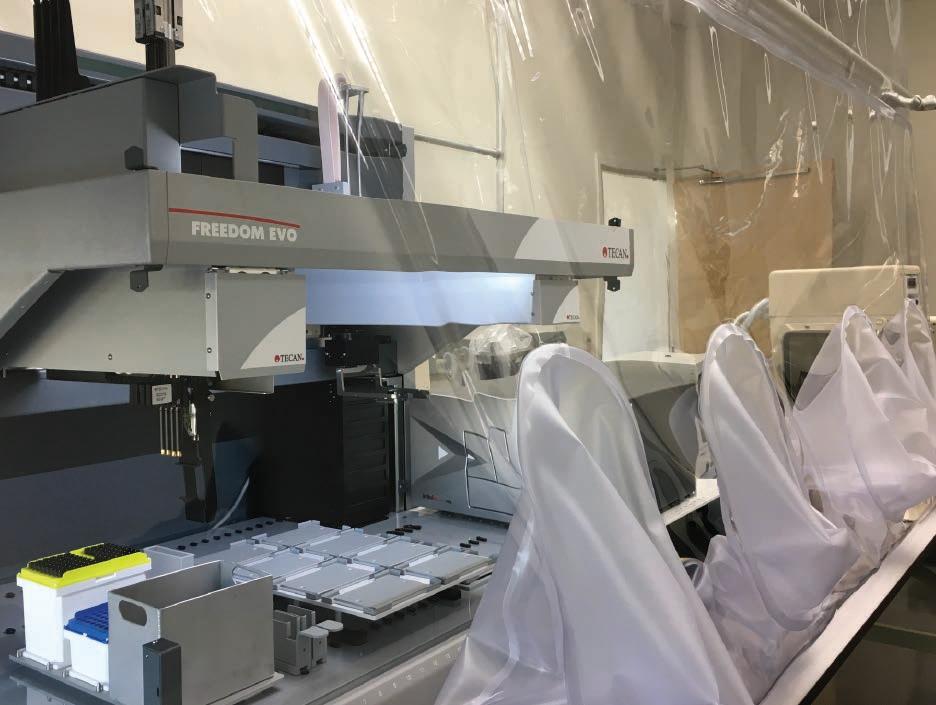
The model can also be applied to different microbial communities beyond medicine, including accelerating the breakdown of plastics and other materials for environmental cleanup, production of valuable compounds for bioenergy applications, or improving plant growth.
—Prof. Alfred Hero
PEOPLE POWERING INNOVATION | 25 ECE RESEARCH
The robot in the Venturelli Lab that creates the microbial communities used to train and test the algorithms.
Image courtesy: Venturelli Lab
“It ’s so important that we can extrapolate from the data collected on a few hundred communities to predict the behaviors of the millions of communities we haven’t seen.”
Toward Manufacturing Semitransparent Solar Cells the Size of Windows
In an important step toward bringing transparent solar cells to home windows, Prof. Stephen Forrest’s team developed a way to manufacture their highly efficient and semitransparent solar cells using a peel-off patterning technique.

“The research we are doing is derisking the technology so that manufacturers can make the investments needed to enter large scale production,” said Forrest, who is the Peter A. Franken Distinguished University Professor of Electrical Engineering and Paul G. Goebel Professor of Engineering.

Traditional silicon-based solar cells are completely opaque, which works for solar farms and roofs but would defeat the purpose of windows. However, organic solar cells, in which the light absorber is a kind of plastic, can be transparent.
Organic solar cells have lagged behind their silicon-based cousins for energy-producing purposes due to engineering challenges such as low efficiency and short lifespans, but recent work out of Forrest’s lab has achieved record efficiencies of 10% and estimated lifetimes of up to 30 years.
So the team has turned its attention to making transparent solar cells manufacturable. They succeeded in connecting eight semitransparent solar cells, each 4 cm x 0.4 cm and separated by 200µm-wide interconnections, to create a single 13 cm2 module. The power conversion efficiency of 7.3% was approximately 10% less than for the individual solar cells in the module. This small efficiency loss does not increase with the size of the module; hence, similar efficiencies are expected for meter-scale panels as well. With a transparency nearing 50% and a greenish tint, the cells are suitable for use in commercial windows. Higher transparencies that are likely preferred for the residential market are easily achieved by this same technology.
“It is now time to get industry involved to turn this technology into affordable applications,” said doctoral student Xinjing Huang, who helped develop the technology. The technique can also be generalized to other organic electronic devices, says Forrest. His group is already applying it to OLEDs for white lighting.
Inset image: the top image shows a schematic illustration of the peel-off patterning procedure. The bottom left image is a microscopic image of light-absorbing semiconductor film on a glass substrate, patterned by peeling off a 10 μm wide polyimide (PI) strip. Bottom right: Photo of the prototype module. Credit: Xinjing Huang
26 | PEOPLE POWERING INNOVATION ECE RESEARCH
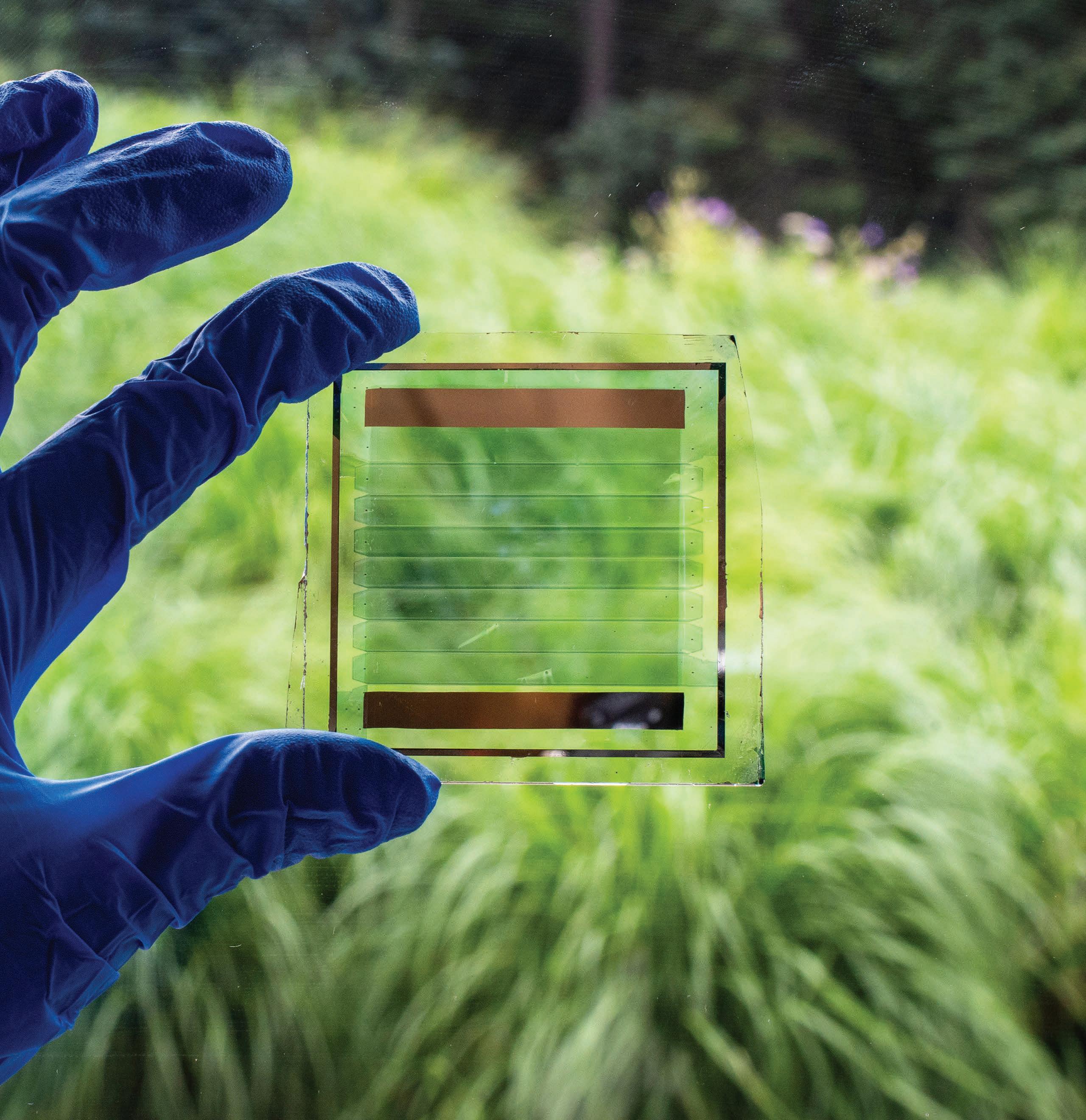
PEOPLE
INNOVATION | 27
POWERING
PEOPLE
INNOVATION 27
PhD student Xinjing Huang demonstrates the semi-transparent view through the solar cell. Photo: Silvia Cardarelli
POWERING
“The research we are doing is derisking the technology so that manufacturers can make the investments needed to enter large scale production.” —Prof. Stephen Forrest
Photosynthesis Copycat may Improve Solar Cells


A new approach to artificial photosynthesis developed by Prof. Stephen Forrest’s group could reduce energy losses converting light into electricity in solar cells.
The diagram shows light hitting the semiconductor (purple) layered over the mirror-like photonic struc ture. The polaritons—mixtures of light, electrons and “holes”—then travel to the detector (truncated disc), where they generate current. IMAGE: Xinjing Huang and Dr. Bin Liu

The team created a relatively new kind of semiconductor, layered atop a mirror-like structure, that can mimic the way that tree leaves move energy from the sun over relatively long distances before using it to fuel chemical reactions.
“Energy transport is one of the crucial steps for solar energy harvesting and conversion in solar cells,” said postdoctoral researcher Bin Liu, who helped develop the technology. “We created a structure that can support hybrid light-matter mixture states, enabling efficient and exceptionally long-range energy transport.”
One of the ways that solar cells lose energy is in leakage currents generated in the absence of light. The highly efficient process that occurs in nature can’t be duplicated in man-made materials. But it can be mimicked.
The new device created by Forrest’s team avoids converting photons fully to excitons, allowing them to maintain their light-like qualities. A photonelectron-hole mixture is known as a polariton. In polariton form, its light-like properties allow the energy to quickly cross relatively large distances of 0.1 millimeters, which is even further than the distances that excitons travel inside leaves.
“The advantage of this arrangement is that it has the potential to greatly enhance the power generation efficiency of conventional solar cells where the light gathering and charge separating regions coexist over the same area,” said Forrest.
While the team knows that the transport of energy is happening in their system, they aren’t totally sure that the energy is continuously moving in the form of a polariton. And they still need to figure out how to build efficient light-gathering devices that harness the photosynthesis-like energy transfer. So stay tuned!
28 | PEOPLE POWERING INNOVATION ECE RESEARCH
Bin Liu, a postdoctoral researcher in electrical and computer engineering, loads the mirror-like photonic structure into the glove box—on the way to adding the light detector on top of the structure. Photo: Silvia Cardarelli
Immune to Hacks: Inoculating Deep Neural Networks to Thwart Attacks

If a sticker on a banana can make it show up as a toaster, how might strategic vandalism warp how an autonomous vehicle perceives a stop sign? Now, an immune-inspired defense system for neural networks can ward off such attacks, thanks to a collaboration between Alfred Hero, the John H. Holland Distinguished University Professor and R. Jamison and Betty Williams Professor of Engineering, and Indika Rajapakse, Associate Professor of Computational Medicine and Bioinformatics.
Deep neural networks are a subset of machine learning algorithms used for a wide variety of classification problems. These include image identification and machine vision (used by autonomous vehicles and other robots), natural language processing, language translation and fraud detection. However, it is possible for a nefarious person or group to adjust the input slightly and send the algorithm down the wrong train of thought, so to speak. To protect algorithms against such attacks, the Michigan team developed the Robust Adversarial Immune-inspired Learning System (RAILS).
“RAILS represents the very first approach to adversarial learning that is modeled after the adaptive immune system, which operates differently than the innate immune system,” said Hero.
While the innate immune system mounts a general attack on pathogens, the mammalian adaptive immune system can generate new cells designed to defend against specific pathogens. It turns out that deep neural networks, already inspired by the brain’s system of information processing, can take advantage of this biological process, too.
“The immune system is built for surprises,” said Rajapakse. “It has an amazing design and will always find a solution.”
RAILS works by mimicking the natural defenses of the immune system to identify and ultimately take care of suspicious inputs to the neural network.
“We weren’t sure that we had really captured the biological process until we compared the learning curves of RAILS to those extracted from the experiments,” Hero said. “They were exactly the same.”
“One very promising part of this work is that our general framework can defend against different types of attacks,” said research fellow Ren Wang, who was primarily responsible for the development and implementation of the software.
The code mimics the mechanisms by which the immune system learns to identify antigens, instead learning to characterize the dubious inputs to the machine learning algorithm.

PEOPLE POWERING INNOVATION | 29
Professors Alfred Hero and Indika Rajapakse standing next to a live cell imaging microscope and an image taken by the microscope of actual B cells, generated in response to a foreign antigen.
Photo: Silvia Cardarelli
ECE RESEARCH
QUASIPARTICLES Surf the Waves in Semiconductors for Next-gen Computing, Energy, and Communications

30 | PEOPLE POWERING INNOVATION
30 PEOPLE POWERING INNOVATION
Today’s electronic devices rely on electrons to move both energy and information around, but about half of that energy is wasted as heat due to electrical resistance. Excitons, quasiparticles which escape traditional electrical losses, are one potential alternative.
“If you think of the past almost two decades, the computers have always been at two to three gigahertz—they never increase the speed. And that’s the reason. It just gets too hot,” said Prof. Parag Deotare. “But transistors can go faster if one can remove the excess heat quickly. If you just cut down your communication energy losses, then your processing speed automatically increases. Using excitons can theoretically cut those losses significantly.”
Deotare’s team was able to move the quasiparticles that form in semiconductors at room temperature, for the first time. This technique could cool down computers, enabling faster speeds and higher efficiencies, and potentially make LEDs and solar panels more efficient.
They accomplished this feat by running acoustic waves through the material. They showed that excitons can “surf” these waves, traveling from one location in a semiconductor chip to another. Deotare suggests that controlling excitons in this way could enable data communication, possibly leading to the replacement of the transistor.
“The ability to direct excitons paves the way to exciting future applications that include efficient energy conversion, sensing, detection and room temperature, on-chip excitonic information processing and communication,” said doctoral student Kanak Datta.
Until recently, attempts at controlling excitons had been relegated to cryogenic temperatures—at room temperature, the electrons and holes quickly fall apart. But new “2D” semiconductors made of single crystal layers changed that— particularly a class of materials known as transition-metal dichalcogenides, a name that describes where the components come from in the periodic table.
“What we’re doing right now will enable us to have a computer that can operate at a much higher speed, consume less energy, and be built at a very small scale,” said doctoral student Zidong Li.
And that’s not all, says doctoral student Zhengyang Lyu. “Our method offers tunability and flexibility to design exciton transport for particular applications, as well as a manufacturable design.”
Above: This chip paves the way for transporting energy efficiently with excitons.
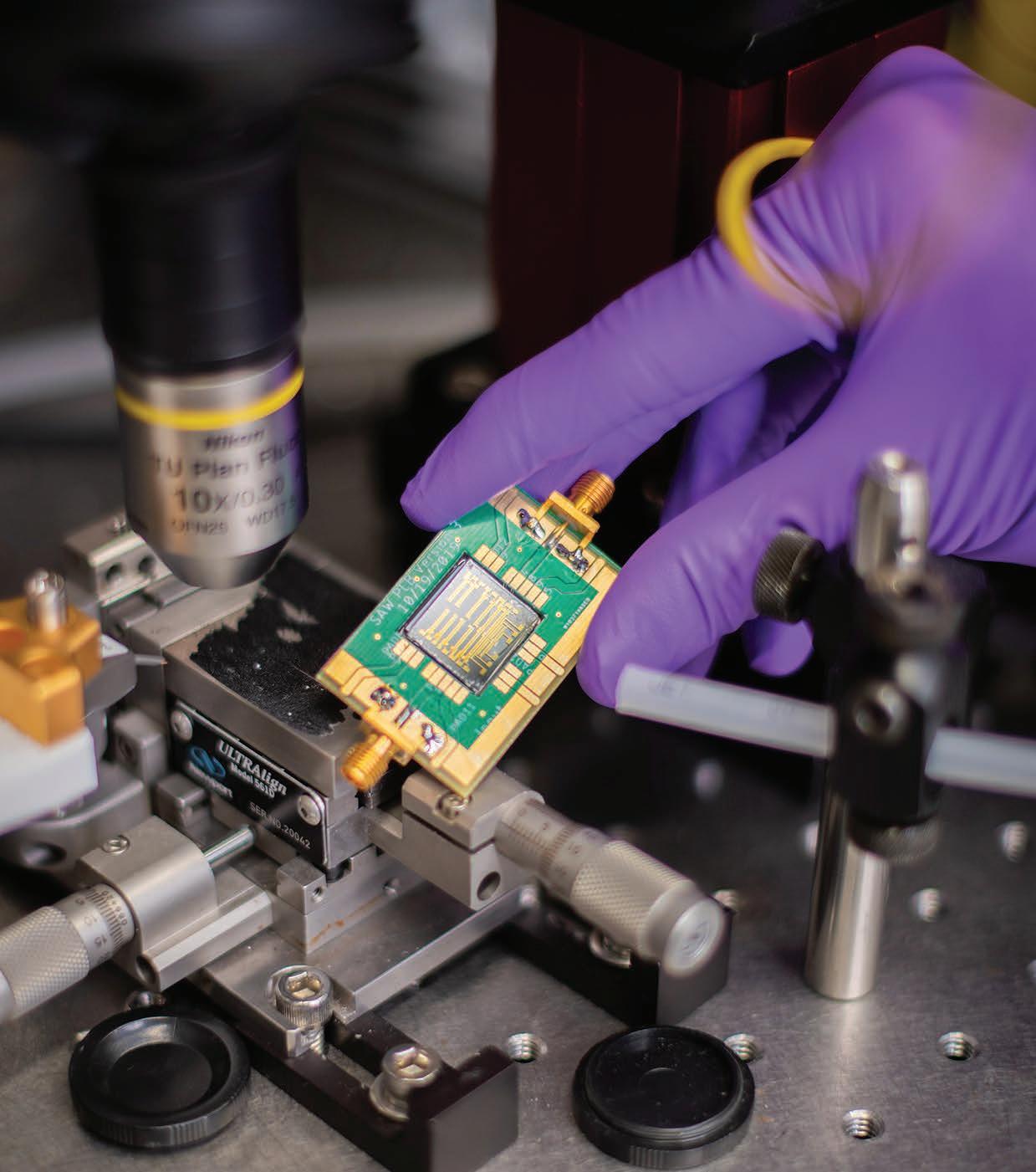
Left: Doctoral student Zidong Li (left) aligns the optical setup used to generate excitons on the chip, while doctoral student Kanak Datta (right) inspects the device under a microscope. Photos: Silvia Cardarelli
The ability to direct excitons paves the way to exciting future applications that include efficient energy conversion, sensing, detection and room temperature, on-chip excitonic information processing and communication. —Kanak Datta, PhD student
PEOPLE POWERING INNOVATION | 31
ECE RESEARCH
QUANTUM LEAPS + COLLABORATIONS
QUANTUM LEAPS: Processing Quantum Information with Impossible Pulses
Quantum computing has the potential to accelerate solutions to problems that need to explore many variables at the same time, including drug discovery, weather prediction and encryption for cybersecurity.
Conventional computer bits encode either a 1 or 0, but quantum bits, or qubits, can encode both at the same time. This essentially enables quantum computers to work through multiple scenarios simultaneously, rather than exploring them one after the other. However, these mixed states don’t last long, so the information processing must be faster than electronic circuits can muster.
Prof. Mackillo Kira and his collaborators recently discovered that a laser pulse that sidesteps the inherent symmetry of light waves could be used to manipulate quantum information, potentially bringing us closer to room temperature quantum computing, while also accelerating conventional computing.
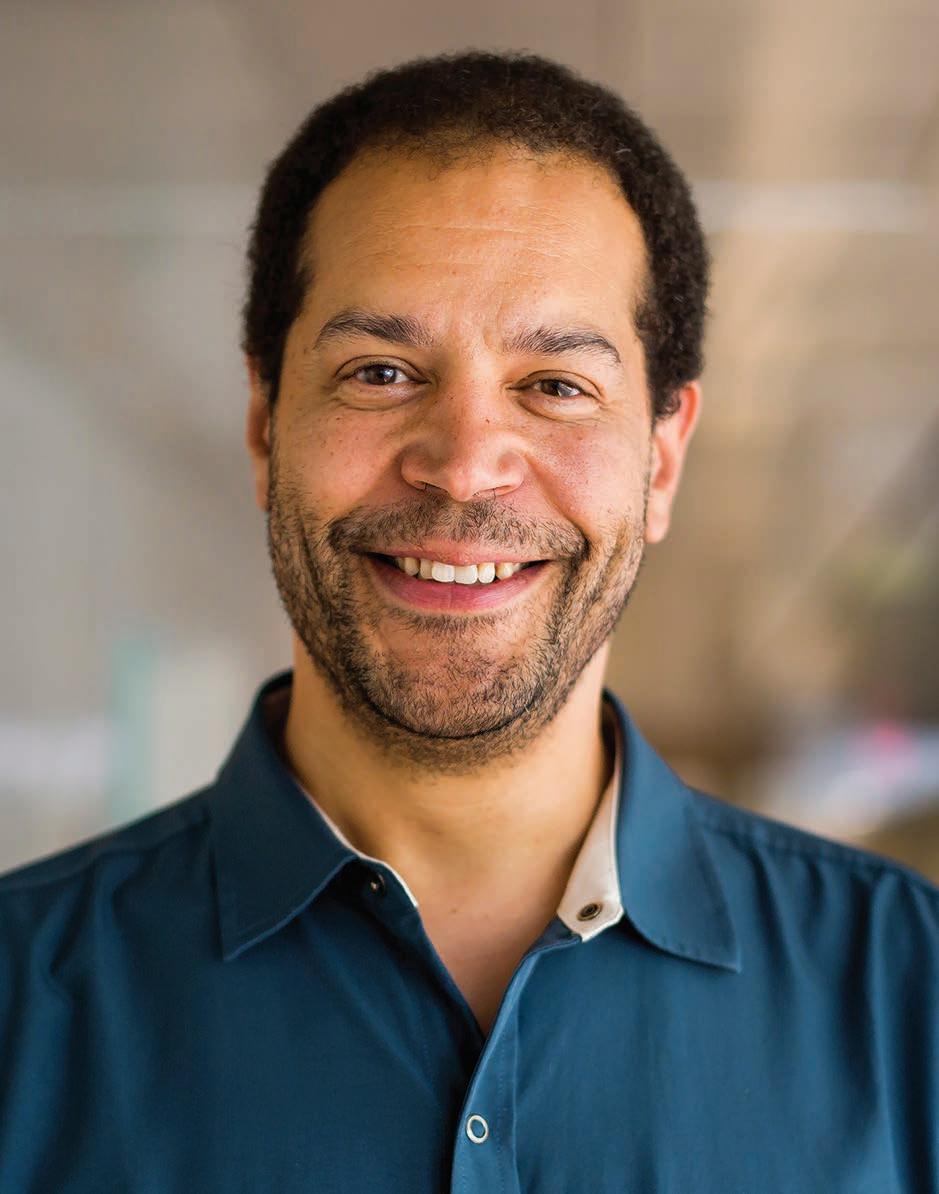
The technique uses laser pulses to manipulate the energy states of the qubits. It was also discovered that an asymmetric light wave is needed to reliably control the quantum information.
“The optimum would be a completely directional, unipolar ‘wave’, so there would be only the central peak, no oscillations. That would be the dream. But the reality is that light fields that propagate have to oscillate, so we try to make the oscillations as small as we can,” said Kira.
“We have been working for many years on light pulses with fewer and fewer oscillation cycles,” said collaborator Prof. Rupert Huber from the University of Regensburg. “The possibility of generating terahertz pulses so short that they effectively comprise less than a single half-oscillation cycle was beyond our bold dreams.”
But that’s just what they did, using carefully engineered nanosheets of a gallium arsenide semiconductor.
“Now that we know the key factor of unipolar pulses, we may be able to shape terahertz pulses to be even more asymmetric and tailored for controlling semiconductor qubits,” said Qiannan Wen, a doctoral student in Applied Physics at Michigan and member of Kira’s research group.
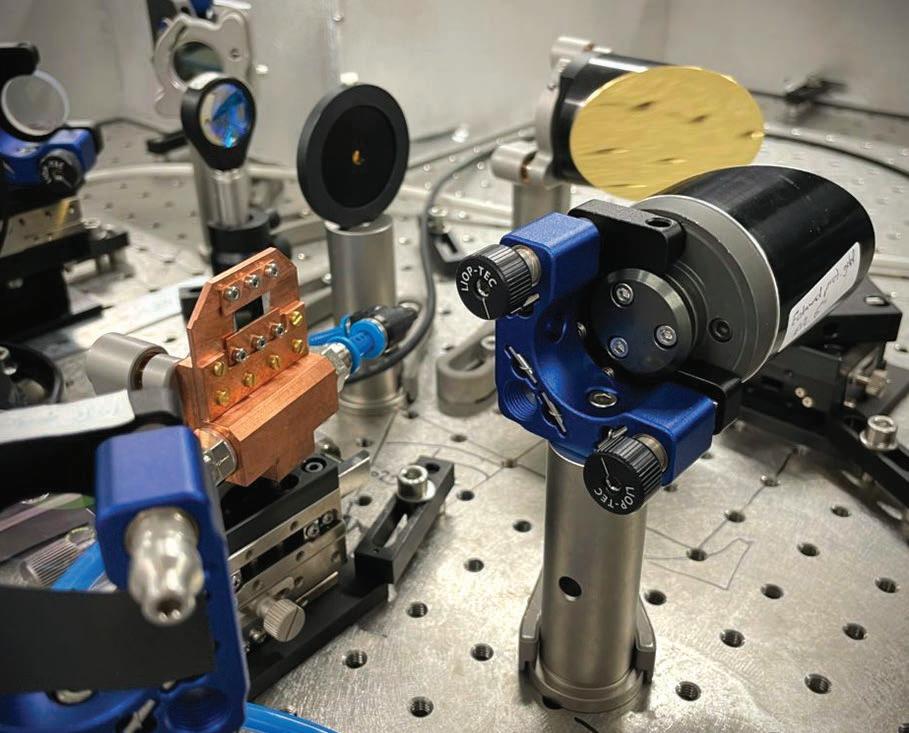
32 | PEOPLE POWERING INNOVATION
ECE RESEARCH
Prof. Mackillo Kira
Experimental setup. Credit: Christian Meineke, Huber Lab, University of Regensburg.
QUANTUM COLLABORATIONS: Michigan Quantum Collaboratory
The University of Michigan has formed a collaboration with Michigan State University (MSU) and Purdue University to study quantum science and technology, drawing together expertise and resources to advance the field.


Called the Midwest Quantum Collaboratory (MQC), it was formed to “find grand new challenges we can work on jointly, based on the increased breadth and diversity of scientists in the collaboration,” said inaugural director Mackillo Kira.

Researchers at U-M will lead research about the quantum efforts of complex quantum systems, such as photonics, or the study of light, in different semiconductors. This kind of study could inform how to make semiconductor-based computing, lighting, radar or communications millions of times faster and billions of times more energy efficient.
“Breakthrough potential resides in developing algorithms, chemical reactions, solar-power, magnetism, conductivity or atomic metrology to run on emergent quantum phenomena,” says Kira.
After its kickoff meeting in November 2021, the first annual meeting, called MQC Entanglement 2022, took place in Ann Arbor on July 25-26, 2022. This meeting brought together about 200 MQC researchers and about 50 experts (industry leaders, program managers, and policy makers). The two themes of the meeting were: creating new frontiers for entanglement applications; and fostering university-industry-funding “entanglement” needed to create next-generation quantum-information science and engineering (QISE).
After a Welcome and MQC Overview by Kira, QISE research overviews were provided by Profs. Johannes Pollanen (MSU), Yong Chen (Purdue), and Hui Deng (Michigan). The rest of the 2-day meeting was primarily devoted to breakout and panel discussions as the researchers and industrial partners discussed the future of QISE and how they could best work together to achieve maximum synergy.
The primary goals identified by participants were solving issues of quantum readiness, scalability, and integration challenges, followed by fundamental quantum challenges.
“We scientists are now in a position to start combining quantum building blocks to quantum applications that have never existed. It is absolutely clear that any such breakthrough will happen only through a broad, diverse and interdisciplinary research effort. MQC has been formed also to build scientific diversity and critical mass needed to address the next steps in quantum science and technology.”
MACKILLO KIRA,
Director of the Michigan Quantum Institute
“We know collaboration is key to driving innovation, especially for quantum. The MQC will not only provide students with scientific training, but also develop their interpersonal skills so they will be ready to contribute to a currently shorthanded quantum workforce.”
DAVID STEWART, Managing Director of the Purdue Quantum Science and Engineering Institute.
“MQC also provides companies with interest in quantum computing with great opportunities for collaboration with faculty and students across broad spectrums of quantum computing with the collaborative expertise spanning the three institutions.”
ANGELA WILSON, Director of the MSU Center for Quantum Computing, Science and Engineering.
PEOPLE POWERING INNOVATION | 33
ECE RESEARCH
Teaching MACHINE LEARNING in ECE
With new courses at the UG and graduate level, ECE is delivering state-of-the-art instruction in machine learning for students in ECE, and across the university
The data revolution has added a new dimension to virtually all fields of scientific endeavor. Fueled by tiny and smart computing devices that continuously monitor and record physical phenomena, inexpensive memory, powerful computers, and the digitization of all kinds of data – we’re still in the early years of this new reality, called by some the fourth industrial revolution.
ECE faculty and students are using machine learning techniques in their research to improve large-scale testing of cancer drugs, or to enable energyefficient, ubiquitous connectivity for the Internet of Things.
Machine learning has been embraced by a multitude of disciplines which are adapting it to their unique purposes. Simply put, machine learning uses algorithms that can automatically learn how to detect meaningful patterns in data. Constructing the correct algorithm for the application and, perhaps even more important, ensuring its robustness, has led to machine learning evolving from a method to an entire field of study.
Students are clamoring to be trained in this hot new area that has been fully embraced by industry. In response, ECE faculty have expanded the curriculum in machine learning while devoting their own expertise in both physical and computational systems to provide a more mathematical foundation for machine learning.
“Faculty in ECE have special tools that researchers in other foundational fields contributing to artificial intelligence don’t have,” said Hero.
“Machine learning and data science are permeating literally every aspect of science, industry, and government,” said Prof. Laura Balzano. “Our hope is that electrical and computer engineers can be a part of this revolution to both continually improve the technologies, as well as make sure they are being used fairly and justly for the benefit of everyone. That means designing new methods that are fair to women and men, people of all races, etc., as well as tackling challenging problems that affect the lives of many, like predicting immediate and long-term effects of climate change. Electrical and computer engineers have the mathematical tools to make progress on these important problems, and the courses we are developing will train them to use those skills for improving machine learning.”
Following is a review of several ECE courses that have been recently introduced into the curriculum, both at the undergraduate and graduate levels. Collectively, Michigan now offers more than ten regular courses in machine learning, and several others that have been taught as special topics courses. Machine learning is also being incorporated into existing courses.
Especially for ECE Students
Two core courses in machine learning have been revised recently to cater to ECE students: Principles of Machine Learning and Machine Learning (ECE).
“As engineering has more and more impact on human lives, it has become essential to bring the humanities and social sciences into engineering,” said Alfred O. Hero, the John H. Holland Distinguished University Professor of EECS and R. Jamison and Betty Williams Professor of Engineering.
Along with the expansion of machine learning in the curriculum at Michigan, students are getting a healthy dose of how issues of equity must be considered in their approach to machine learning and data science.
The introductory undergraduate course, Principles of Machine Learning, “has a greater emphasis on mathematical principles and solid foundations,” said Qing Qu, who led development of this revised course along with Laura Balzano and Lei Ying. “Our students, especially those in the signal processing track, have a greater interest and foundation in the mathematics of machine learning, specifically linear algebra and probability.” There was also a decreased emphasis on programming.
EDUCATION NEWS
“The goal of this course is to have a portfolio of machine learning projects that they can showcase to their recruiters on their website.”
34 | PEOPLE POWERING INNOVATION
—Prof. Raj Nadakuditi
The graduate course, Machine Learning (ECE), also places a greater emphasis on the mathematical foundations for machine learning, whereas the CSE version will continue to be more oriented towards implementation and programming. ECE graduate student Jack Weitze took the course while still an UG student, and greatly appreciated the literature reviews.
learning to predict drug responses and find more individualized therapeutic options for patients.
“Our hope is that the students will take what they’ve learned, port it into their own application domain, and be the first person to do what no one else in their area has done before,” said Nadakuditi.
Nadakuditi uses his patented digital textbook, called Pathbird, for this and all of his computational courses, including an online course he developed called Computational Machine Learning for Scientists and Engineers.
“To be able to read and then communicate the results, that’s an important skill,” said Weitz, “especially in machine learning, where a lot of the work happens close to the research. In industry, you still have to keep up with the research.”
Teaching computational skills to everyone
Prof. Raj Nadakuditi took the road less traveled when he created EECS 505: Computational Data Science and Machine Learning back in 2018. He created the class with a vision to it being open to all majors within the university, and he succeeded immediately. The course typically attracts more than 200 students, and has represented more than 45 departments and majors in a single term.
Allegra Hawkins, a former graduate student in Cancer Biology and Bioinformatics, took the class because she was interested in using machine
After a young high school student successfully completed the course, Nadakuditi was inspired to bring machine learning to even younger students at Michigan. The result
was the sophomore-level course Introduction to Applied Computational Machine Learning, first taught Fall 2021.
Julia Stowe took the course as a sophomore majoring in Industrial and Operations Engineering, knowing she’d be taking the course alongside friends majoring in EECS or Data Science who probably had more experience in programming. She was pleasantly surprised to find it was easy to understand, had lots of interesting practical applications, and later, to discover that it was relevant to her own coursework.
“We’re learning about databases in one of my classes,” said Stowe, “and my professor was like – ‘Oh, this is really relevant once you get to machine learning, because the way that you’re
PEOPLE POWERING INNOVATION | 35
PEOPLE POWERING INNOVATION 35
“Almost every company is looking for machine learning and data mining professionals, not just software companies like Google or Facebook.” —Prof. Lei Ying
going to connect these data tables you’ll want to use artificial intelligence or machine learning.’”
Nadakuditi next created a course targeted at the master’s students in the department’s newly launched Master of Engineering program focused on Data Science and Machine Learning. This is a degree for students who know they want to go directly into industry, and know which area they want to study. The course is EECS 605: Data Science and Machine Learning Design Laboratory.
“The goal of this course is to have a portfolio of machine learning projects that they can showcase to their recruiters on their website,” said
Specialty Grad Courses

ECE also offers several specialized graduate courses related to machine learning. Included in these is the newly-developed course EECS 602: Reinforcement Learning Theory, taught by Prof. Lei Ying.
“Reinforcement learning is a very hot area in terms of machine learning,” said Ying. “It’s different from some of the traditional machine learning topics and looks at sequential decision making in engineering systems.”
“Data-driven and learningbased methods are
transforming every discipline of engineering and science.
“Almost every company is looking for machine learning and data mining professionals, not just software companies like Google or Facebook,” said Ying.
It’s
good time to develop some machine learning courses especially for ECE students.” —Prof. Qing Qu
The course complements the existing curriculum in machine learning, stochastic control, and communication networks.
Like several of the other machine learning courses in ECE, EECS 602 is attracting attention throughout the College of Engineering and the university. The first year it was offered, in 2020, students from 19 different disciplines took the course, and it is expected to attract an even greater variety in the future.

Teams for the final project must include students from at least two different departments, and that makes for some interesting projects, said Ying. In one project, the students tried to design a strategy for how to avoid being smashed by other trucks in an arena. In another project, students wanted to control low earth orbit satellites.
Forever Changed
Machine learning has changed how the world approaches data, and the educational landscape along with it. At Michigan, young undergraduate students from a wide range of disciplines can get an introduction to the field that will help them solve problems in their own coursework, while more senior students can get more formal training with a mathematical bent.
“I think that the future lies in expanding our vision in all our courses, so that we are teaching students the value of data.” —Prof. Al Hero
Graduate students throughout the university can acquire an ECE-centric introduction to machine learning, and/ or also delve more deeply into many facets of machine learning through a wide variety of specialized courses.
“I think that the future lies in expanding our vision in all our courses, so that we are teaching students the value of data,” said Hero.
36 | PEOPLE POWERING INNOVATION
a
Students enrolled in Reinforcement Learning Theory (EECS 602) during the 2020 AY
Here’s what some of the students had to say:
“The most fun thing to learn were the ‘if – else’ statements, as that opened up a lot for me,” said a 9th grade Joy of Coding student. “Those statements could be used for countless things that I want to create.”
“[The coaches] are super helpful, and they have a quick response time,” said Lalitha. “If I ever needed help, I’d always reach out to them.”
“I really liked that it was asynchronous,” said Emma. “I was able to work at my own pace and thoroughly learn each topic. The emails were always so fun, and the lessons, the videos, they made the program a really interactive and enjoyable experience.”
“Overall, this course really inspired me to delve deeper into the computer science world, and it exposed me to new concepts and new ways to use these concepts,” said Miriam. “I would recommend that you sign up and take this course, because it is one of the best decisions I’ve made in my life.”
High School students discover the “Joy of Coding” in new ECE online course
We mentioned last year that ECE was offering a new online course called “Joy of Coding.” The first cohort to take the course thought it was great!

Joy of Coding introduces first-time coders, especially high school students, to the wondrous world of coding. The online format is designed to improve access to engineering education for all students, including those coming from rural and underserved areas, who often have few options for these types of courses.
“This program is about making education more accessible for everyone,” said Mingyan Liu, the Peter and Evelyn Fuss Chair of ECE. “Our goal is to advance inclusive teaching by reaching more students without sacrificing quality.”
Over 1,400 students enrolled in the first course, representing five countries and 36 states. In addition, almost 40% of enrollees were women and 20% of enrollees were underrepresented minorities. Over 1,000 students completed the course and obtained an official certificate of accomplishments, which can be included in college applications.
Joy of Coding helps teach computational thinking, which is important preparation for those wanting to go into STEM fields. Specifically, students learn how to use Python and study how coding powers apps such as TikTok, Instagram, Snapchat, and Siri. And they apply their newly-gained coding and computational skills in a variety of exercises, such as designing their own Snapchat filters.
The course was designed and taught by Prof. Raj Nadakuditi, and the first summer’s offering was staffed by a team of sixteen experienced University of Michigan students who served as teaching assistants and coaches.
PEOPLE POWERING INNOVATION | 37
EDUCATION NEWS
Digital Signal Processing for Undergrads
In the junior level course, Digital Signal Processing and Analysis, students gain firsthand experience with sensors and many signal processing techniques. They design and carry out a data collection and analysis project on a topic of their choosing, which gives them experience on how algorithms work in real life on real data.
Recent projects include improving a non-invasive method of assessing traumatic brain injury patients, classifying spoken language, and autonomously evaluating a musician’s piano playing.

The course, most recently taught by Prof. Laura Balzano, incorporates image processing and machine learning techniques and is good preparation for students looking to take additional courses that build off the material, such as Digital Signal Processing Design Laboratory, Principles of Machine Learning, Wireless Communications Systems, or Control Systems Analysis and Design.
Here are a few sample projects from students who took the course last term:

Non-invasive detection of traumatic brain injury
Students worked with the Tiba Lab at Michigan Medicine to use eye-impedance to track the status of a patient who has had a traumatic brain injury, rather than drilling into the brain in order to measure blood pressure.

The team aimed to identify and remove impulse noise, which they accomplished using signal processing tools such as filtering and the discrete Fourier transform, and machine learning techniques such as kernels and support vector machine (SVM) classification.
Classification of underwater mammals

To identify dolphins and whales based on their underwater songs, the team used machine learning and signal processing to create filters to minimize noise from external factors to improve the accuracy of identification. They tested their system on the Northern Whale and Atlantic Dolphin, both endangered species. This program can be used to alert motorized boats to the presence of dolphins and whales.
Computer-aided melanoma detection
The goal of this project was to detect melanoma on a person’s skin through a computer-aided algorithm people can use in their own home. This could help save costly visits to the dermatologist while helping improve early detection of melanomas. In addition, machine learning algorithms have historically excluded people of color when training their datasets. The team trained their data to detect melanoma on a variety of skin pigmentations, ensuring no groups would be left out.
38 | PEOPLE POWERING INNOVATION EDUCATION NEWS
The creativity and range of the projects was outstanding.
Prof. Laura Balzano
New Courses
EECS 298: Intro to Quantum Information Science and Engineering (Prof. P.C. Ku)
The goal of this course is to develop a broad understanding, appreciation, and literacy for the concepts, applications, and societal impacts of quantum information science and engineering.
EECS 498: Introduction to Quantum Electromagnetics (Prof. Duncan Steel)
Students explore how to create and detect the quantum field and the creation of new states of the quantum field for quantum communications, quantum sensing (LiDAR/radar)), quantum encryption and quantum information. The impact of the quantum vacuum on devices is discussed as well as the interaction of quantized light with various kinds of quantum devices.
New Books
Introduction to Discrete Event Systems, 3rd edition (also available as a digital textbook), by Prof. Christos G. Cassandras (Boston U.) and Prof. Stéphane Lafortune
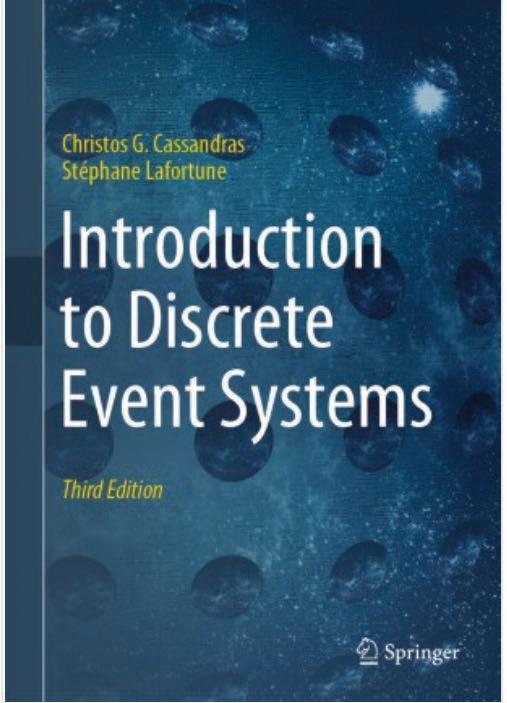
EECS 498:
Principles of Machine Learning
(Prof. Qing Qu)
This is an upper-level undergraduate course in machine learning designed specifically for ECE students. It will become a permanent part of the curriculum, with the number 453, in 2023.
learning and appreciate the significance of the theoretical performance guarantees described in those articles. Students developing new algorithms as part of their research can also expect to learn techniques that will help them analyze their algorithms.
EECS 598:
EECS
498:
Machine Learning Basics for Optics and Photonics
(Prof. Mohammed Islam)
Continuous monitoring optical systems provide such a vast amount of information that machine learning is vital for processing. In the future, many “software defined optical systems” will be a combination of the optical hardware and machine learning or neural networks. The foundation for such hardware and machine learning systems is established in this introductory course.
EECS 598: Statistical Learning Theory (Prof. Clayton Scott)
One desired outcome for students taking this course is an ability to read research articles in the field of machine
Quantum Information, Probability and Computation
(Prof. Sandeep Pradhan)
The introduction of quantum mechanics into communications and computation has produced new paradigms (quantum information) and some unforeseen results in the fields of computation, communications and learning. This course is an introduction to this general area.
598: GaN-based Electronic Devices (Prof. Elaheh Ahmadi)
Device performances are driven by new materials, scaling, and new device concepts such as bandstructure and polarization engineering. Semiconductor devices have mostly relied on Si but increasingly GaAs, InGaAs and heterostructures made from Si/ SiGe, GaAs/AlGaAs etc have become important. Over the last few years one of the most exciting new entries has been the GaN based devices that provide new possibilities for lighting, displays and wireless communications.


Elegant Circuits, by Julien Clinton Spratt (U. WisconsinMadison) and Wesley Joo-Chen Thia (ECE Master’s student)
A Guide to Signals and Systems in Continuous Time
, by Prof. Stéphane Lafortune
EECS
598:
Randomized Numerical Linear Algebra in Machine Learning
(Prof. Laura Balzano)
This course will focus on numerical linear algebra (NLA), which describes a large suite of algorithms that power a huge number of scientific, data science, and machine learning applications. The use of randomization has been allowing these methods to scale to tremendous data sizes in efficient ways.
PEOPLE POWERING INNOVATION | 39
ALEXANDER BURGERS
Assistant Professor
Research Interests: Quantum optics, hybrid quantum systems, cold atoms in optical tweezers, cavity QED, nanophotonics, integrated quantum systems, light-matter interactions, Rydberg mediated interactions, quantum simulation and quantum sensing.
Alex Burgers recently completed postdoctoral work at Princeton University with Jeff Thompson where he manipulated Ytterbium atoms in optical tweezers for quantum information science applications. He received his PhD at the University of Michigan where he studied quantum optics by using optically active quantum dots under the direction of Prof. Duncan Steel. He then was a postdoctoral researcher at Caltech in Jeff Kimble’s group coupling cold atoms to nanophotonic structures. Burgers joined the University Fall term 2022.
LIYUE SHEN
Assistant Professor
Research Interests: Biomedical AI, medical image analysis, biomedical imaging, machine learning, computer vision, signal and image processing, AI for precision health, and bioinformatics.
Liyue Shen completed her PhD in Electrical Engineering at Stanford University under the direction of John Pauly and Lei Xing. Her research interest is in Biomedical AI, which lies in the interdisciplinary areas of machine learning, computer vision, signal and image processing, medical image analysis, biomedical imaging, and data science. She is particularly interested in developing efficient and reliable AI/ML-driven computational methods for biomedical imaging and informatics to tackle real-world biomedicine and healthcare problems, including but not limited to, personalized cancer treatment, and precision medicine. Shen will join the University Fall term 2023.

ALINE EID
Assistant Professor
Research Interests: Building a responsive and sustainable infrastructure through the development of innovative wireless systems. Leveraging wireless beams for powering, communicating, and sensing to give birth to a new generation of responsive surfaces.
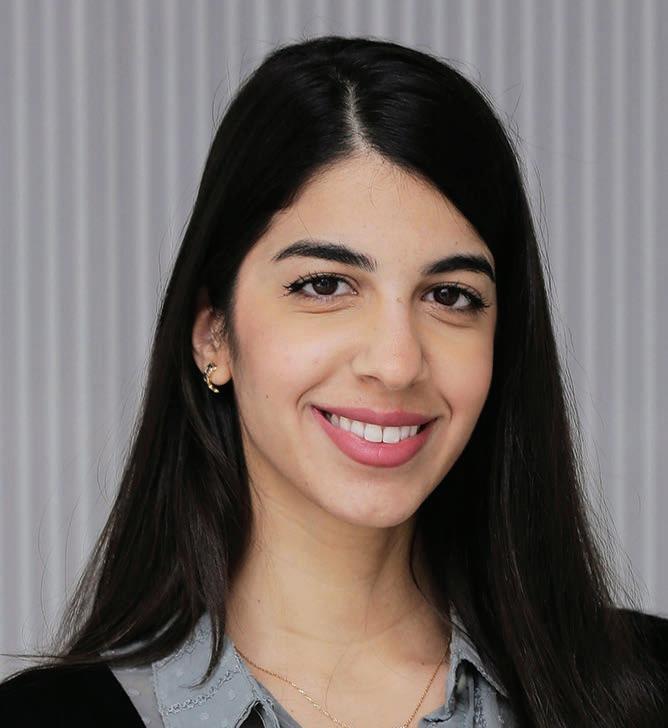
Aline is currently a postdoctoral associate in the Media Lab at MIT. During her PhD research at Georgia Tech, she focused her research efforts on the design of mm-wave RFID architectures, and harvesting and backscattering communications solutions for smart environments. Her research on “5G as a wireless power grid” was featured as one of the top 10 Emerging Technologies of 2021 by the World’s Economic Forum and highlighted in more than 40 news outlets, including The Economist and Popular Mechanics. Eid will join the University Winter term 2023.
ZHESHEN ZHANG

Associate Professor
Research Interests: Theoretical and experimental aspects of quantum information science, aiming to enable new sensing, computing, communication, and networking capabilities.
Zheshen Zhang joined Michigan from University of Arizona, where he was an Assistant Professor. Prior to joining U. Arizona, he was a postdoctoral associate and then a research scientist at MIT. He received his PhD degree in ECE from Georgia Tech. His research is focused on harnessing unique quantum resources such as entanglement to develop quantum sensors surpassing the classical measurement limits, quantum communication systems with enhanced security and capacity, quantum networks for long-range entanglement distribution, and quantum processors capable of tackling problems intractable on classical computers. He received an NSF CAREER Award, and currently serves on the Editorial Board for Communications Physics of Nature Portfolio and IEEE Progress in Quantum Electronics. Zhang joined the University Fall term 2022.

NEW FACULTY
40 | PEOPLE POWERING INNOVATION
ELAHEH AHMADI
Ahmadi received the 2022 ISCS Young Scientist Award for her “Seminal contributions to molecular beam epitaxy of N-polar (Al,Ga,In)N and (Al,Ga)2O3 heterostructures.”

Among Ahmadi’s contributions to the field are the first demonstration of N-polar InAlN films with uniform composition by plasma assisted molecular beam epitaxy (PAMBE); demonstration of N-polar GaN heterostructures with record high electron mobility and low sheet resistance by PAMBE; first demonstration of Ge-doping of Ga2O3; and first demonstration of (AlGa)2O3-Ga2O3 modulation-doped field effect transistors.
This research is directly applicable to the next generation of transistors and devices capable of providing higher efficiency in RF applications such as 5G and beyond, Internet of Things, AI and autonomous vehicles, and power switching applications in distributed grid systems, energyintensive industrial systems, and electric vehicles.
QING QU

Qu received an NSF CAREER Award for the project “From Shallow to Deep Representation Learning: Global Nonconvex Optimization Theories and Efficient Algorithms.”
The goal of this research is to develop a principled and unified mathematical framework for learning succinct data representation in highdimensional space via nonconvex optimization methods. As engineering and the sciences become increasingly data and computation driven, the importance of seeking succinct data representation and developing efficient optimization methods has expanded to touch almost every stage of the data analysis pipeline, ranging from signal and data acquisition to modeling and prediction. Qu plans to develop efficient and guaranteed computational methods for learning low-complexity representations from highdimensional data, leveraging tools from machine learning, numerical optimization, and high dimensional geometry.
AL-THADDEUS AVESTRUZ
Avestruz received an NSF CAREER Award for the project “Optimizing Power Processing for Heterogeneous Energy Storage Systems.”
The goal of this research is to recycle used electric vehicle (EV) batteries to optimize power processing in battery energy storage systems, which is important for sustainability. Globally, the number of used EV batteries is rising exponentially. Although second-use EV batteries contain approximately 80% remaining energy capacity, the diversity in their energy and power capabilities, and resulting degradation rates, leads to higher cost and power losses. Avestruz plans to reduce the cost of power processing and dramatically improve the feasibility of using retired EV batteries for stationary battery energy storage. This would allow for grid and EV fast charging applications.
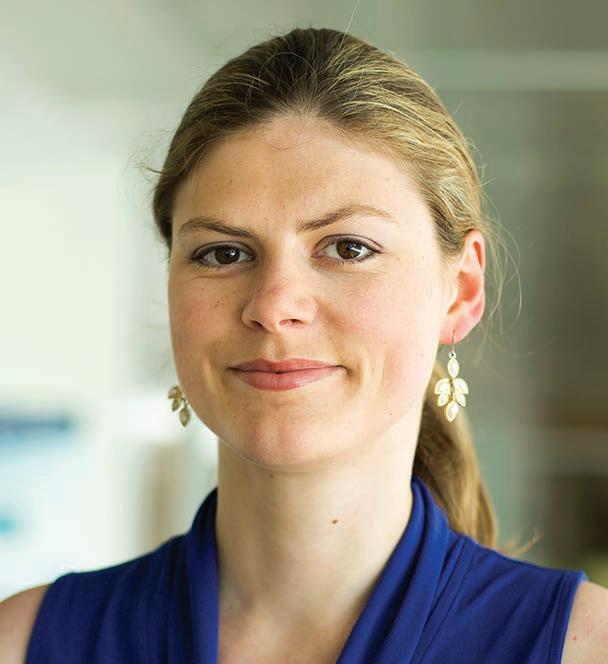
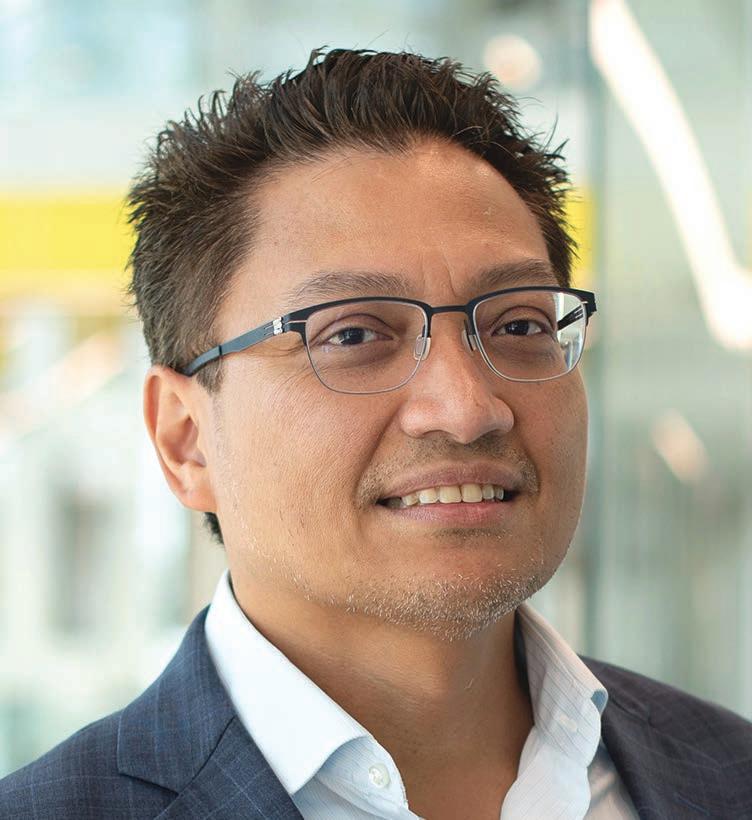
LOUISE WILLINGALE
Willingale was named a Kavli Fellow by the National Academy of Sciences, and was a featured speaker at the 2022 Kavli Frontiers of Science U.S. Symposium, which is the Academy’s premiere activity for distinguished young scientists.
In her talk, “Laser Driven Magnetic Reconnection,” Willingale explained how ultra-high intensity laser plasma interactions can be used to recreate conditions in the laboratory to explore the microphysics occurring around the most extreme astrophysical objects, such as X-ray binary disk corona, active galactic nuclei, or gamma-ray bursts. As Associate Director of ZEUS, she also described how the new three-petawatt laser user facility will help advance the ability of researchers to study high-field conditions, including the magnetic fields generated with extremely high intensities.
PEOPLE POWERING INNOVATION | 41
EARLY CAREER AWARDS
HEATH HOFMANN
For contributions to electric machinery and drive systems.
Hofmann’s research focuses on the area of power electronic and electromechanical systems. His control technology was implemented in the original all-electric Tesla Roadster, and in a control algorithm used by Pentadyne (now PowerThru). He co-invented the concept of Simultaneous Identification and Control (SIC) techniques for electric machines, and has developed robust torque control techniques for permanent magnet, synchronous reluctance, and induction machines. He also developed high-speed machine designs and controls for flywheel energy storage systems.
ZETIAN MI For contributions to III-nitride photonics and clean energy.
Mi’s research is focused on semiconductor nanostructures and their application in photonic, electronic, quantum, and clean energy devices and systems. Among his contributions are groundbreaking advances in artificial photosynthesis for clean energy, and the invention of new catalysts that enable the efficient conversion of CO2 to methane, methanol, and formic acid (for ultimate use in natural gas and the chemical industry). Other contributions include important advances in micro-LEDS, as well as mid- and deep-LEDs which may one day be suitable for water and air purification and disinfection.
PETER SEILER
For contributions to robust control theory and computational tools.
Seiler works in the area of robust control theory. Key applications of his research have included wind energy, safety critical systems, and aeroservoelasticity in aircraft. Seiler has been instrumental in the development and algorithmic advances of the Robust Control Toolbox™ in Matlab, used to design controllers for uncertain plants. This state-of-the art software package has impacted control system analysis and design techniques practiced by engineers and taught by academics all over the world. He has also made foundational contributions to the control of vehicle platoons.
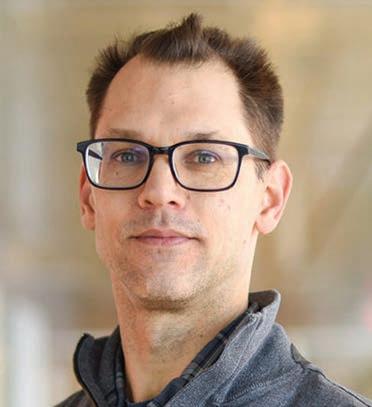

LEI YING For contributions to resource allocation in cloud computing systems and wireless networks

Ying’s research is focused on the interplay of complex stochastic systems and big data, including private data marketplaces, large-scale communication and computing systems for big-data processing, large-scale graph mining, and reinforcement learning. Applications include safe and efficient reinforcement learning for AI applications; combating fake news in social networks; and designing private data marketplaces for big-data analytics. Ying was the first to develop a mathematical model of virtual machine packing in servers, and the data locality problem in cloud computing systems.
EUISIK YOON For contributions to bio-microelectromechanical systems (BioMEMS) technologies for opto-electrical neural interfaces and microfluidic biochips.

Yoon’s research focuses on creating self-contained microsystems that combine and process both natural and electrical signals on a single chip platform by integrating new MEMS/nano structures with low-power, wireless VLSI circuits and systems. His neural interface technologies have been disseminated to more than 45 neuroscience labs across the globe, and commercialized through his startup company Neurolight Tech. His group has also developed pioneering microfluidic biochips for use in cancer research. His technique known as Hydro-seq is being used for preclinical studies of breast and prostate cancer patients.

42 | PEOPLE POWERING INNOVATION
NEW IEEE FELLOWS
Distinguished Professorships
Flynn is one of the world’s premier scholars in the area of analog and mixed-signal integrated circuits and systems, analog-to-digital conversion (ADC), and other interface circuits, from high-speed serial transceivers to radio frequency transceivers and sensors. His pioneering research has improved the performance and energy efficiency of analog-digital interfaces and transformed the field.
His research group was among the first to incorporate an efficient ADC in a complementary metal-oxide semiconductor radio frequency identification tag to make a radio frequency powered sensing system. He developed a wireless sensor network to monitor the integrity of bridges and roads and a super-regenerative receiver and low-power radio architecture with an on-chip antenna, moving the field closer to full integration of radios, digital processing, sensors and interface circuits. A single-chip closed-loop stimulation device he designed showcased the potential of integrated brain-machine interface circuits to improve the treatment of Parkinson’s and other diseases. His 28GHz MMW digital beamformer, the first of its kind, could be used to track four airplanes or communicate with four satellites at the same time.
 Fawwaz T. Ulaby Collegiate Professor of ECE
Fawwaz T. Ulaby Collegiate Professor of ECE
He is also recognized for making major contributions to the department’s graduate education while serving as the Associate Chair for Graduate Affairs, including developing a variety of innovative strategies that helped dramatically increase the number of domestic and underrepresented student applicants to ECE.
Flynn chose the name of Fawwaz T. Ulaby for his professorship, saying: “Fawwaz inspires me because he is the perfect professor. Not only does he have an amazing research track record, but he also excels in service and is a tremendous educator. His genuine concern for students sets an example for us all.”
Mingyan Liu, who currently serves as the Peter and Evelyn Fuss Chair of Electrical and Computer Engineering, is a gifted researcher, innovator, educator, and leader. Her research lies in the area of sequential decision and learning theory, game theory and incentive mechanisms, with applications to large-scale networked systems, cybersecurity and cyber risk quantification.

She and her colleagues developed a predictive analytics framework that uses machine learning to estimate an organization’s likelihood of having a material data breach in the near future. Based on this research, she co-founded the company QuadMetrics, which was acquired by analytic software company FICO just two years later.
MINGYAN LIU
Alice L. Hunt Collegiate Professor of Engineering
A gifted educator, Liu received the CoE Education Excellence Award for her efforts in revamping several courses to keep them industry relevant, relatable to students, and teachable by new faculty. Before becoming Chair, she served as ECE Associate Chair for Graduate Affairs and ECE Communications Area Coordinator, as well as numerous College and University committees - including several to support and advance women in engineering.
Liu selected Alice L. Hunt, saying: “Alice Hunt was the first woman ever hired into the College of Engineering and one of the first women to ever be hired into the university. She was here for 30 years, and while she never had the title of professor, she made very significant contributions to the education of our students. Engineering drawing was an essential part of engineering education and indeed critical to the very emergence of engineering as a new branch of the academy.”
PEOPLE POWERING INNOVATION | 43
MICHAEL FLYNN
FACULTY AWARDS
FACULTY AWARDS
Distinguished University Faculty
The Distinguished University Innovator of the Year Award honors faculty members who have developed transformative ideas, processes or technologies and shepherded them to market. Lu earned the title for his pioneering efforts in the development and commercialization of novel electrical devices.
The world is becoming more and more reliant on artificial intelligence. Smartphones, smart homes, social media, cars and other modern devices are utilizing AI, and innovations created by Lu are leading the way in the creation of more powerful and efficient AI systems.
WEI LU Distinguished University Innovator
Lu understood early on that the future of computing relied on the ability to develop computer memory devices powerful enough to support AI-enabled applications. Traditional computers are built with separate memory and processor chips, and the cost of constant data transfer between them severely limits their overall efficiency. Lu and his research team developed a new type of computer memory device that could be used to both store and efficiently process data in the same device.
Lu co-founded Crossbar Inc. in 2010 and MemryX, Inc. in 2018. The AI Accelerator chips developed by MemryX are already being tested by customers, while Crossbar has established several product lines through its innovative ReRAM technology.
“Through our research and commercialization efforts, we hope to bring about transformative change that will allow us to seamlessly incorporate AI applications across many industries,” Lu said.

The Distinguished University Professorship is the University’s most prestigious professorship, and for his title, Sarabandi took the name of his former doctoral advisor and mentor, Fawwaz Ulaby. “Fawwaz personifies an ideal university professor as an educator, scientist, and leader who has demonstrated enormous contributions to the field of Applied Electromagnetics,” said Sarabandi.
KAMAL SARABANDI
 Fawwaz T. Ulaby Distinguished University Professor of EECS
Fawwaz T. Ulaby Distinguished University Professor of EECS
A researcher with endless curiosity, Sarabandi’s numerous contributions to the field of applied electromagnetics began as a graduate student at Michigan. He contributed to the Shuttle Imaging Radar that flew on NASA’s Shuttle Imaging Radar-C (SIR-C) mission in 1994, the most advanced radar system to ever fly in space at the time. Later he was involved in the Shuttle Radar Topography Mission (SRTM), which provided data to generate the first nearly global, high-accuracy topographical map of the Earth. The shuttle was launched aboard the Space Shuttle Endeavor on Feb. 11, 2000. The calibration techniques Sarabandi used to validate the map are now the standard approach used worldwide. More recently, Sarabandi and his team constructed the most powerful radar calibration device in the world to interface with NASA’s newest orbiting satellite, called Soil Moisture Active Passive (SMAP), which launched in 2015. He served as Director of the Center for Objective Microelectronics and Biomimetic Advanced Technology (COMBAT) between 2008-2018, and is the current Director of the Center of Excellence for Microwave Sensor Technology.
A proven leader, Sarabandi has impacted policy through his long-standing service on the NASA Advisory Council. He has served as President of the IEEE Geoscience and Remote Sensing Society, and Chair of Commission F, United States National Committee for The International Union of Radio Science (USNC/URSI). At Michigan, he served as Director of the Radiation Laboratory between 2000-2021. Sarabandi holds 19 U.S. patents and is co-founder of four startup companies.
44 | PEOPLE POWERING INNOVATION
FACULTY AWARDS
Additional Faculty Awards
Committee member of a team that published the Automated Research Workflows for Accelerated Discovery: Closing the Knowledge Discovery Loop, sponsored by the National Academies. The committee was chaired by Prof. Emeritus Daniel Atkins III.

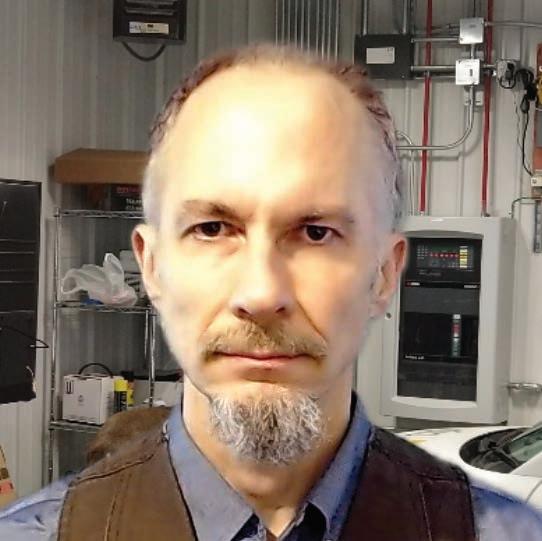

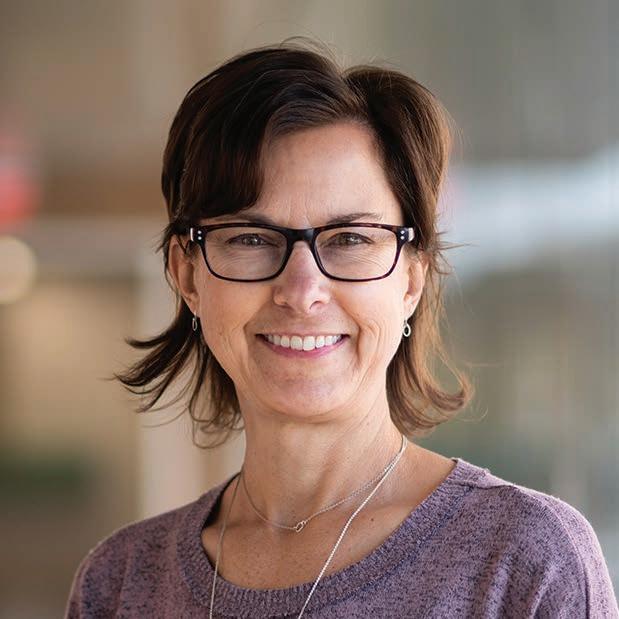

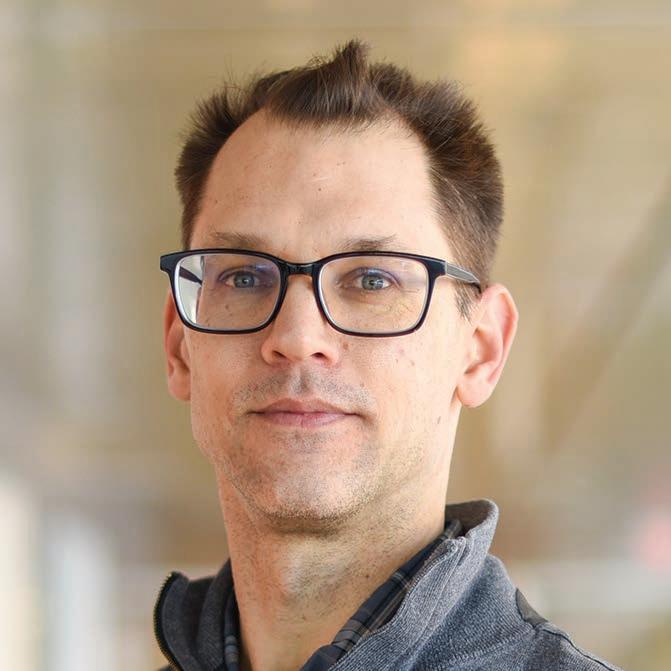
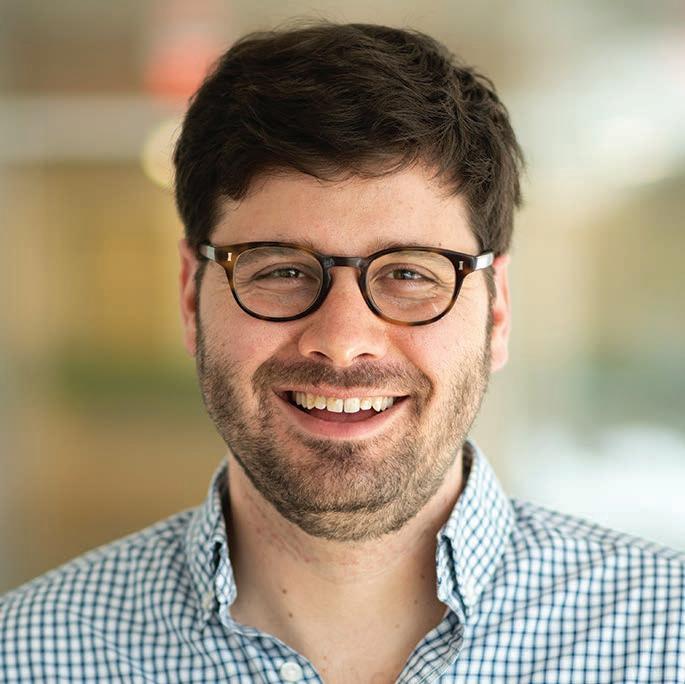





PEOPLE POWERING INNOVATION | 45
ELAHEH AHMADI Assistant Professor
EECS Outstanding Achievement Award
DAVID BLAAUW
Kensall D. Wise Collegiate Professor of EECS
ACM International Symposium on Microarchitecture Test of Time Award
ROBERT DICK Associate Professor
2022 Monroe-Brown Foundation Education Excellence Award
ANTHONY GRBIC Professor
David E. Liddle Research Excellence Award
ALFRED HERO
John H. Holland Distinguished University Professor of EECS; R. Jamison and Betty Williams Professor of Engineering
JEFFREY FESSLER William L. Root Collegiate Professor of EECS 2022 HKN Professor of the Year in ECE
ANDREW OWENS Assistant Professor
EECS Outstanding Achievement Award
IAN HISKENS Vennema Professor of Engineering IEEE PES Prize Paper Award
CYNTHIA FINELLI
Professor
Trudy Huebner Service Excellence Award
PETER SEILER Associate Professor
2021 Brockett-Willems Outstanding Paper Award
STEPHEN FORREST
Peter A. Franken Distinguished University Professor of EE; Paul G. Goebel Professor of Engineering 2022 H. Scott Fogler Award for Professional Leadership and Service 2022 IEEE William Cherry Award
ERIC MICHIELSSEN Louise Ganiard Johnson Professor of Engineering 2022 IEEE APS R. W. P. King Award Appointed to State of Michigan Council on Future Mobility and Electrification
CoE Staff Excellence Award
Amy Brooks, Research Administration Manager for the Optics and Photonics team, received a Staff Excellence Award from the College of Engineering in recognition of her exemplary service to faculty, staff, and students in the area of Optics & Photonics, as well as the Gérard Mourou Center for Ultrafast Optics Science.
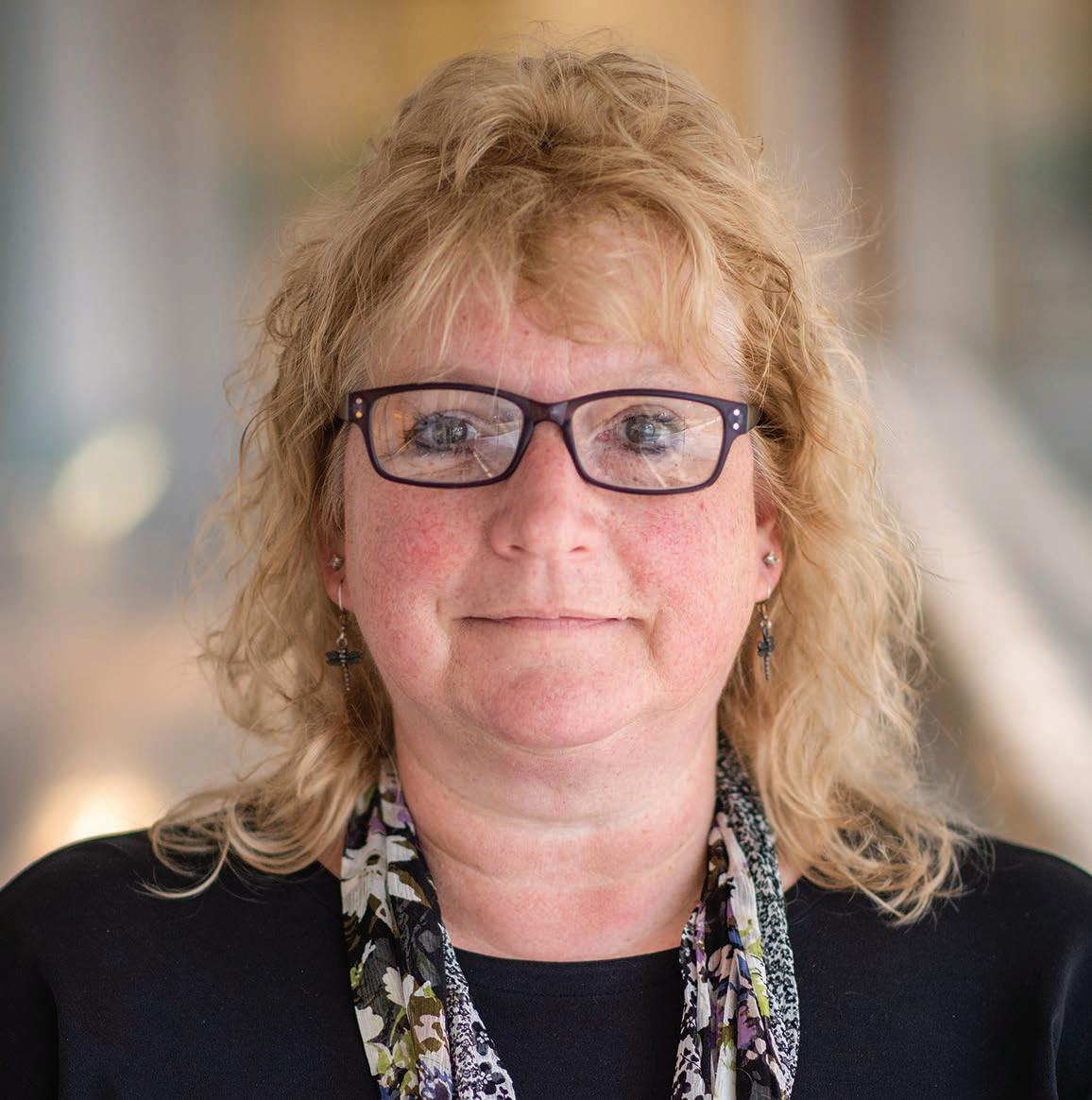
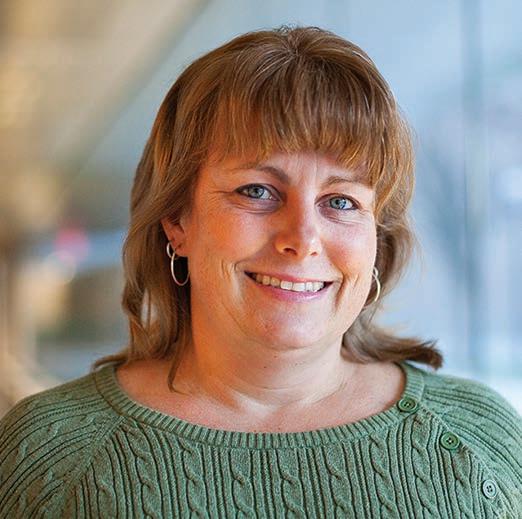
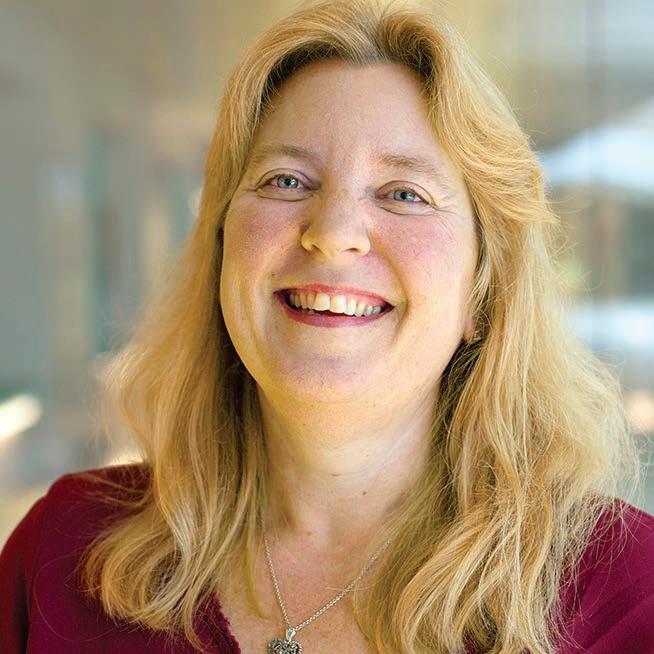
Brooks faced more challenges than most during the past two years. While dealing with the burden of the pandemic, she took on the responsibilities of two additional staff members who departed. Among the responsibilities handed to her were overseeing a $16M upgrade of ZEUS (Zettawatt-Equivalent Ultrashort Pulse Laser System). In addition, she began the process of managing $18.5M in operations for this NSF user facility that aims to welcome researchers from around the world.
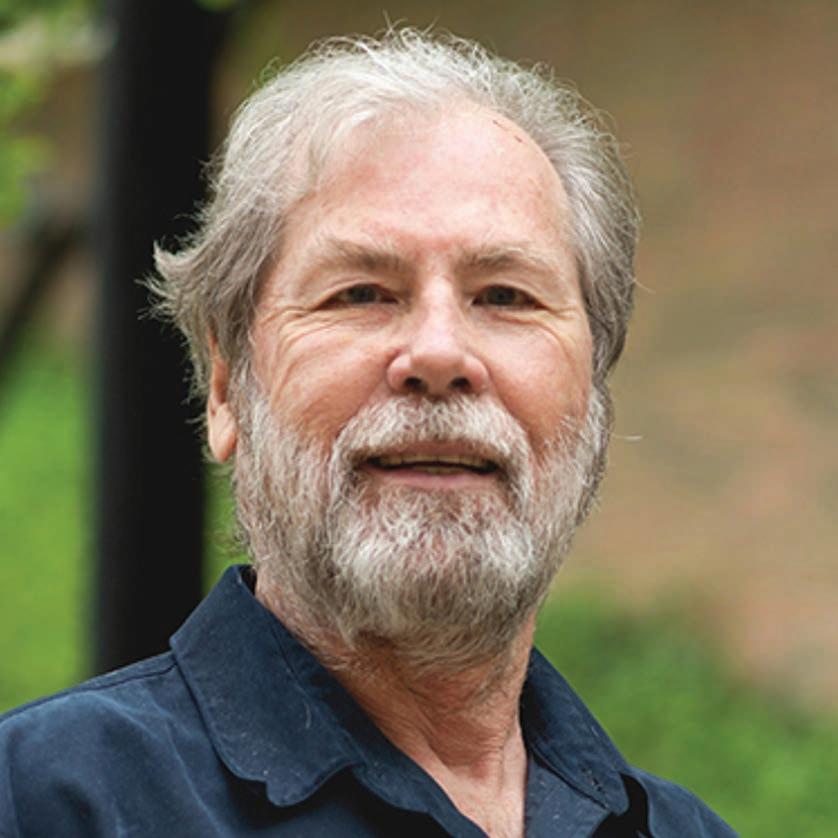 AMY BROOKS ECE Research Manager
AMY BROOKS ECE Research Manager
Staff Incentive Awards
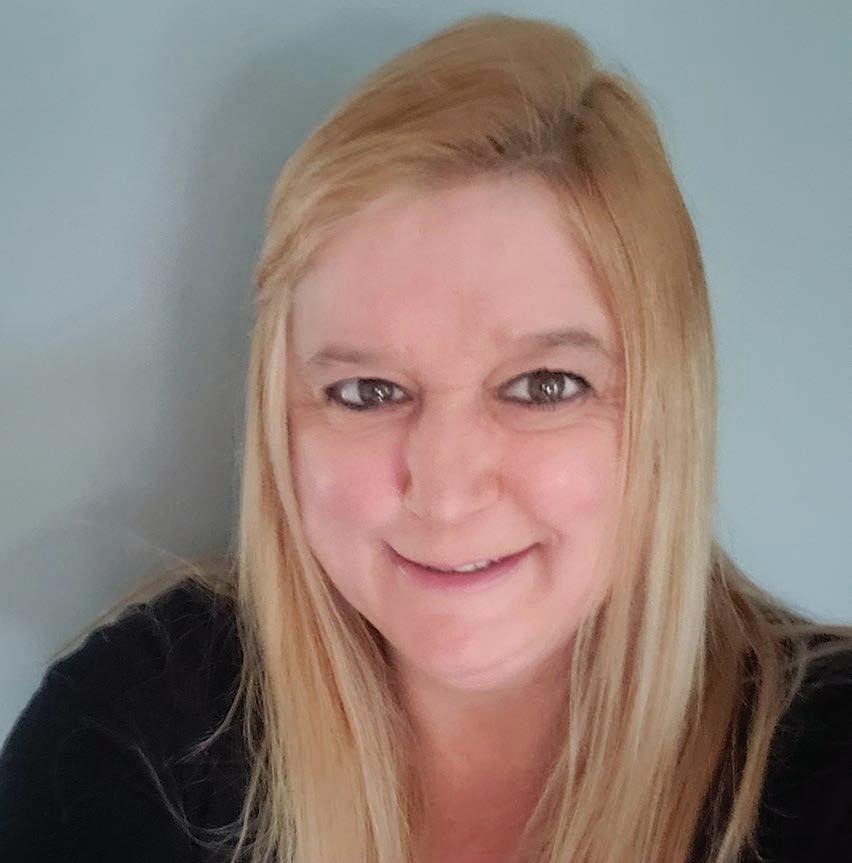
ECE’s culture of innovation, excellence, collaboration, and social equity is expressed in the work of six recipients of this year’s College of Engineering Staff Incentive Award.
SHELLY FELDKAMP ECE Research Administrator
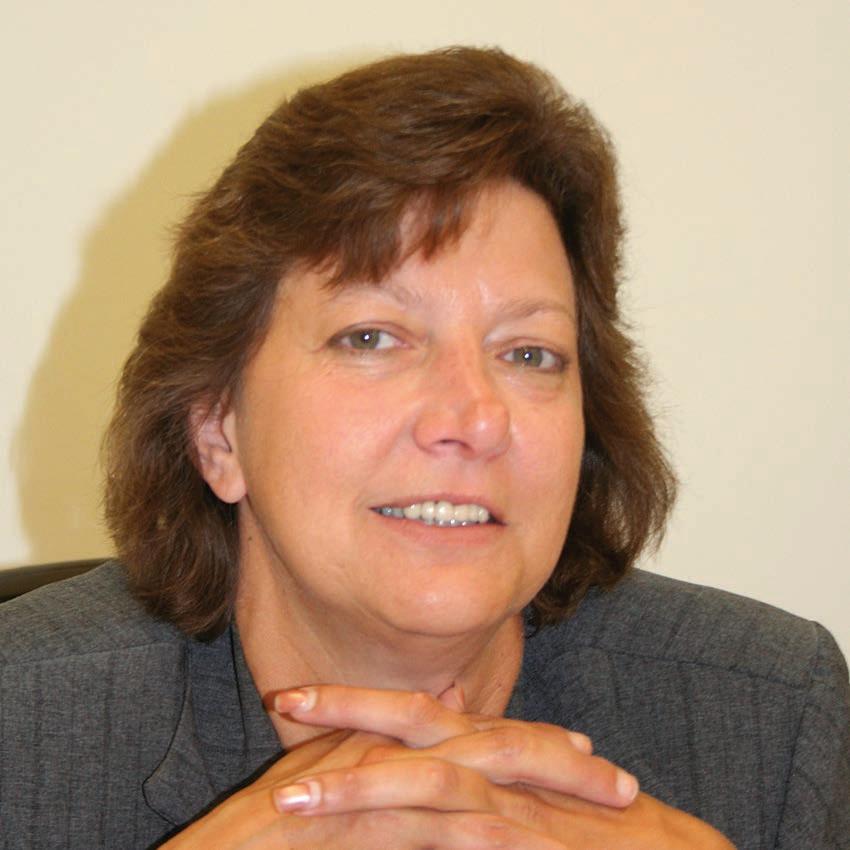 AMY WICKLUND ECE Senior Administrative Assistant
KIM NOVAK ECE Administrative Assistant
AMY WICKLUND ECE Senior Administrative Assistant
KIM NOVAK ECE Administrative Assistant
46 | PEOPLE POWERING INNOVATION STAFF AWARDS
CATHERINE LAWRENCE
ECE Undergraduate Advising Office Coordinator
ROBERT GILES EECS Senior Computing Consultant
PAULA PERNIA ECE Facilities Manager
GREG WAKEFIELD
Master of Interdisciplinary Everything, Retires
Greg Wakefield, esteemed champion of interdisciplinary education and research, retired on May 31, 2022. He leaves a legacy of lives deepened and broadened through his leadership in fostering connections between science and the arts at Michigan.

Greg Wakefield specialized in the field of signal processing, specifically perceptual acoustics, music processing, time-frequency distributions, signal analysis and synthesis, sound quality engineering, computational audition, psychoacoustics, auditory prosthetics, and statistical signal processing.
Shortly after arriving at Michigan in 1986, in addition to working on his second PhD, this one in psychology, he joined a team of faculty working on cochlear implants for people with hearing loss. His contributions are still in effect today. He then moved on to time frequency research with former faculty member Bill Williams, and developed a new interest in sound quality engineering.
Wakefield partnered with Prof. Mary Simoni in performing arts technology, and facilitated numerous collaborations between the fields of signal processing with music. His ability to bridge multiple disciplines and to communicate and collaborate made him a cherished leader of programs like ArtsEngine. Wakefield was the first faculty advisor for this program that began in 2006; its mission is to deepen and enrich the Michigan experience by providing a framework in which curiosity, creativity, collaboration, and passion are engaged through interdisciplinary teaching, learning, research, and community.
Over the course of his career, Wakefield taught and/or developed an astounding 19 different courses at the undergraduate and graduate levels. Most were in the area of signal processing, but others brought a truly interdisciplinary flair to the classroom with courses like Stradivarius as Biologist, and Shaping the Sound of Bronze, where students designed, cast, and tuned bronze bells before performing with them.
The course, Stradivarius as Biologist, shaped the career of Lucy Dhegrae, who said, “I’m still doing neuroscience and voice work as an adult and I hope it’s always part of my life. Thank you to the University of Michigan for letting someone like this be here.”
Greg graduated 18 doctoral students, who hold a wide variety of positions in academia and industry. It was one of these students, Maureen Mellody, who inspired Wakefield’s collaboration with renowned operatic tenor George Shirley (from whom he took lessons). Mellody is currently a Director, NRC Executive Office, with the National Academies of Sciences, Engineering and Medicine. And Greg went on to numerous acclaimed performances with Ann Arbor’s Comic Opera Guild.
Throughout his career, Wakefield focused on broadening the student experience at Michigan. “The University belongs to the students,” said Wakefield. “I really appreciate being part of their lives – being given the opportunity to teach them some things, to help train them, and to become a part of their foundation as they go forward. It has been a remarkable, totally unexpected, and totally fulfilling 36 years.”
The University belongs to the students. I really appreciate being part of their lives – being given the opportunity to teach them some things, to help train them, and to become a part of their foundation as they go forward. —Prof. Greg Wakefield
PEOPLE POWERING INNOVATION | 47
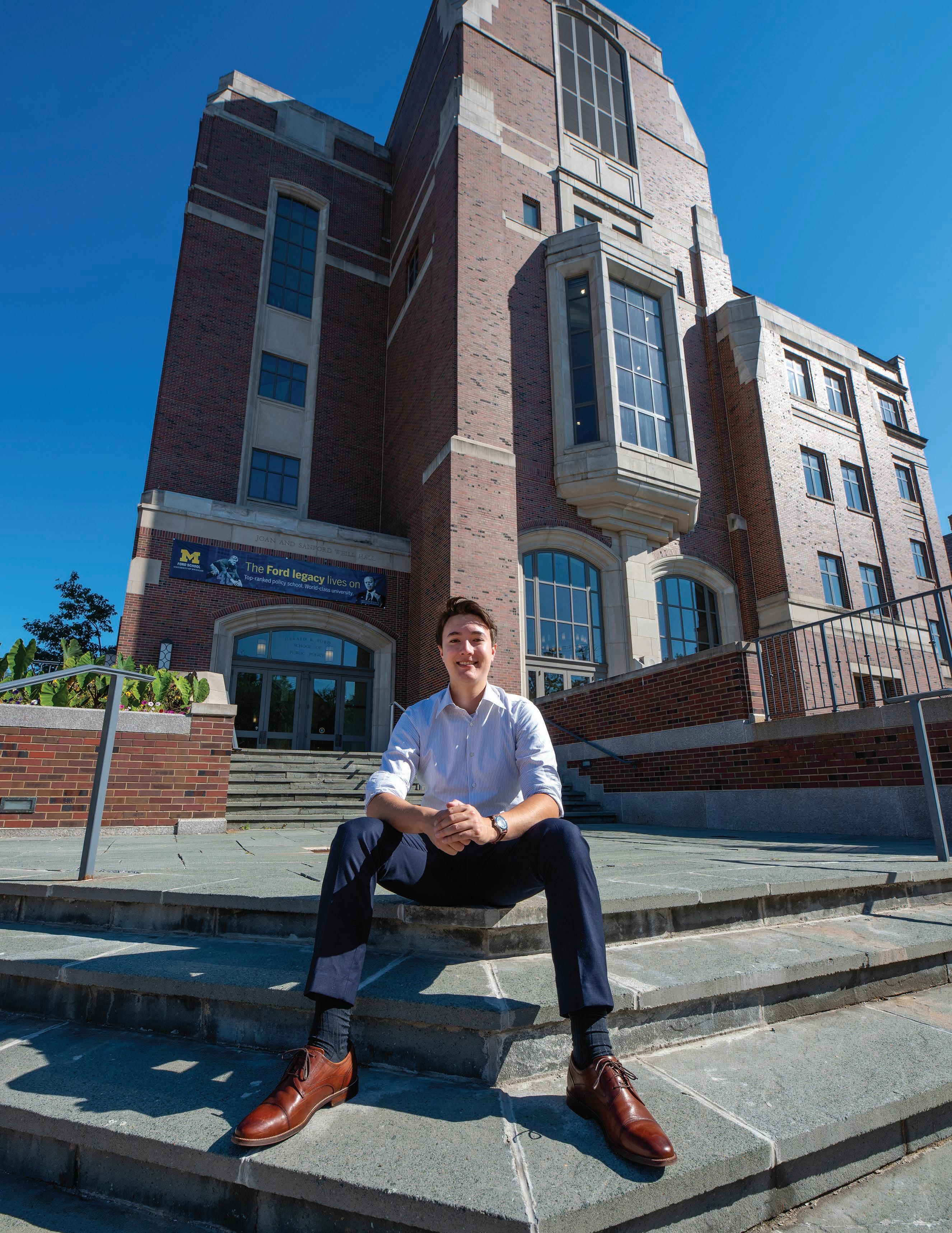
“It’s not every day that you do something that can impact half the planet.”
48 | PEOPLE POWERING INNOVATION
—Trevor Odelberg, PhD student
Designing Ethical Technology: ONE ENGINEER’S QUEST
Trevor Odelberg is a doctoral student working on batteryless solutions to relatively high power devices, like those that communicate with cell towers. He’s also pursuing a certificate in Science, Technology, and Public Policy (STPP) from the Gerald R. Ford School of Public Policy.
“This program has completely changed my perspective, and it’s given me a greater appreciation of my work,” Odelberg said. “We as scientists and engineers need to be better about being stewards for our technology and making sure that it's impacting people in the right way.”
The Tech
For his primary degree in Electrical and Computer Engineering, Odelberg works with Prof. David Wentzloff, an expert in low-power integrated circuits for wireless communication.

Low-power circuits combined with energy harvesting systems reduce the need for battery replacements or batteries altogether, but they’re traditionally used only for very limited low-power applications. Removing batteries from higher power devices, like those that communicate with cell towers, is a far more complicated challenge.
“Cellular IoT is sort of a new field,” Odelberg said. “It wasn’t very suitable to make low-power devices that communicate on the same networks as
cell phones, because cell standards are really complicated. However, with new 5G protocols, we’ve started thinking there are ways to lower the power of these devices considerably and potentially influence future standards.”
Odelberg is currently designing prototypes and evaluating ways to alter 5G and future wireless standards so that cellular devices of the future can run directly on harvested energy, no batteries required. That energy could be harvested from heat, light, or vibrations, or acquired through wireless energy transfer.
“That’s really exciting for us, because 50% of the world, or over 4 billion people, use these standards,” Odelberg said. “It’s not every day that you do something that can impact half the planet.”
Odelberg is also looking to reduce the power needed to run the hardware so less energy is needed overall. At the 2021 IEEE Radio Frequency Integrated Circuits Symposium, he and other members of Wentzloff’s team debuted a low-power wake-up receiver, the first of its kind that was designed for a cellular IoT protocol.
PEOPLE POWERING INNOVATION | 49
STUDENT SPOTLIGHTS
Trevor Odelberg cares as much about advancing technology as its future impact on people - and he’s getting an education in both
Trevor Odelberg tests a circuit in the Wentzloff lab. Photo: Silvia Cardarelli.
Going batteryless is crucial for a sustainable future, especially as the number of IoT devices continues to increase. Batteries, and the devices that rely on them, are a big source of toxic waste.
These kinds of social and ethical implications of technology are his focus in the STPP Program.
Tech in Society
“This program has completely changed my perspective, and it’s given me a greater appreciation of my work,” Odelberg said. “We as scientists and engineers need to be better about being stewards for our technology and making sure that it's impacting people in the right way.”
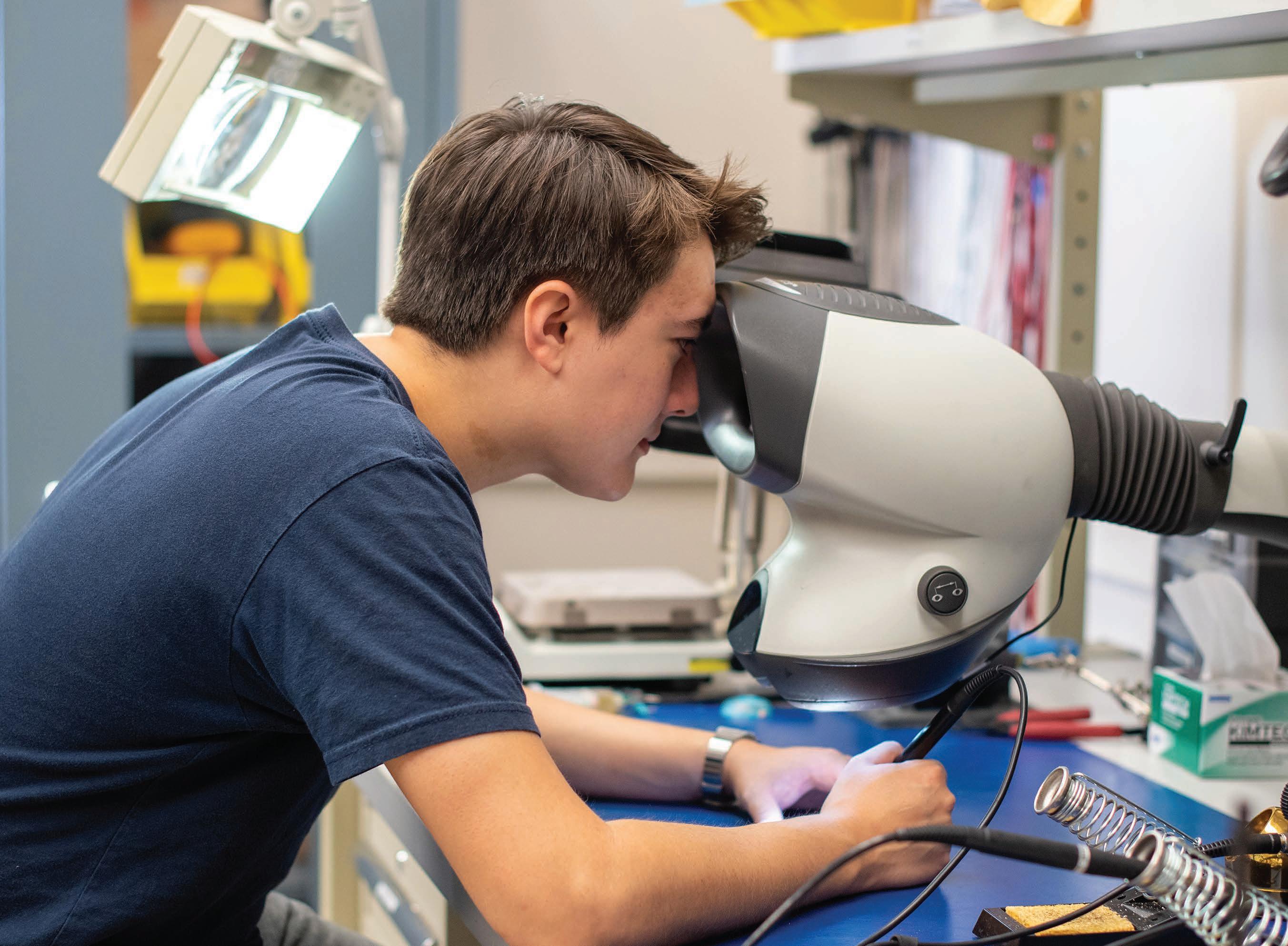
Odelberg was especially inspired to enroll in the STPP Program after watching the Facebook congressional hearings. The goal of the hearings was to investigate how Facebook was addressing the many harmful effects of its platform — from empowering the spread of misinformation to its damaging impacts on mental health, as well as the privacy concerns of how it gathers and shares user data — but most people may remember the hearings for how the senators
struggled to understand the most basic aspects of the platform.
“I really wished an educated engineer or a technical person was there to ask those harder hitting questions,” Odelberg said. “I think sometimes as scientists, we think our work is apolitical and we don’t have to worry about the bigger world, but that’s not true. We need to be able to engage with policy and the politics of our work, because otherwise, someone else will do it for us, and they may not know as much about it as we do.”
Training students to effectively use scientific and technical knowledge to inform public policy processes for societal benefit, either in policy careers or in academia, is the main goal of the STPP. Students come together from the natural and physical sciences, engineering, public policy, public health, law, information, environmental studies, and more to debate a wide variety of ethical issues surrounding STEM and STEM policies.
“Communities are increasingly concerned they do not benefit from research and development, and that the risks of emerging technologies may outweigh their benefits,” said Molly Kleinman, the Managing Director of the STPP. Kleinman says the STPP is committed to bringing the voices of affected communities into public and policy conversations about science and technology.
Helping the Detroit community
Through the STPP Student Research Corps, Odelberg currently works with researchers in the Ford School and Joshua Edmonds, Director of Digital Inclusion of the City of Detroit, on the municipal fiber internet project in the City of Detroit. This project aims to deliver high speed fiber optic internet access to every home and business in a Detroit neighborhood that’s most in need of improved access and reliability.
“This is a great project for me, because I am able to take my technical background in ECE and apply it to a real-world problem locally in Detroit,” Odelberg said.
50 | PEOPLE POWERING INNOVATION
“We need to be able to engage with policy and the politics of our work, because otherwise, someone else will do it for us, and they may not know as much about it as we do.”
—Trevor Odelberg
MOHAMMAD AAMIR SOHAIL: Quantum Mentoring for the Greater Good
Mohammad Aamir Sohail took time from his normal work as an ECE doctoral student to help mentor a team to third place at the 10th Annual NYUAD International Hackathon for Social Good, held in Abu Dhabi. The specific goal this year was to create a program that applies one or more quantum algorithms to a social good problem.

The team’s goal was to develop a web application, mediQal, to optimize mobile medical services in a society that is aging, with the added goal of reducing greenhouse emissions. The team determined it was most likely “impossible to find the optimal routing solution for large fleets of emergency vehicles using classical approaches.” So they turned to quantum computing, specifically quantum annealing, which is ideally suited for large scale problems – which in this case means hundreds of vehicles and thousands of patients.
Sohail’s research is in the area of quantum information theory; he is advised by Prof. Sandeep Pradhan.
“It was a good learning experience to be with so many people from different nations and different backgrounds –undergrad and graduate students, and industry people,” said Sohail. “I also enjoyed contributing to quantum computing problems.”
KATHRYN BEEMAN Named Irma M. Wyman Scholar for Her Efforts Supporting Women in STEM
Kathryn Beeman, an Electrical Engineering undergrad, has been named an Irma M. Wyman Scholar by the Center for the Education of Women (CEW+). The award recognizes her contributions as a leader in the U-M chapter of the Society for Women Engineers (SWE) to support women in STEM and improve gender equity in STEM fields. Beeman has held multiple leadership roles in SWE, and she currently serves as the External Vice President.
Beeman’s connection to U-M began in middle school thanks to one of her teachers who would arrange Saturday field trips to U-M for girls who were interested in STEM. The teacher, a U-M alum, would arrange for the students to have hands-on activities and tours of labs on campus.

Beeman plans to pursue a career in the automotive industry with a focus on electric vehicles to help support a zeroemission future. Her interest in semiconductors was fostered while working as a lab assistant in the Lurie Nanofabrication Facility.
The award is named after U-M alum, Irma Wyman (BSE EngMath ’49), who was a pioneer in the field of computers, beginning with her work on some of the earliest programmable machines ever made. She also served as the first female vice president at Honeywell. Wyman received the CoE Alumni Society Medal in 2001.
PEOPLE POWERING INNOVATION | 51
STUDENT SPOTLIGHTS
Mentors and team members of the mediQal hack. PhD student Mohammad Aamir Sohail stands fourth from the right.
STUDENT TEAMS
SPARK Electrifies Motorcycle Racing
Michigan’s SPARK Electric Racing team claimed Second and Third place trophies at the American Historic Racing Motorcycle Association Formula Lightning series competition in New Jersey this summer. It was their first time competing at this event, and second-ever competition.


The Formula Lightning series is the premier zero emissions motorcycle road racing series in the US. Bikes may be powered by any means of propulsion that does not emit exhaust, such as electricity, magnetism, gravity, flywheels, springs, etc.
“There’s a lot of passion to make something like this more popular, because it’s such a cool intersection of what's going on with EVs in today's world and motorcycles,” said Electrical Engineering undergrad Aashish Harikrishnan, who serves as the team’s Electrical Lead. “It’s freaking awesome.”
SPARK Electric Racing entered their third motorbike, Atlas, in the competition (their second bike did not compete due to the pandemic). Able to reach speeds of up to 150 mph, Atlas features a custom tube frame chassis, custom battery, and fully functional onboard telemetry.
Professional motorcycle
the course.
Left: SPARK team members Leo Lavigne (ME), Peter Jaskoski (ME), Mustafa Khan (ME), Jackson Bahm (CS), and Aashish Harikrishnan (EE) gath ered around their electric motorcycle, Atlas.
SPARK aims to operate on a two-year cycle, with the first year focused on designing the motorbike and the second year on manufacturing and testing. While the pandemic slowed the production down for a while, SPARK stayed on schedule for this summer’s competition series. They were the only collegiate team participating this year, with their competitors comprised mainly of private e-bike (electric bike) teams.
The competition was held on a full circuit course featuring 22 turns over two and half miles and three laps.
“We’re creating our own templates from the ground up,” Harikrishnan said. “That challenge was one of the most attractive things about the team to me. Some of these bigger teams have a lot of regulations and specifications they have to meet – for our bike, we just need to make it safe, make it work, and make it run fast.”
SPARK hired David McPherson, a professional motorcycle driver, for the actual races, which were held on two separate days.
“It was really cool having a rider test the bike to its limits,” Harikrishnan said. “We got a lot of good data, and it helped us work out some issues. I think we have even more potential.”
52 | PEOPLE POWERING INNOVATION
“Itʼs such a cool intersection of whatʼs going on with EVs in todayʼs world and motorcycles.”
—Aashish Harikrishnan, EE undergrad
driver David McPherson tests Atlas on
STUDENT TEAMS
MRacing Smokes Competition with Their First Electric Race Car
sharing resources and knowledge.
The car may be new, but this question MRacing poses to new recruits remains as relevant as ever. Their first fullyelectric race car goes from 0 to 60 in less than three seconds, and with it, the team defended their First-Place title in the United States at Formula SAE Michigan for the fourth consecutive year while placing Second overall. Their previous first-place titles were won with their combustion engine cars.
“We’ve got working as a team locked down, especially with bringing people together from various different backgrounds and different specializations on the car,” said Computer Engineering undergrad Nathan Gould, the team’s Interface and Telemetry lead. “You never know what will go right and what will go wrong, but our people really know how to fix different issues on the fly.”
This adaptability has been a particular strength for the recent evolution of MRacing. This past year, they merged with Michigan Electric Racing (MER), for they had long been collaborators
MER started as Michigan Hybrid Racing (MHR) in 2012. In 2018, the team underwent a transition to fully electric vehicles and constructed two electric formula cars in 2019 and 2021. Last year, MER won the Electric Vehicle Class at Formula SAE Michigan and took Second Place at Formula SAE North.
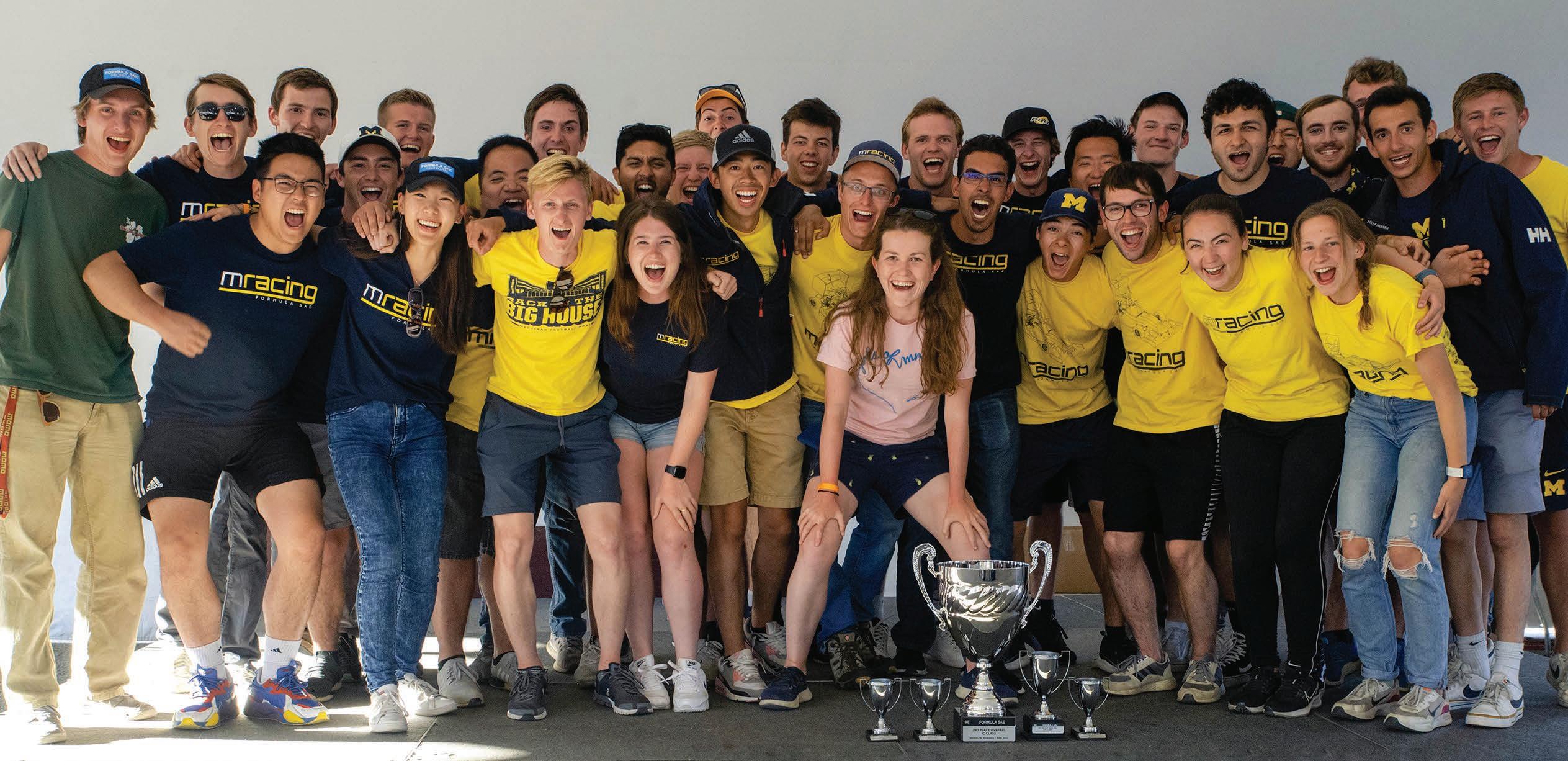
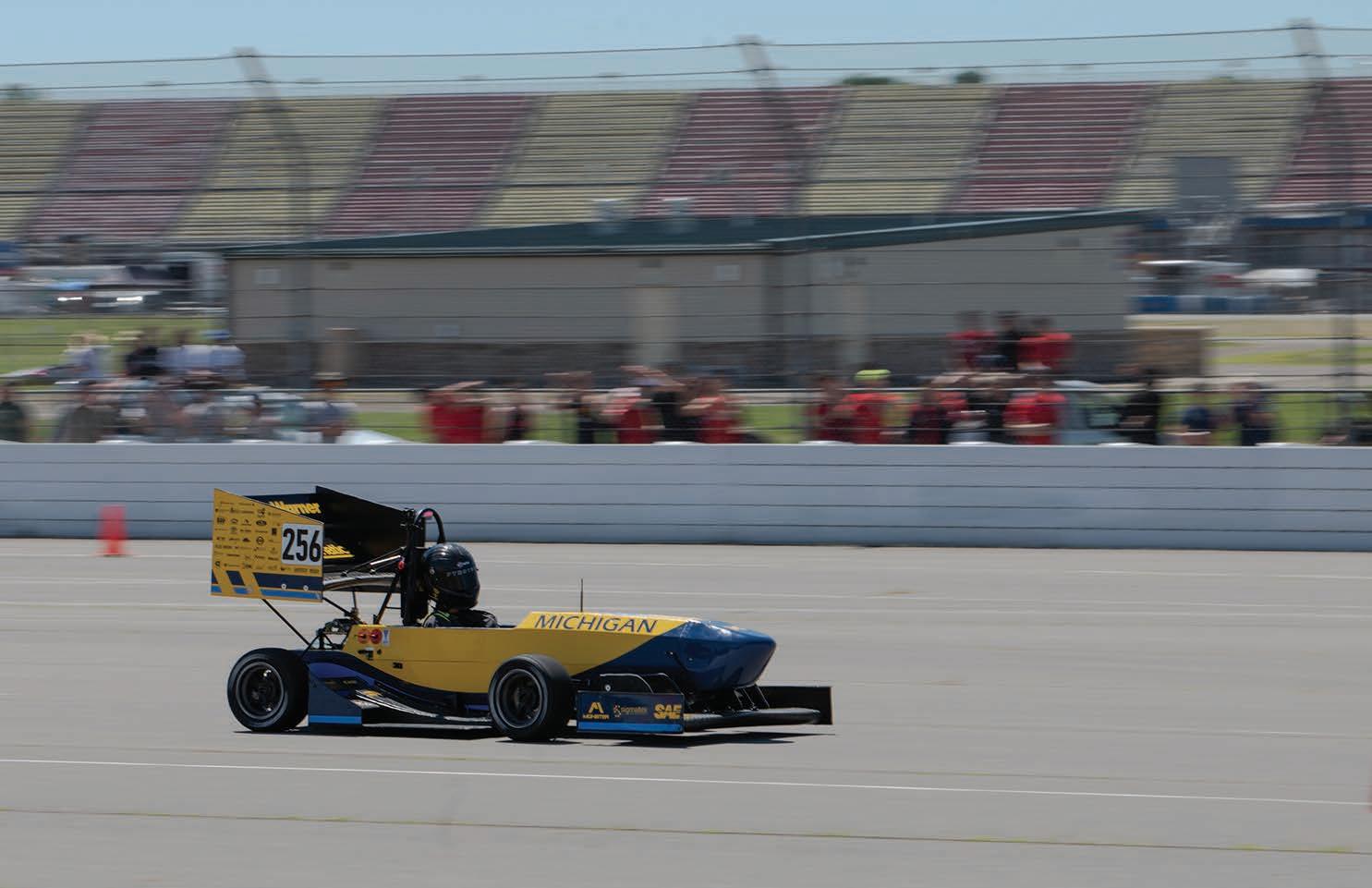
“A lot of the competitive teams we want to race in Europe have moved to electric, and the auto-industry over here is going electric as well,” Gould said. “We wanted to get ahead of the curve and prepare our engineers for real jobs and experience in the automotive industry.”
This year, Gould is the team’s Autonomous Development lead and Low Voltage lead. He continues to serve as one of the drivers during competition.
“I've always been interested in racing, and I watched a lot of NASCAR with my dad growing up,” Gould said. “I was pretty good at Go-Karting too, where I learned some of the basics of racing. When I joined the team, there were two open spots for drivers, and I auditioned and won one of the spots.”
PEOPLE POWERING INNOVATION | 53
“Do you want to go fast?”
“We wanted to get ahead of the curve and prepare our engineers for real jobs and experience in the automotive industry.”
—Nathan Gould, CE undergrad
Baja Racing Wins 1st Place Overall Award at SAE Louisville


find creative solutions in order to meet deadlines.
“Every year, we build a whole new frame for the car, but this past year we weren’t able to do that, because we didn’t have the time,” said Electrical Engineering junior Bill Wolf, who also works on the CVT on the Drivetrain team. “We ended up having to repurpose our old frame. That was one of the biggest challenges, because we also had to incorporate four-wheel drive, but the frame was originally built for two-wheel drive.”
Michigan’s Baja Racing team, which competes in rigorous off-road motocross races, resumed competition in fine form after a year of cancellations due to the pandemic. The team competed in one virtual competition (Baja SAE Knowledge Event) and one in person race (Baja SAE Louisville), placing top ten in every event across both competitions out of a field of more that 75 teams. Their success earned them the 1st Place Overall Award at SAE Louisville.
“It was four days of not a lot of sleep and a lot of hard work,” said Electrical Engineering junior Jake Gates, who serves as the Continuously Variable Transmission (CVT) subsystem lead on the Drivetrain team. “It was a lot of fun.”
The season was spent largely at home in Zoom meetings, but as restrictions eased, the team was able to get back into the Wilson Project Center where they constructed their car. However, strict distancing and capacity requirements, as well as reduced access hours, meant the team had to
Competition brought its own set of challenges, such as when the brake light fell off during the Endurance event and Gates had to solder a new one into place on the spot. During the Maneuverability event, one of the hubs broke as the car finished a drop-off, which also sheared the front suspension mounting tabs. According to the competition report, “A colossal effort by the team brought the car back into working order in less than two hours, including welding new tabs on the frame and swapping the hubs.” Despite the crash, the team placed second in the event, which was their best individual dynamic result.
In addition, the team’s four-wheel drive implementations were a triumph. They were the fastest four-wheel drive car and the third fastest car overall at SAE Louisville. This year, incorporating four-wheel drive was optional to earn extra points, but in the future, it will be required for all competing vehicles.
“That was a major reason we won,” Wolf said. “We not only did really well, we also got the bonus points for having four-wheel drive. It was cool to see that all the changes we made actually worked and produced a successful vehicle.”
54 | PEOPLE POWERING INNOVATION
STUDENT TEAMS
“A colossal effort by the team brought the car back into working order in less than two hours.”
STUDENT TEAMS
MRover Crowned Champions of the University Rover Challenge
The Michigan Mars Rover team (MRover) are the champions of the 2022 University Rover Challenge (URC), a competition where student teams from around the world design, build, and test rovers for planetary exploration. This is the first time the team has won the competition; their previous best finish was seventh place in 2019. The 2020 and 2021 URCs were canceled due to the pandemic.
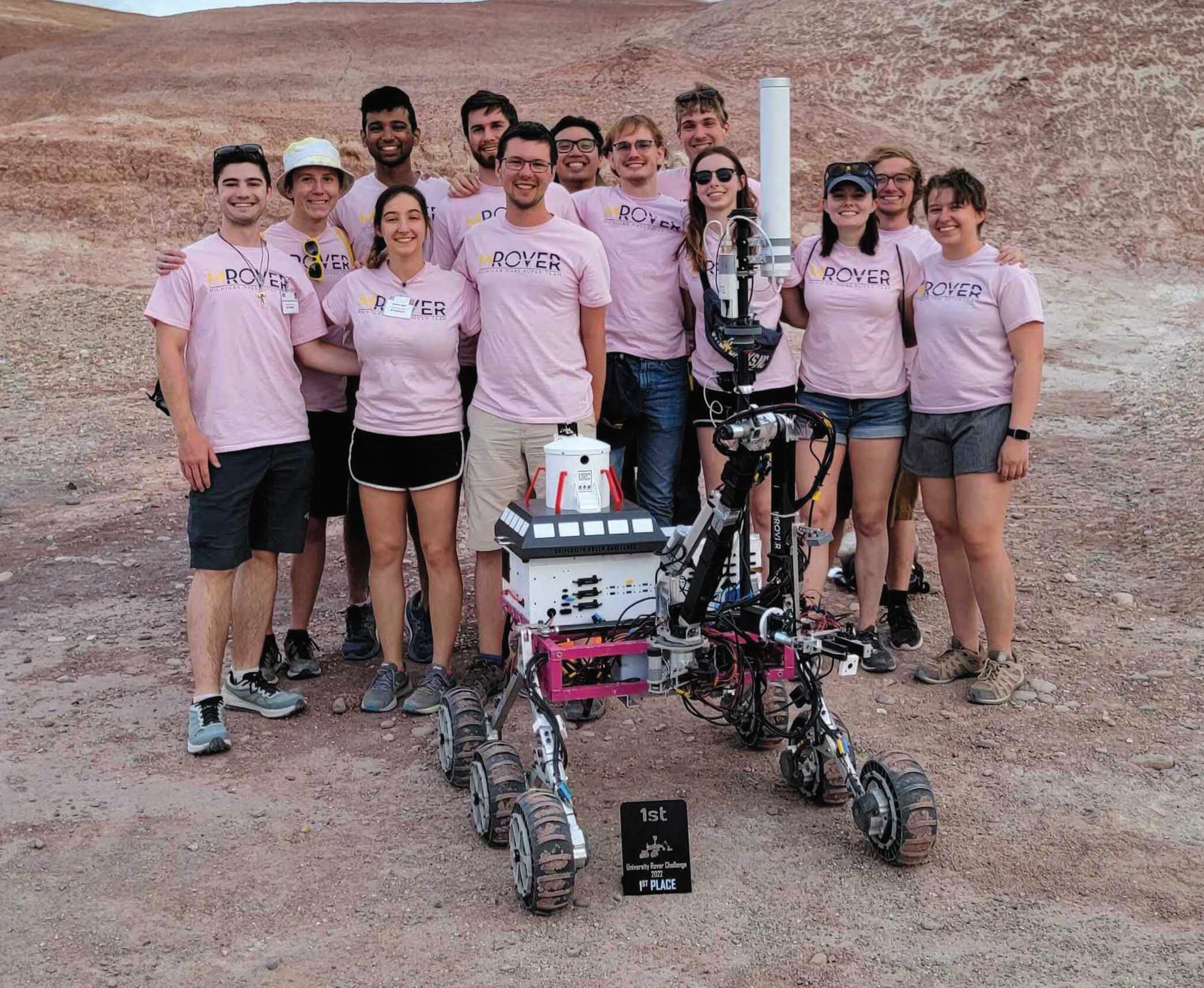
“It was definitely challenging, because almost no one on our leadership team had been to a competition before,” said ECE Master’s student Rachel Li, the MRover president. “But we prepared as best as we could, and we were really happy with how things went. We performed really, really well.”

The URC takes place over several days in June at the Mars Desert Research Station in the Utah Desert. It’s run by The Mars Society, the largest advocacy
group for the exploration and settlement of Mars. The challenge features four missions: 1) Autonomous Navigation; 2) Science, where the rover collects and tests a soil sample, and the team presents the findings; 3) Extreme Retrieval & Delivery; and 4) Equipment Servicing, which tests the dexterity of the rover’s robotic arm.
During the pandemic, the MRover team redesigned the rover from the ground up.
“At first, it was difficult to figure out how we were going to motivate people, because our competitions kept getting canceled,” Li said. “It was really important that we maintained our community and supported a diverse and equitable environment. Our approach became a lot more learning-focused and relationshipsfocused than competitionfocused.”
This tactic helped the team perfect and test their designs in ways they never had before, giving them a helpful edge in competition this year. For months before the URC, the team devoted themselves to a robust series of mock competitions and rigorous tests.
“We tried to make each operation as difficult as possible to stress test and fix issues,” said Electrical Engineering undergrad Nick Cahill, the MRover Chief Engineer. “Like when we were preparing for the science mission, we crushed up green chalk so it would look like biomass, but it’s not actually a sign of life or anything.”
The team has long used the Wave Field and Baja Racing’s track to practice, but these terrains are very different from the desert where the URC is held. With the completion of the new Robotics Building, the team can further challenge the rover and drivers on the new Mars Yard and Robot Playground.
“What’s great about MRover is that you get to do something totally different every year,” said Cahill, who will be starting his Master’s in ECE at Michigan this fall. “I was constantly pushing myself and learning new skills. By the end of the year, you’ve experienced the entire process, from design all the way to the final product.”
PEOPLE POWERING INNOVATION | 55
HKN earns Outstanding Chapter Award
The University of Michigan Beta Epsilon Chapter of IEEE-HKN was recognized once again with an Outstanding Chapter Award for the 2020-21 academic year. This national award recognizes Chapter excellence, and the Beta Epsilon Chapter is a regular recipient of the award.
In addition to the outstanding scholarship required to be invited to join HKN, members are expected to contribute their time to a wide variety of causes. During 2020-21, they contributed about 900 hours of service, in addition to planning and attending meetings and social events.
Service activities included tutoring, volunteering at the Ann Arbor Hands-On Museum and Sequoia Place (a retirement center), and restoration activities at Nichols Arboretum and the Matthaei Botanical Gardens. They also sponsor Scouts Day, the EECS Professor of the Year contest, and host a Women’s-Faculty Mixer.
“I first joined the Beta Epsilon chapter of HKN in the Fall of 2018,” said James Worthington, HKN President during the Winter 2021 term, “and it was doubtlessly the best decision I made during my time at the University of Michigan. Since then, HKN has provided me with opportunities to connect with the students who share the struggles of my major, and has introduced me to some of my closest friends.”
U-M Society of Women Engineers Honored with Top Awards at National Conference
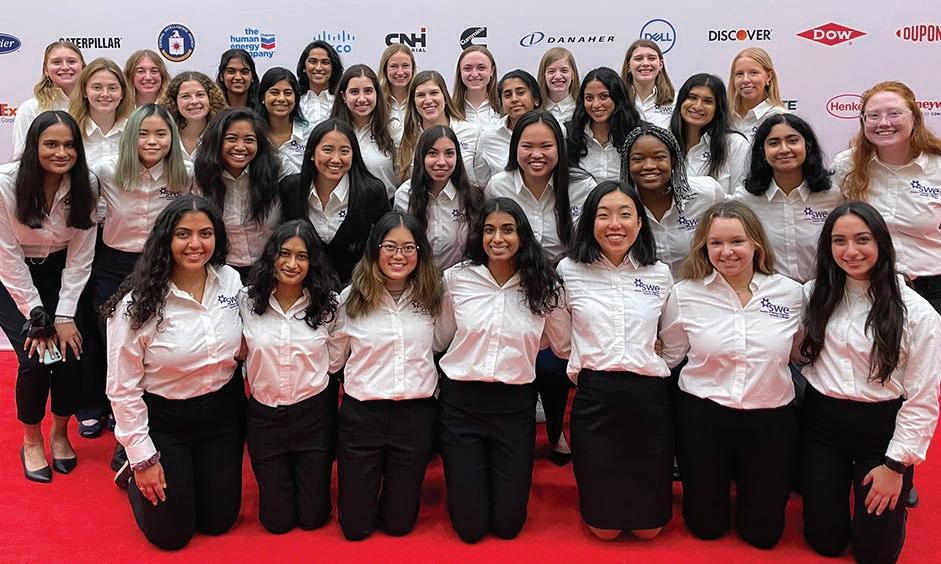
At last year’s Society for Women Engineers (SWE) National Conference, the U-M chapter took home three awards, including the top award, Collegiate Gold. Collegiate Gold recognizes chapters that achieve overall excellence and engagement with all components of SWE’s mission, which is to empower women to achieve their full potential in careers as engineers and leaders, expand the image of the engineering and technology professions as a positive force in improving the quality of life, and demonstrate the value of diversity and inclusion.
“One thing we’re really trying to focus on is intersectionality,” said Kathryn Beeman, an Electrical Engineering student who served as U-M SWE’s External Vice President. “We want to do more to support and empower women of color. We’re also open to anyone regardless of gender identity. As long as you support the mission of empowering women in engineering, you’re more than welcome to join.”
The U-M Chapter also earned awards for Best Practice: Globalization, for excellence in empowering women in engineering and technology regardless of geography or career stage, and Best Practice: Public Policy, for their strong STEM promotion within the community.
“The SWE conference is a fantastic way to break out of the ‘college bubble’ on campus and meet new people from around the world, but I found it an equally fantastic way to bond with people from U-M that I already knew and to grow closer as a SWE section,” said Himaja Motheram, a Computer Engineering student who formerly served as the Advocacy Officer. “From taking members to get bandaids for their blisters mid-conference, to having dinner at the end of the day and learning more about each other, to just exploring Indianapolis and having fun – there were so many new experiences, but they were all the more valuable, because we were experiencing them together.”
56 | PEOPLE POWERING INNOVATION
STUDENT
TEAMS
Solar Car “Aevum” to Test Solutions Ahead of Next World Solar Challenge
After two years in the making, the U-M Solar Car Team’s new car, Aevum, is equipped with sensors to explore how the team can improve its design further before the 2023 race.

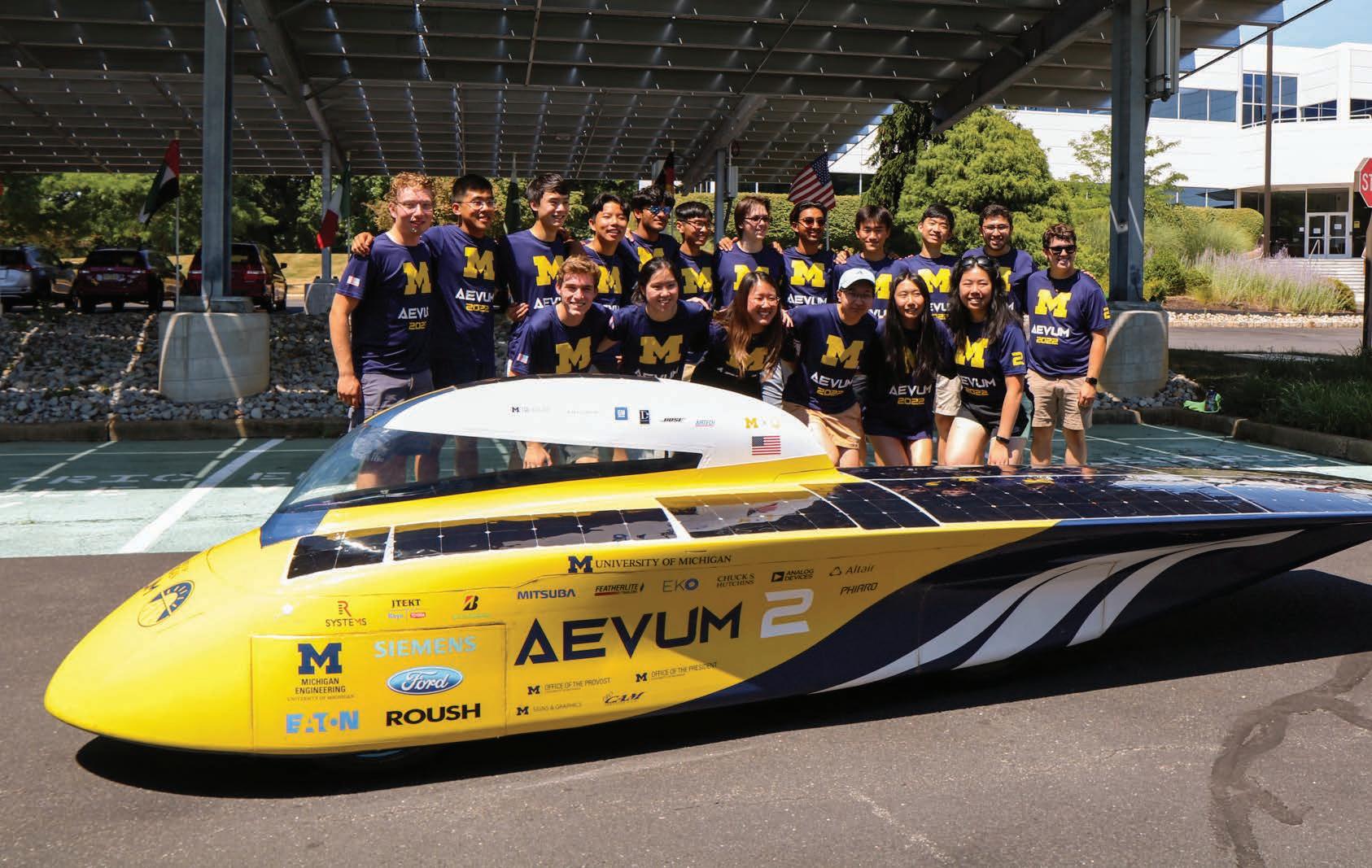
The team designs vehicles according to the requirements of the Bridgestone World Solar Challenge race that typically takes place every two years in Australia. In ordinary times, Aevum might have raced across the outback last year, but the 2021 race was canceled due to the ongoing pandemic and travel restrictions.
Even so, Aevum is designed to meet the 2021 race specs, which included a new requirement that the vehicle can accommodate a 6’4″ mannequin in the driver’s seat. In addition, the highly efficient gallium arsenide solar cells that drove radical changes to the car’s exterior in 2017 were banned in favor of more environmentally friendly silicon cells. The team also placed solar cells on the canopy over the driver for the first time, an approach they had avoided in the past due to the wiring complications that come with electrifying a moving part.
Like many other organizations, they had to quickly learn how to draw on shared screens, coordinating across time zones and around the world. They dealt with redesigns due to part shortages. When the parts were on site, and they started to assemble Aevum, they found that some pieces didn’t fit together as well as they had in the CAD software. Still, the team worked through modifying the parts so that the car could come together.
“This is the first and only car we’ve designed entirely remotely,” said Terry Li, the team’s engineering director and a rising junior in Electrical Engineering. “That’s created some issues with
systems integration, but we tackled those successfully so far, and things are looking up.”
Aevum ran an endurance test and exhibition that the team calls the “Sun Run,” traveling from New York City to Los Angeles stopping in Kansas City and Albuquerque, New Mexico for events at local museums. The exhibition ended at the Petersen Automotive Museum in LA, where the 2001 U-M solar car MPulse resides.
Aevum is the sixteenth car made by the Michigan Solar Car Team since its founding in 1989. The team has won the American Solar Challenge nine times, had podium finishes in the Bridgestone World Solar Challenge seven times, and won its first international championship in 2015 at the Abu Dhabi Solar Challenge. With more than 100 students from schools and colleges across the university, it’s one of the largest student organizations on campus.
PEOPLE POWERING INNOVATION | 57
STUDENT TEAMS
“This is the first and only car we’ve designed entirely remotely.”
—Terry Li, EE undergrad
Students turned out for the annual Festifall event, where more than 70 teams, clubs, organizations, and societies gathered in the Grove. Two days later 740 organizations participated in Festifall on the Main Campus.
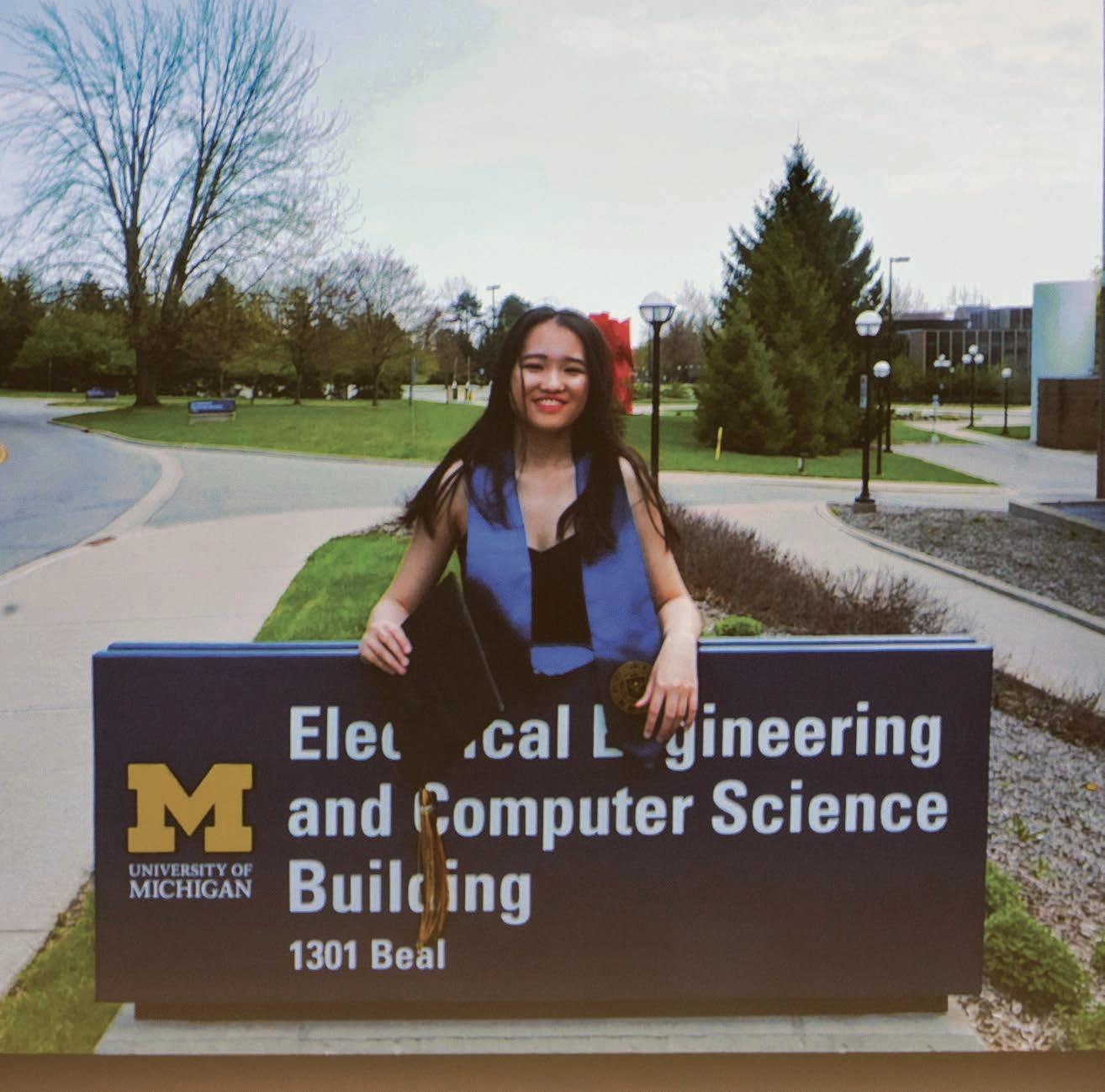
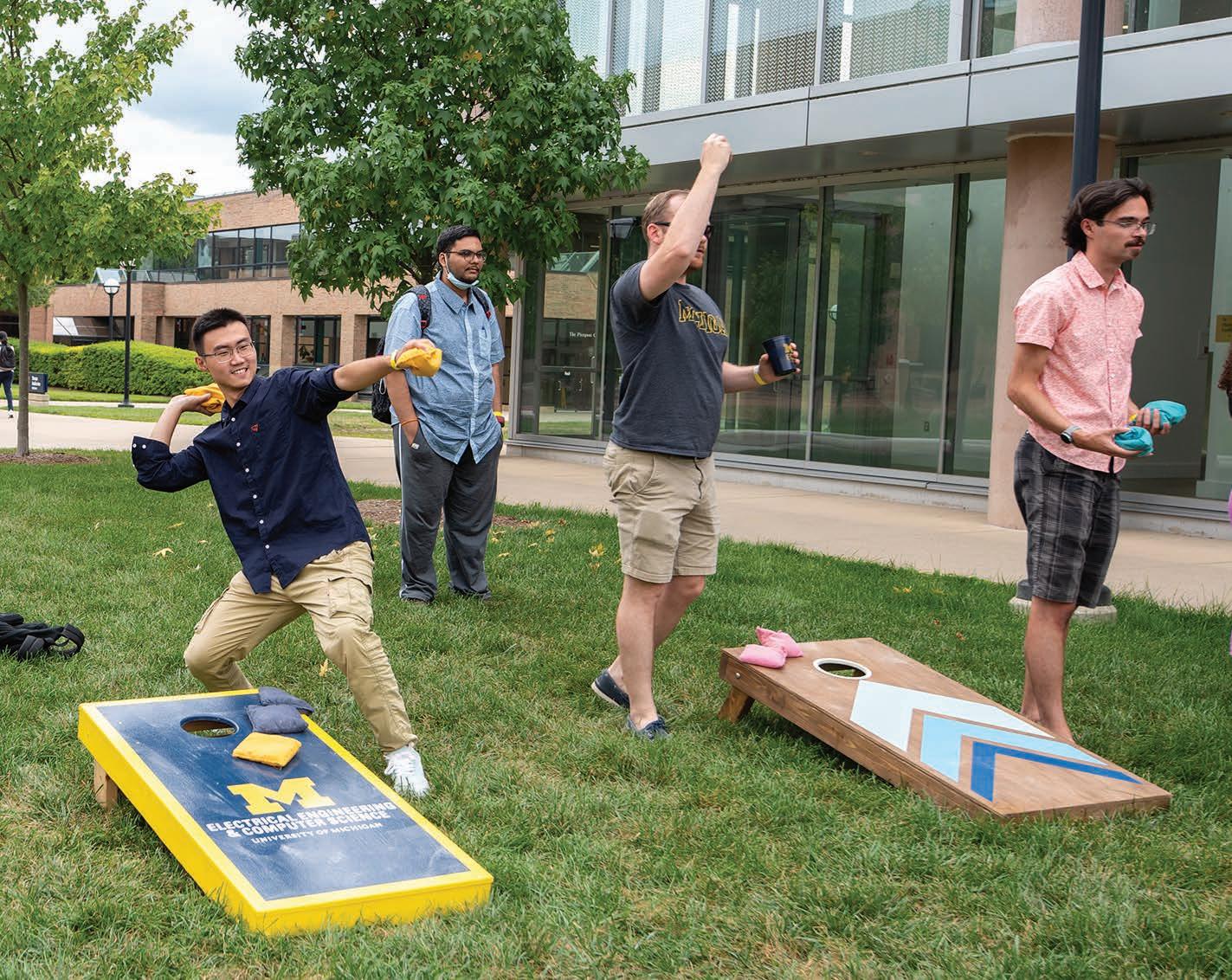
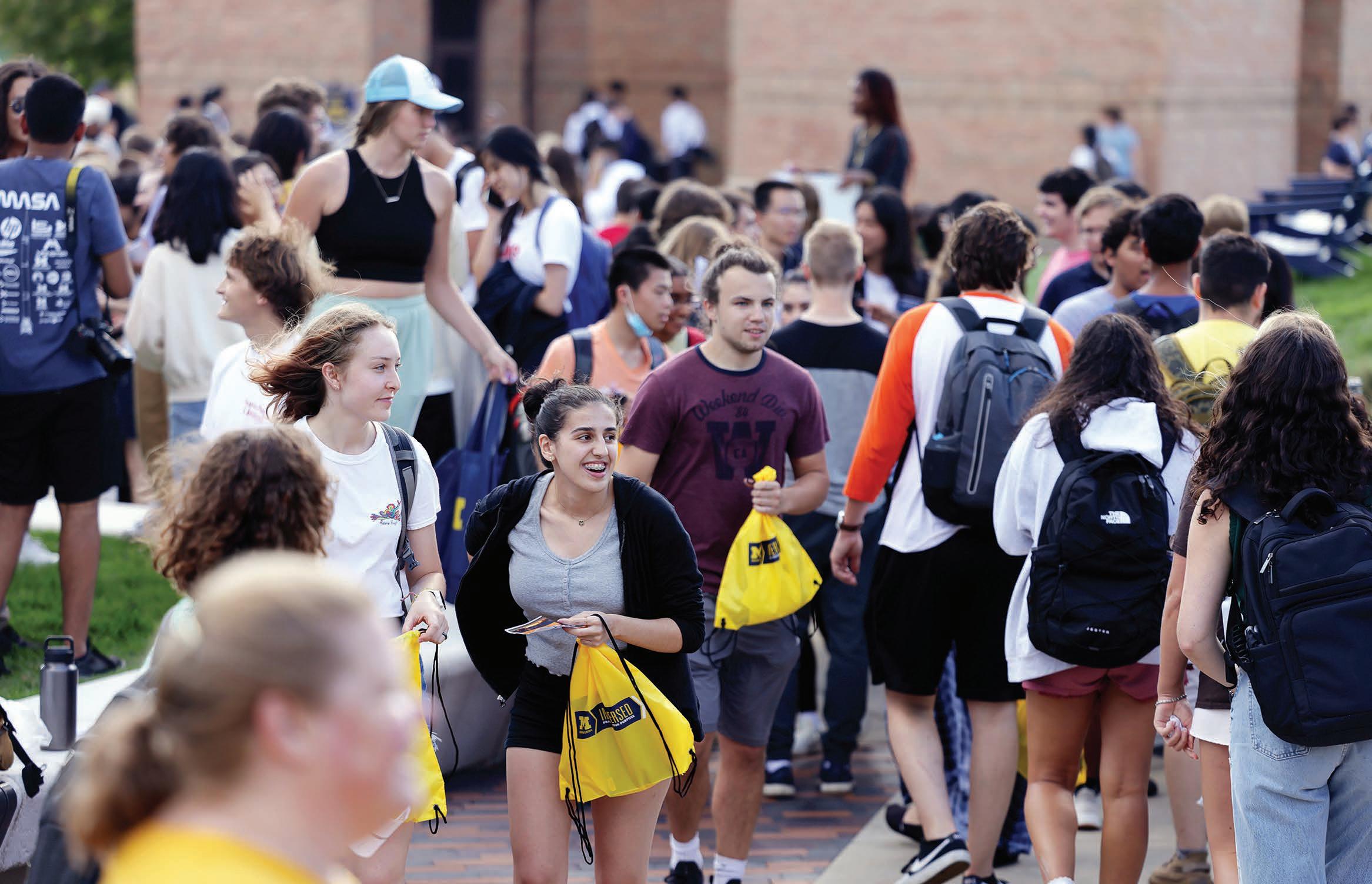
58 | PEOPLE POWERING INNOVATION
Photo: Brenda Ahearn
Students from the Class of 2020 returned in 2022 to celebrate their graduation. Their own commencement was canceled due to the pandemic.
Photo: Marcin Szczepanski
ECE held a special event for new and returning graduate students in September 2022. Photo: Silvia Cardarelli
We bring in our specially-trained dogs to cheer up our students. The owner of this St. Bernard, named Sky, is ECE alumnus Rob Hower.

Cardarelli

Participants in the ECE workshop of the Discover Engineering camp examine minuscule computers, some smaller than a grain of rice, created by ECE faculty and on display in the EECS building.
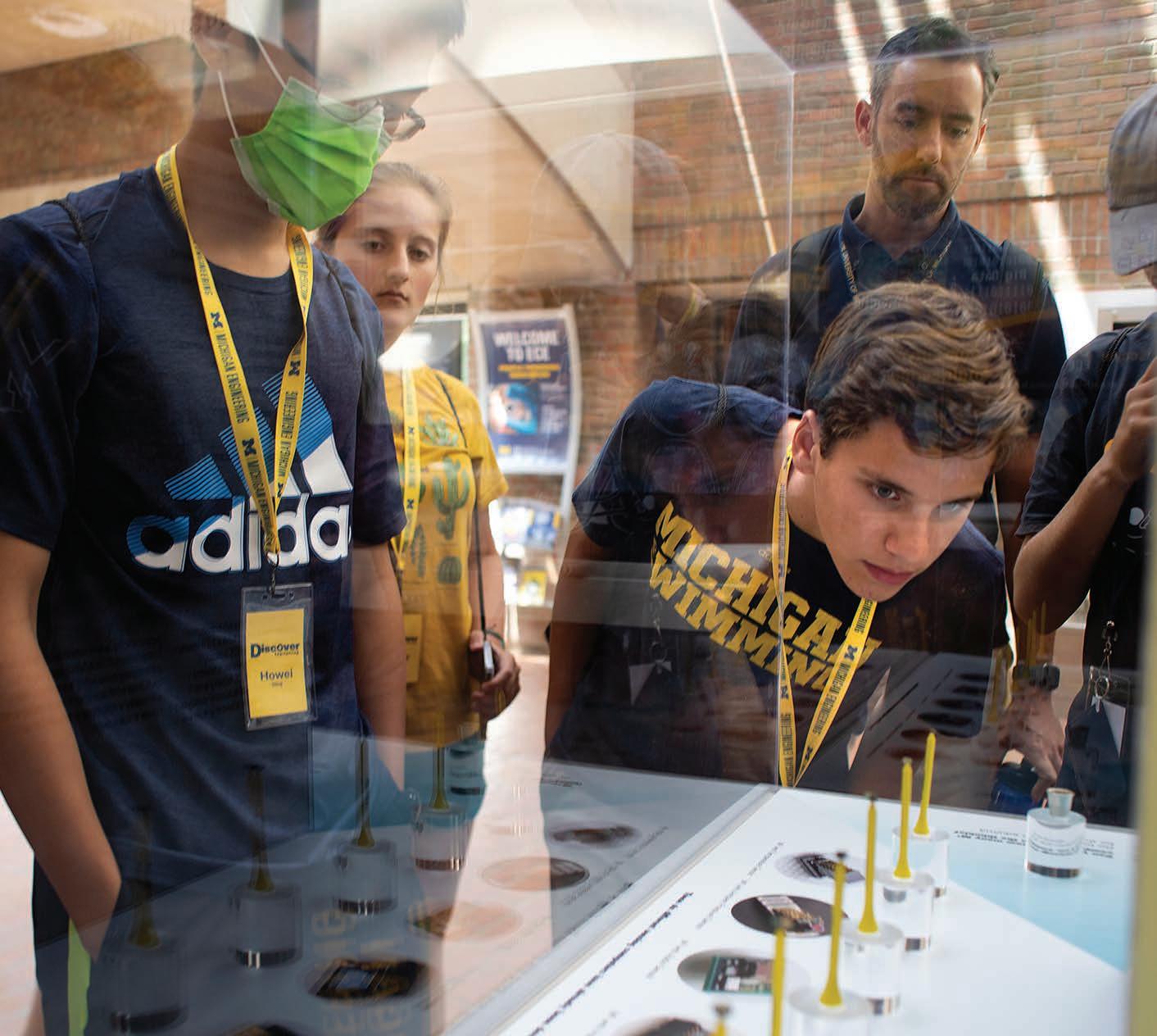
PEOPLE POWERING INNOVATION | 59
Prof. Mackillo Kira and doctoral student Markus Borsch discuss fundamental light emission properties for semiconductors.
Photo: Brenda Ahearn
Photo: Silvia
Photo: Marcin Szczepanski
AWARDS
TOUHEED ANWAR ATIF is Helping Uncover New Insights Into the World of Quantum Information
ECE PhD student Touheed Anwar Atif received a Rackham Predoctoral Fellowship to support his research on quantum information and quantum computing. Atif employs a large network of limited-capacity quantum computers, and he developed a novel coding framework to address quantum information network coding problems.
His research focuses on quantifying “relevant information” within quantum measurements performed in a distributed fashion, and improving the performance of multiple-access networks. His work has helped uncover new insights into the world of quantum information.
“My goal was to study the fundamental limits of distributed quantum problems and enhance their performance by exploiting the structure inherent to these problems using asymptotically good Algebraic codes,” Atif said.
Atif is advised by Prof. Sandeep Pradhan. He earned his B.Tech in EE at the Indian Institute of Technology Hyderabad and his MS in ECE at U-M.

ASHLEY JIAN is Working to Improve the Efficiency of High-power Electronics
ECE PhD student Ashley Jian received a Barbour Scholarship to support her work improving the efficiency of high-power electronics. New device technologies are needed to efficiently manage and distribute electrical power in many advanced systems, including distributed grid systems, energy-intensive industrial systems, and large electric vehicles such as high-speed trains. This is essential for “energy security,” meaning the availability of energy sources at an affordable price to sustain modern economies and life.
Jian focuses on the design, modeling, fabrication, and characterization of gallium oxide-based high-power devices. Her work resulted in high-quality semiconductor-dielectric interface and low leakage current, which is important for device efficiency and reliability.
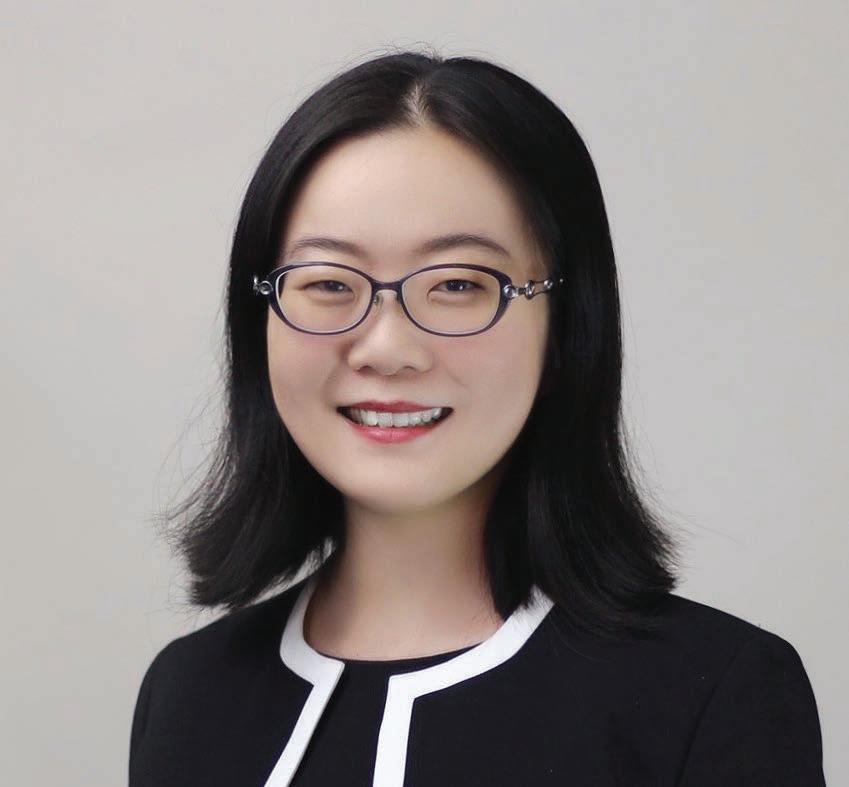
“Power electronics are used everywhere,” Jian said. “If we can improve their energy efficiency, that will benefit our Earth very much.”
Jian is advised by Prof. Elaheh Ahmadi. She earned her BS in EE at the Beihang University, China, and MS in ECE at U-M.
60 | PEOPLE POWERING INNOVATION
ECE PREDOCTORAL FELLOWSHIP
ALIREZA RAMYAR is Designing Power Processing Architectures for Improved Sustainability
ECE PhD student Alireza Ramyar received a Rackham Predoctoral Fellowship to support his research on power processing architectures for sustainable power and energy.
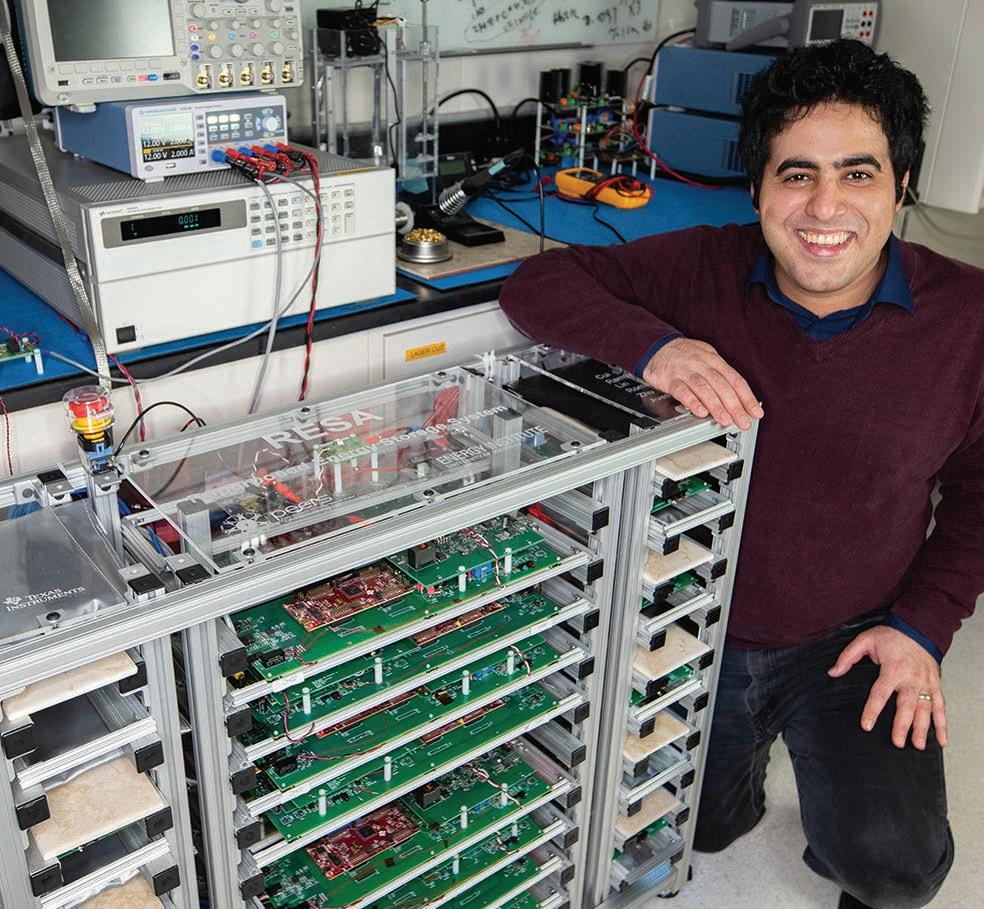
Ramyar designs architectures and methods that efficiently extract power from solar photovoltaic systems. By processing power through power electronics interfaces, Ramyar aims to improve the efficiency, reliability, and integration of renewable power and energy. He is also working to model power processing architectures for sustainable energy resources. Finally, he researches Second‐Use Battery Energy Storage Systems (2‐BESS), which can be used as energy buffers for the power grid to help support electric vehicles’ fast charging and solar photovoltaic systems.
“These batteries, when removed from electric vehicles (EV), still have approximately 80% capacity and power capability,” Ramyar said. “Reusing these batteries as second-use battery energy storage systems provides a sustainable solution that adds economic value to EV batteries.”
Ramyar is advised by Prof. Al-Thaddeus Avestruz. He earned his BS in EE at Sharif University of Technology and his MS in EE at the University of Tehran.
ANNA STUHLMACHER is Working to Integrate Renewable Energy Sources into the Power Grid
ECE PhD student Anna Stuhlmacher was awarded a Rackham Predoctoral Fellowship to support her research that aims to optimize flexible loads in the electric power grid, allowing for greater integration of renewable energy into the power grid. Water network and power networks are interdependent, so Stuhlmacher leverages drinking water distribution networks as flexible loads to provide multiple services for the power network.
“The water distribution network can effectively be treated like a big battery,” Stuhlmacher said.
Stuhlmacher’s work could help improve the reliability of the power network and, in turn, improve the reliability of the water distribution network. In addition, the water distribution network can provide added flexibility to the power grid, which will allow larger levels of renewable energy sources to be safely integrated.
Stuhlmacher is advised by Prof. Johanna Mathieu. She earned her bachelor’s degree in EE at Boston University and her master’s degree in ECE at U-M.
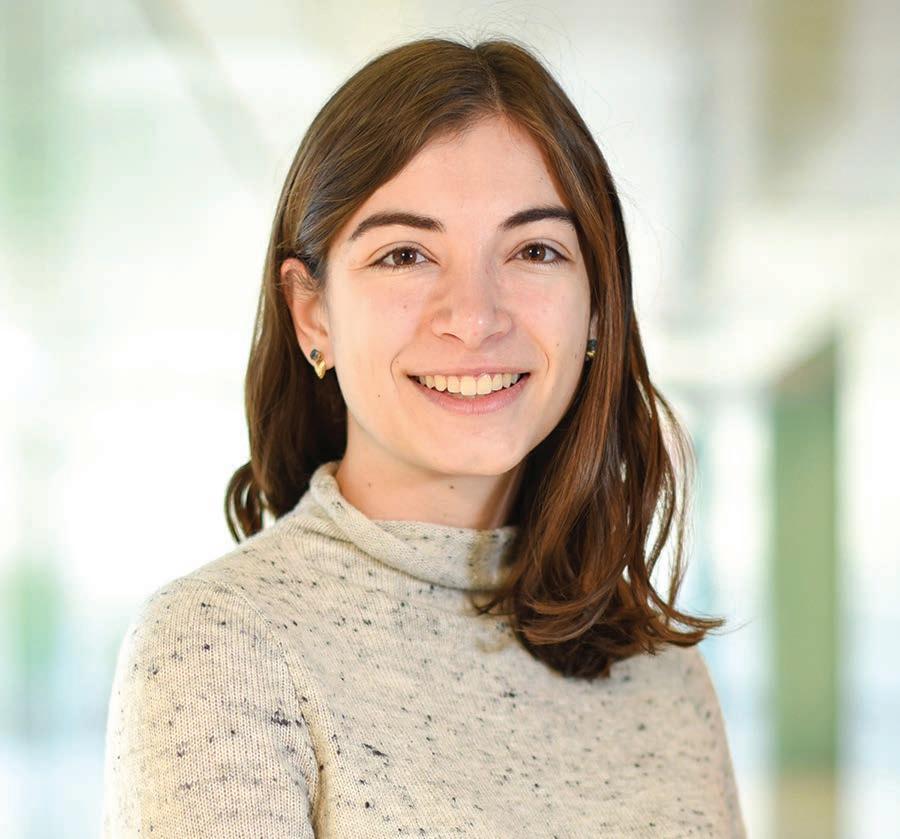
PEOPLE POWERING INNOVATION | 61
ECE PREDOCTORAL FELLOWSHIP AWARDS
BEEMAN



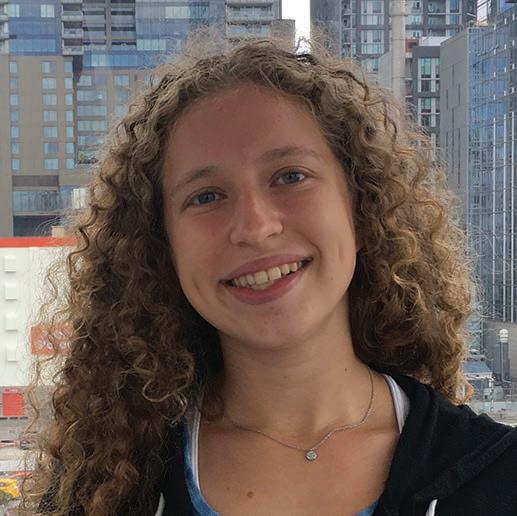
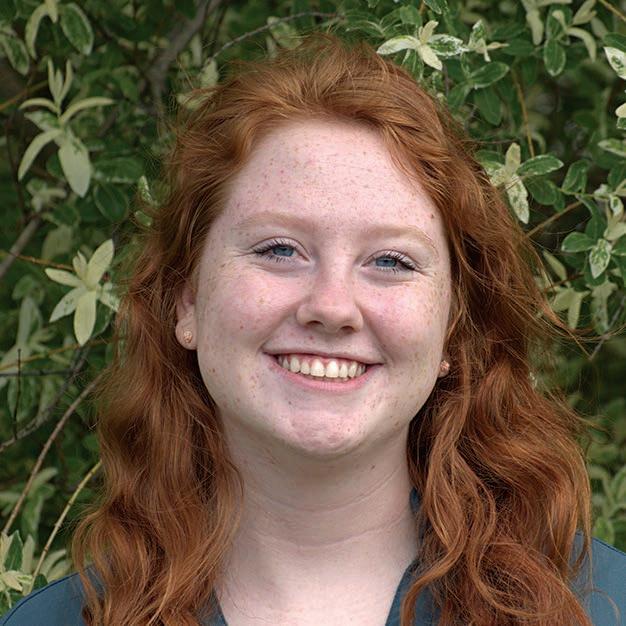


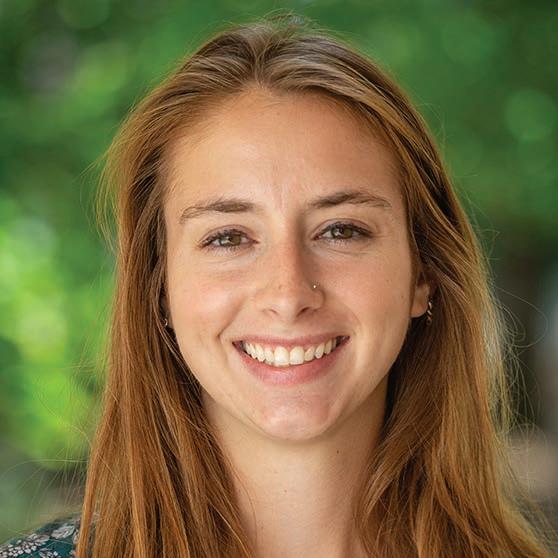



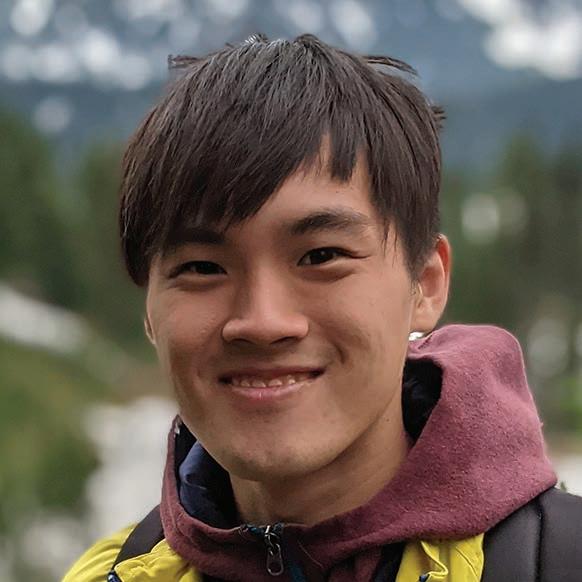

62 | PEOPLE POWERING INNOVATION
STUDENT HONORS + AWARDS
EECS
Undergraduate EE
EECS Outstanding
Doctoral
Department
Energy’s
Science Graduate
SPIE Optics
Photonics
Scholarship
KATHRYN
Undergraduate EE Student Irma M. Wyman Scholar, Center for the Education of Women+
Outstanding Service Award KEVIN BUCA
Student
Achievement Award LAUREN COOPER
Student
of
Office of
Student Research Fellowship
and
Education
Master’s
Outstanding
STEFANY ESCOBEDO
Student Richard F. and Eleanor A. Towner Prize for
Graduate Student Instructor
Doctoral
Richard
Outstanding
Doctoral
Best Paper
IEEE
Communications
AADITYA HAMBARDE
Student
F. and Eleanor A. Towner Prize for
Graduate Student Instructor MOHAMMAD VAHID JAMALI
Student
Award at the
International Conference on
Doctoral
Best
Electronic Materials
CoE
ASHLEY JIAN
Student
Presentation Award at the 63rd
Conference
Marian Sarah Parker Prize
Undergraduate CE
William
NAOMI KANTOR
Student
L. Everett Student Award of Excellence
Undergraduate
William
Doctoral
EECS Outstanding Achievement
Doctoral
Rackham
Lo
Undergraduate
CoE Distinguished
CoE
ESTER
Doctoral
Exemplary Impact and Relevance to DoD Research Objectives Award, 2022 DoD NDSEG
Doctoral
National
JEREMY LATHAM
EE Student
L. Everett Student Award of Excellence BEIMING LI
Student
Award SHIH-CHI LIAO
Student
International Students Fellowship/Chia-Lun
Fellowship REVA KULKARNI
EE Student
Academic Achievement Award
Marian Sarah Parker Prize
BENTLEY
Student
National Fellows Conference DANIEL KENNEDY
Student
Science Foundation Graduate Research Fellowship

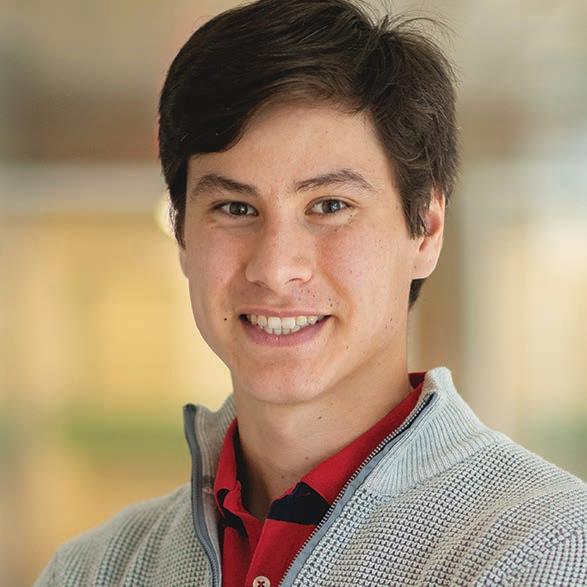


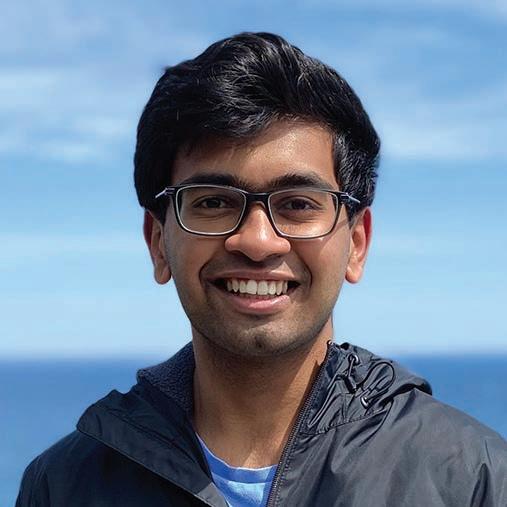



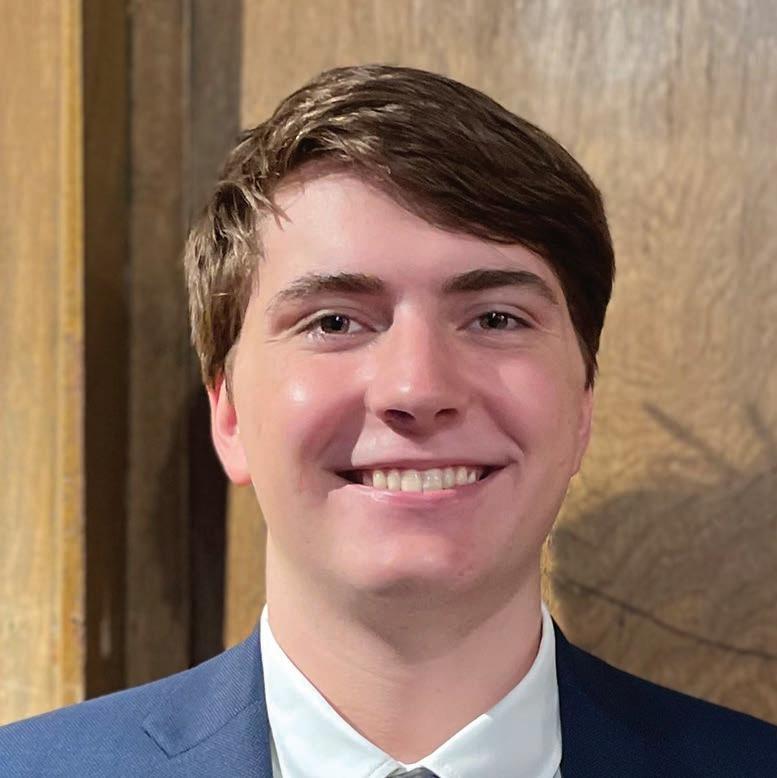






PEOPLE POWERING INNOVATION | 63 MATTHEW LICHTINGER Undergraduate CE Student CoE Harry B. Benford Award For Entrepreneurial Leadership AUSTIN LIN Doctoral Student National Science Foundation Graduate Research Fellowship PETER LINDER Undergraduate CE Student CoE Distinguished Academic Achievement Award DUNCAN MADDEN Doctoral Student National Defense Science and Engineering Graduate Fellowship SAAKETH MEDEPALLI Undergraduate EE Student EECS Outstanding Research Award CHENG-HSUN LU Doctoral Student Rackham International Students Fellowship/Chia-Lun Lo Fellowship RACHEL NEWTON Doctoral Student National Science Foundation Graduate Research Fellowship KOHEI NISHIYAMA Undergraduate EE Student EECS William Harvey Seeley Prize SAMUEL NOLAN Undergraduate EE Student EECS William Harvey Seeley Prize CHRISTOPHER OKUMURA Undergraduate EE Student EECS Commercialization/Entrepreneurship Award KAMAL RUDRA Master’s Student J.A. Woollam Company Scholarship SPIE Laser Technology, Engineering and Applications Scholarship YONGMO PARK Doctoral Student IBM PhD Fellowship DAVID PULIDO Undergraduate EE Student CoE Distinguished Leadership Award
Doctoral Student Richard and Eleanor Towner Prize for Distinguished Academic Achievement YAKSHITA MALHOTRA Doctoral Student Academic Award for the Detroit Chapter of the Society for Information Display THOMAS RYAN Undergraduate EE Student Department of Defense Science, Mathematics, and Research for Transformation Scholarship
SUBHAJIT MOHANTY
ECE Expeditions: Connecting Students and Companies
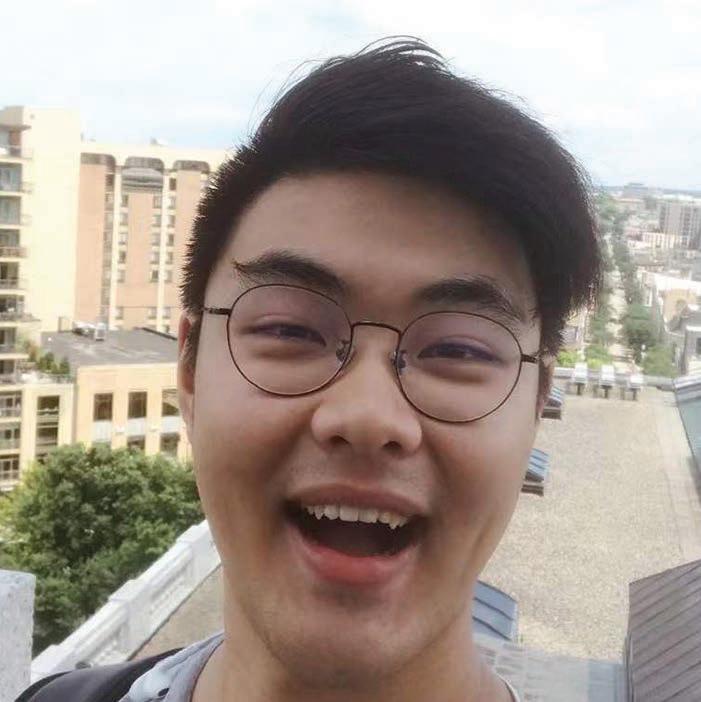
The ECE Expeditions program exposes students to a variety of careers and teaches them about the day-to-day life of working electrical and computer engineers.
SEMICONDUCTORS KLA
In-person tour February 28, 2022
KLA is a global capital equipment company that works to advance the future of tech. KLA’s President and CEO, Rick Wallace, graduated from U-M in 1982 with a BSE in Electrical Engineering. KLA recently opened its second headquarters in Ann Arbor.


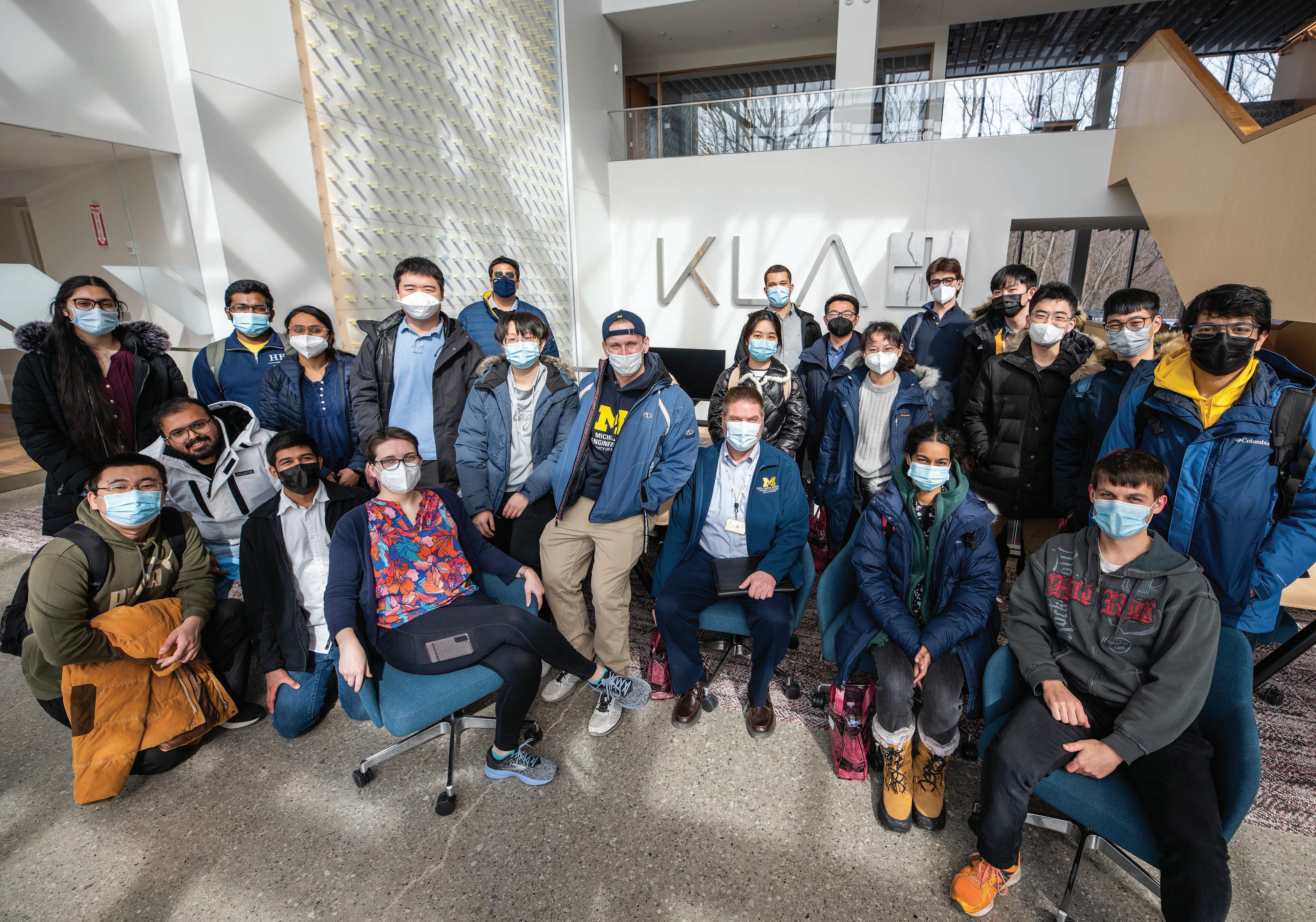
AI COMPUTING
NVIDIA
Virtual Presentation February 15, 2022
NVIDIA is an AI and computer graphics company known for inventing the GPU. Students were treated to an all-ECE Alumni panel; panelists spoke about their various roles at the company, and shared which EECS courses were most helpful.
SPACE RESEARCH & EXPLORATION
NASA
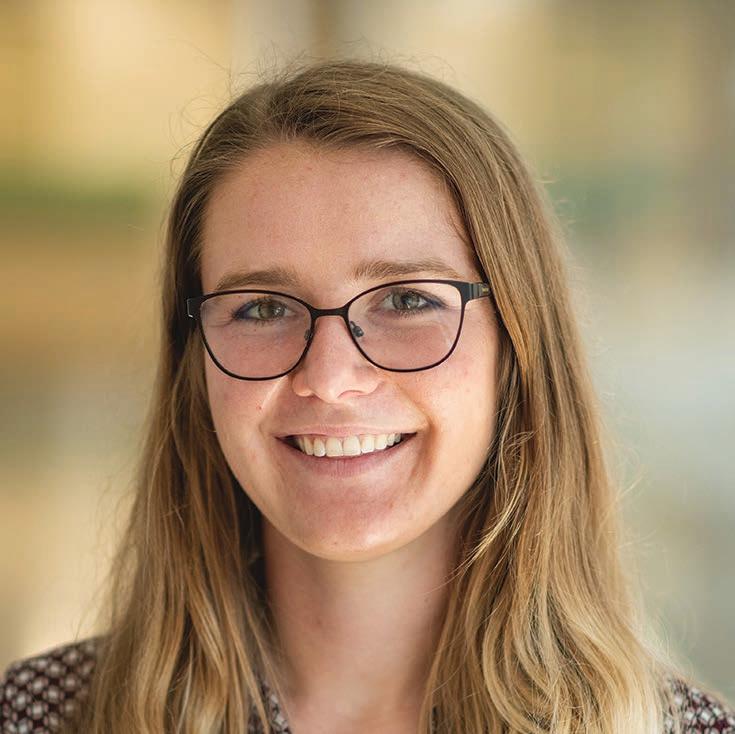
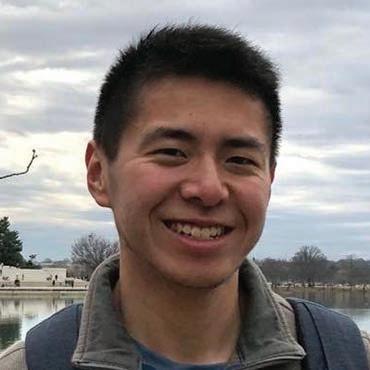
Virtual Presentation April 8, 2022
An ECE alum led the NASA presentation, which featured an overview of the Johnson Space Center’s major programs, a Humanoid Robot demonstration, and a Q & A session with several U-M alums.
64 | PEOPLE POWERING INNOVATION
EVELYN WARE Doctoral Student
National Science Foundation Graduate Research Fellowship Honorable Mention
JIALE ZHANG Master’s Student
Rackham International Students Fellowship/Chia-Lun Lo Fellowship
EMILY ZAMORA Undergraduate CE Student EECS Outstanding Service Award
ALEXANDER THAYER
Undergraduate CE Student
EECS Commercialization/Entrepreneurship Award
WILLIAM WANG Undergraduate CE Student EECS Outstanding Research Award
ECE Expeditions visits KLA’s second headquarters in Ann Arbor, MI, on February 28, 2022.
The ECE Council (ECEC) is a prestigious group of alumni and friends of the department who are committed to ECE’s goal of being a national and global nexus of positive, transformational change across all industries. The ECEC provides guidance and help with key priorities, including alumni engagement, industry engagement, development, diversity, entrepreneurship, education innovation, and future initiatives.
RHONDA FRANKLIN
MSE EE ’81
Board of Directors, Marvell.
Founder, Cavium Inc.
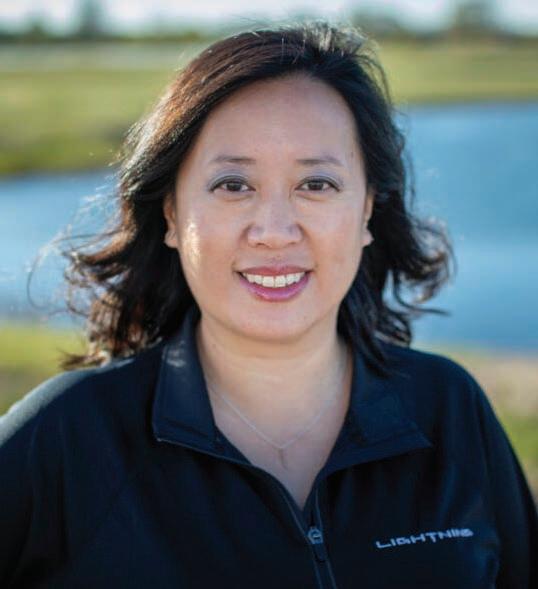

MSE PhD EE ’90 ’95
Professor, Electrical and Computer Engineering, University of Minnesota
K. CYRUS HADVI
PhD EE ’83
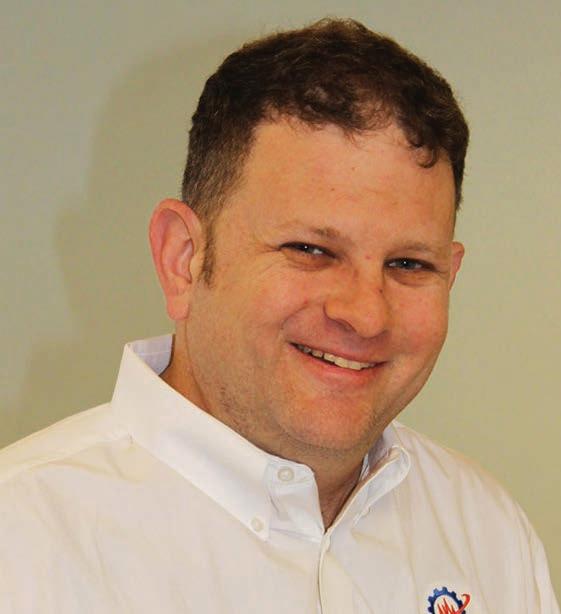
Founder & CEO, Adexa, Inc.
MS PhD EE ‘94 ‘99

Interim co-Head and Professor, Electrical and Computer Engineering, The University of Texas at Dallas
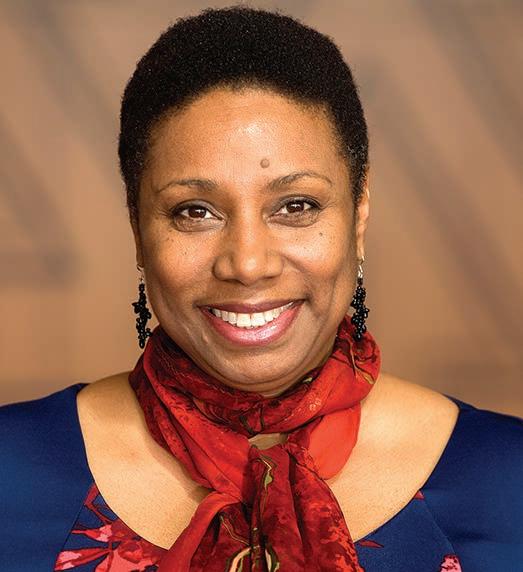
BSE MSE PhD EE ’93’ 95 ’00
Senior Fellow, Raytheon Missile Systems Founder & CEO, Adexa, Inc.
ZACHARY LEMNIOS

BSE EE ’76; also MS EE Washington University Consultant. Formerly The Honorable Assistant Secretary of Defense, and VP at IBM Research
PRASHANTH
MAHENDRA-RAJAH
BS ChemE 1992; also MS in Engineering, Johns Hopkins University; MBA, Purdue University
Senior Vice President, Finance and Chief Financial Officer, Analog Devices, Inc.
ISAAC PORCHE
PhD EE:S ’98
Deputy Director, Applied Research Lab, Penn State University
JORDI RIBAS
PhD EE:S ’96
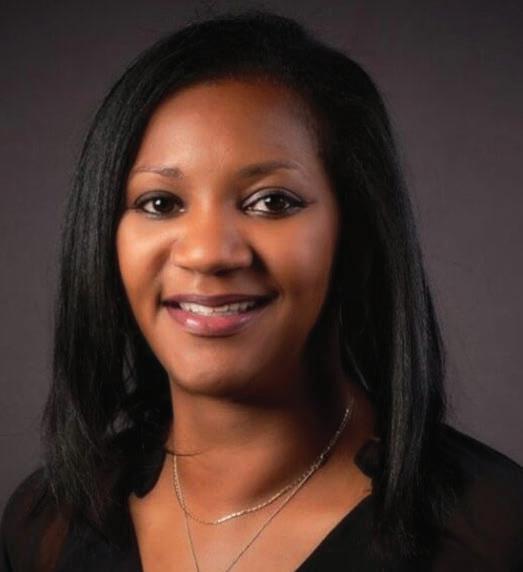
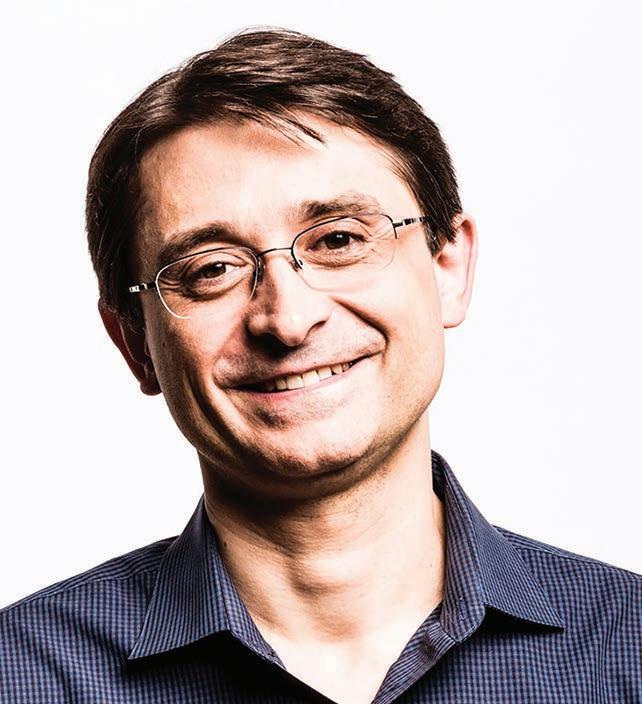
Corporate Vice President, AI Products, Microsoft
MITCHELL ROHDE
BSE MSE EE ’94 ’96; MSE PhD BME ’97, ’00 CEO & Co-founder, Quantum Signal AI, LLC

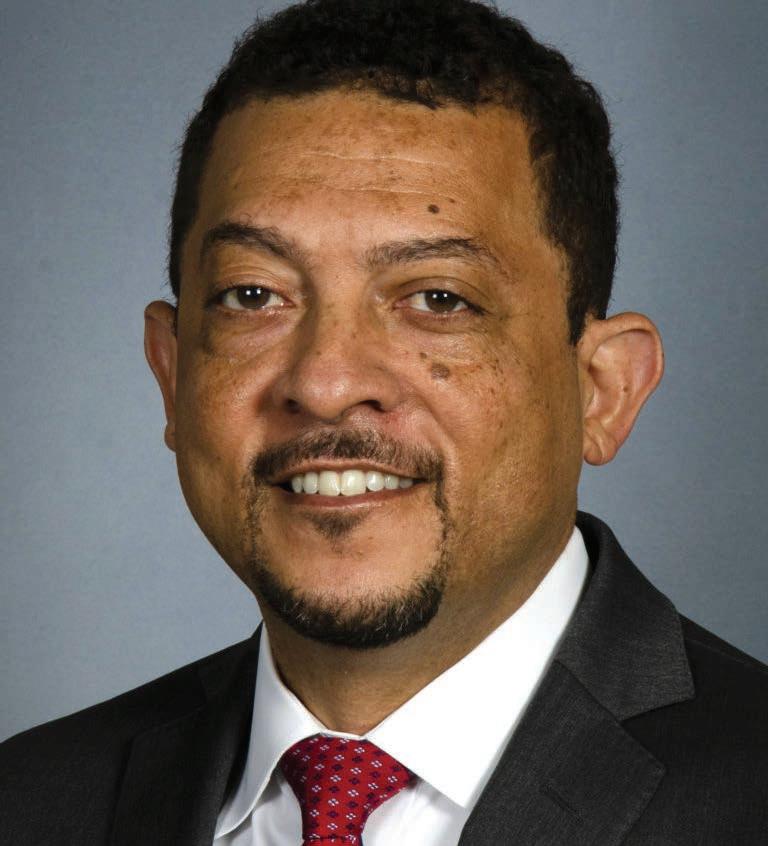
NAVIN SHENOY
BSE EE ’95; also completed Stanford Executive Program

Former Executive Vice President and General Manager, Data Platforms Group, Intel Corp.



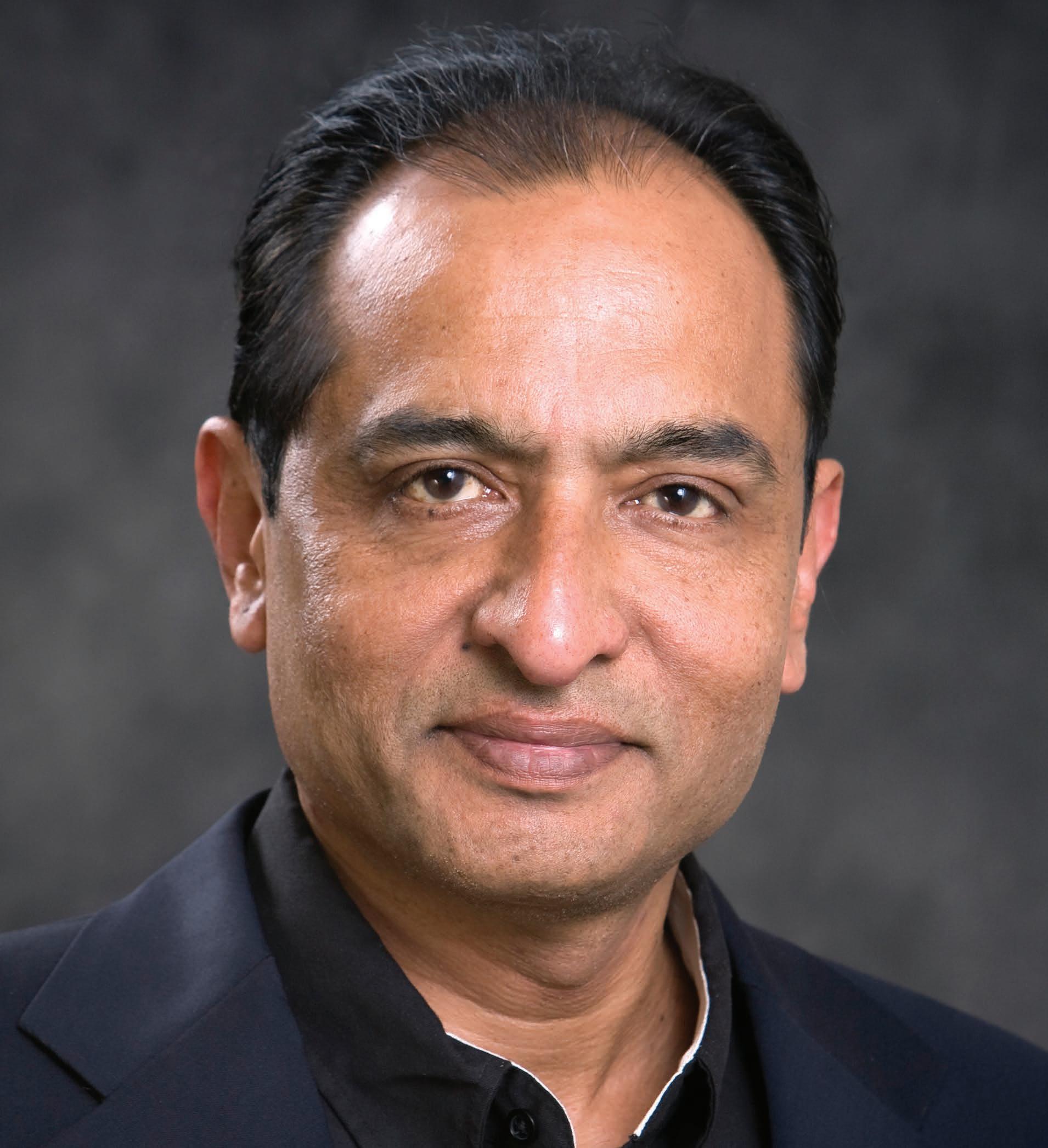
AMIT SINGHI MSE EE:S 1989
COO and CFO, Piston Group
VIK VERMA MSE EE ’89
Board Member, Advisor and Former CEO
DAWSON YEE MSE EE ’87
Former System Engineer – Azure Hardware, Quantum Computing, Microsoft
LINDA ZHANG
BSE EE ‘96; MSE CE ‘98; MBA ‘11
Chief Engineer, All-Electric F-150 Lightning, Ford
PEOPLE POWERING INNOVATION | 65
RASHAUNDA HENDERSON
KATHERINE HERRICK
SYED ALI
ECE COUNCIL
DAVE BABICZ Pioneered Lab Kits for At-home Engineering Courses
During his undergrad days at Michigan, Dave Babicz (BSE EE 1987) would spend hours working on a project in the former home of EECS on Central Campus, wishing he could take it with him.
“I remember wiring up circuits and having to mash the wires down to fit into the slots in the cabinets when time was up,” Babicz said. “When you came back, they’d be all screwed up, and then you’d have to almost redo the whole thing.”
Throughout his nearly 30-year career at Analog Devices Inc. (ADI), where he currently serves as Director of Engineering, Babicz has nurtured an interest in engineering education. Inspired by his own experiences, as well as research that suggests that students who use hands-on, at-home learning kits perform significantly better in the classroom, Babicz began designing low-cost engineering lab kits.
“It’s essentially giving students a lab they can carry around in their backpack,” Babicz said.
This method is also important for improving equity in engineering education. Many programs that allow for handson experiences are dependent on advanced technology and lab space, which can be expensive. Lab kits, however, can cost as little as $150. And the lab kit is a one-time cost that can be used throughout the student’s education.
“The idea is the kit would cover college level classes such as Circuits One, Circuits Two, Electronics One, and Electronics Two,” Babicz said.
This method of engineering education also helps foster a stronger pipeline of future workers. In some ways, previous generations of engineers got to grow up with their own versions of at-home lab kits – their TVs, phones, VHS players, etc. But most of our technology today is too advanced for kids to take apart and put things back together like they could have 20 or 30 years ago.
“Kids show up as freshmen with no practical experiences,” Babicz said. “They’ve never soldered before, they’ve never built a circuit, they’ve never tinkered, so we wanted to recreate that experience.”
Babicz began piloting test kits in 2012 and since then has partnered with schools all over the world. When the pandemic hit, suddenly the demand went through the roof.
Prof. Michael Flynn incorporated Babicz’s kits in the juniorlevel undergraduate course, Analog Devices. The kits were overwhelmingly successful, and Flynn plans to continue using the lab kits.
“Lab kits are the way to go,” said Flynn.
“Kids show up as freshmen with no practical experiences. They’ve never soldered before, they’ve never built a circuit, they’ve never tinkered, so we wanted to recreate that experience.”
–Dave Babicz
Kits for a course in Analog Circuits being pack aged before being shipped around the world.

66 | PEOPLE POWERING INNOVATION
ALUMNI SPOTLIGHTS
KATIE BOUMAN and the Legacy of the Black Hole Imaging Project
Caltech Professor Katie Bouman, who earned her BSE in Electrical Engineering from U-M in 2011, is most known for her role in the project that successfully reconstructed the first-ever image of a black hole. Released to the public in 2019, the spectacular image, once thought to be an impossible achievement, quickly captivated the world.

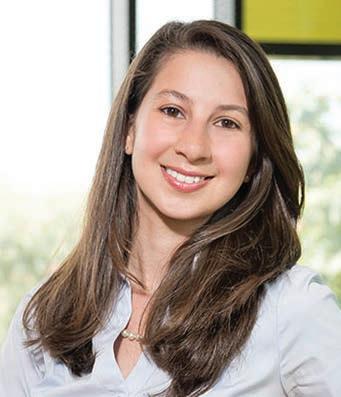
“We had no idea the impact it would have,” Bouman said. “To see it excite people about science and engineering has been amazing. It’s wonderful to see younger students message me about how it inspired them to pursue careers in STEM, and how it’s inspired people in other fields as well.”
While the image reconstruction phase took two years, the entire project has lasted over a decade. It involved an international team of over 200 scientists and a network of eight radio observatories with bases on six mountains across four continents called the Event Horizon Telescope (EHT).
“What’s cooler than black holes?” Bouman said. “It was this idea of, okay, if we come together and think creatively, we can do something that should be
impossible. We can see the invisible. I think that’s what captured people and hopefully inspires people to push the boundaries in other areas, too.”
Bouman helped with many parts of the project, including collecting data from the black hole at one of the telescopes in Mexico, and she led the team that developed the tests and techniques used to verify the black hole image. A photo capturing her reaction at seeing the black hole image reconstructed for the first time went viral, and suddenly Bouman became the unintentional face of the discovery.
“At first, I didn’t want to be seen as a woman in science, I just wanted to be recognized as a scientist,” Bouman said. “But then I saw how impactful it was for girls and women to have that representation. Highlighting women in science can give people the confidence to push on and improve it for the future, so I’m happy to be a part of that.”
Bouman chose U-M for her undergrad thanks to a campus visit in 2007.
“Everything just clicked immediately, and I thought, okay, I love it here,” Bouman said.
Bouman lived in East Quad her first two years where she enrolled in the Michigan Research Community (now the Michigan Research and Discovery Scholars) and spent time eagerly awaiting the next chicken broccoli bake day in the East Quad cafeteria. Her experiences in the Michigan Research Community inspired her to major in Electrical Engineering and continue to work on projects related to image processing and reconstruction.
Above all, what Bouman remembers most about U-M was the supportive community. In addition to mentors and professors, Bouman said she learned a lot from her fellow students.
“I remember sitting with other students, some in different programs, and we would teach each other concepts and things,” she said. “I learned so much by just interacting with people, and I had a lot of great experiences. There was such a supportive network here, and it gave me the tools that really helped me later on.”
Today, Bouman is an Assistant Professor in the Computing and Mathematical Sciences, Electrical Engineering, and Astronomy Departments at the California Institute of Technology. Before joining Caltech, she was a postdoctoral fellow in the Harvard-Smithsonian Center for Astrophysics. She received her PhD in the Computer Science and Artificial Intelligence Laboratory (CSAIL) at MIT in EECS.
PEOPLE POWERING INNOVATION | 67
Community-builder LEON PRYOR takes Detroit’s FIRST Robotics Program to New Heights

68 | PEOPLE POWERING INNOVATION ALUMNI SPOTLIGHTS
Pryor’s son and teammates in their first middle school competition. Photo: Daniel Jonathan Ernst
A Cinderella Team
A few years ago, Leon Pryor (BS EE 1997) went to cheer on his son, at the time an elementary schooler in the Detroit Public Schools system, as he competed in a FIRST® Robotics competition. But it was more like watching the Bad News Bears.

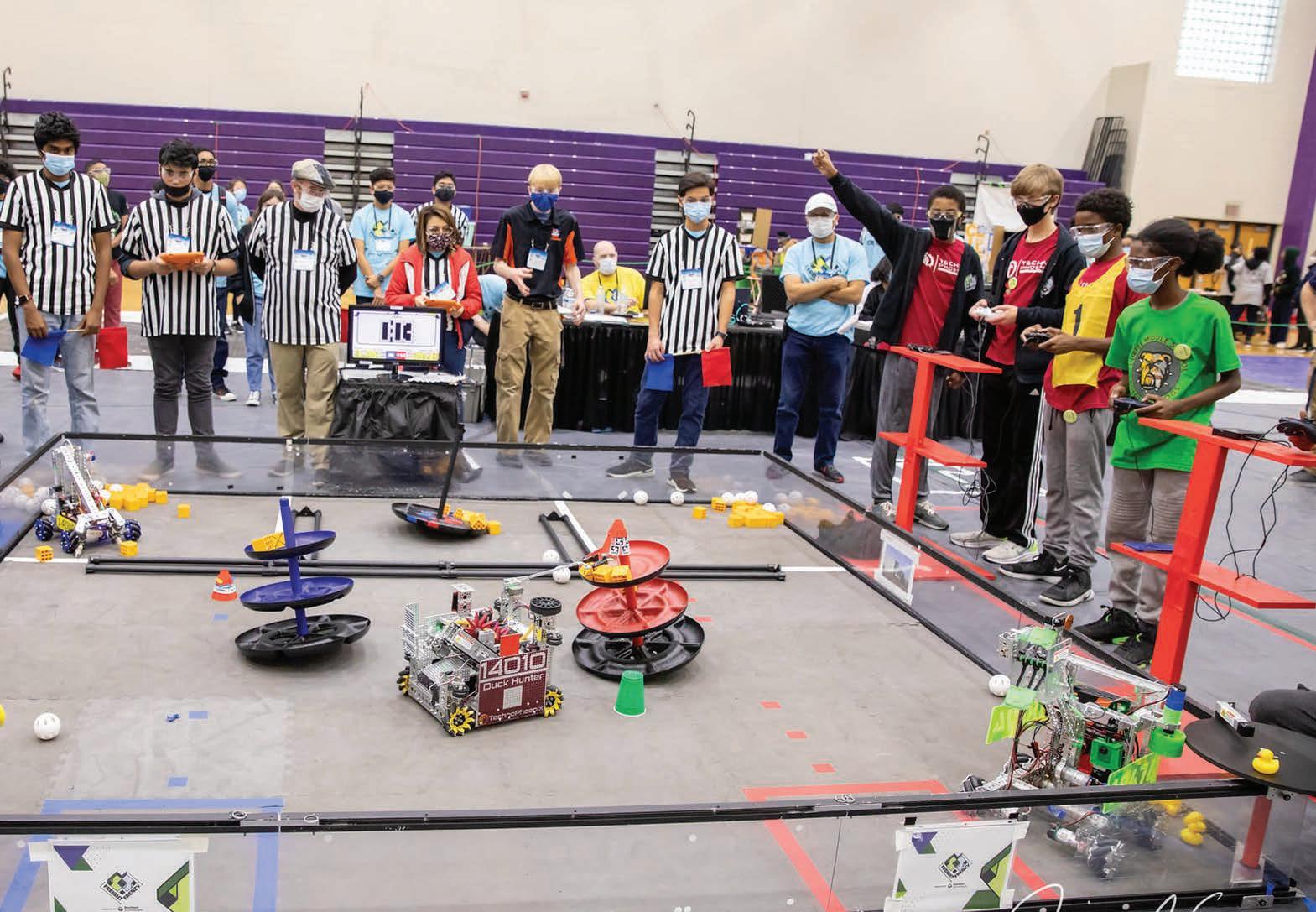
“The team was really having some fundamental issues,” Pryor said. “My son was really upset, and I recognized that with all my experience as an engineer, I could definitely help.”
FIRST® Robotics (For Inspiration and Recognition of Science and Technology) is a program where school teams design and build robots to compete in an annual contest. Each team is given a basic robotics kit, but it’s up to them to decide how to approach the design and what components to use. Pryor joined his son’s team expecting to serve as an advisor, but then the teacher in charge of the team had to take a leave of absence, and Pryor suddenly found himself as head coach of First Lego League (FLL) team 37035 the FLICSBots.
“I told my son, look, I don’t know what we’re going to win, but we will win something,” Pryor said.
That first year, the FLICSBots qualified for the state competition, a satisfying improvement from their previous attempts. The following year, Pryor’s son moved up a level to the school’s middle school robotics program and he followed him and became the head coach for First Technical Challenge (FTC) team 14010 Techno Phoenix. The team again qualified for the state competition while climbing a few spots in the ranks, but Pryor realized that some of the other teams had an advantage his didn’t.
“I noticed that teams from other areas had these relationships where they were collaborating on problems,” Pryor said. “But the Detroit teams were really siloed. We weren’t talking to each other, and I thought, this is stupid. So, I went to the other Detroit coaches and I said, let’s ban together and help each other.”
FIRST® Robotics encourages this type of collaboration, which they call “coopertition.” Pryor initiated an effort to get the Detroit teams working together in the offseason to share resources and knowledge. He also cemented a strong relationship with two Metro Detroit Teams that were also working with Detroit Schools. (Kinematic Wolves FRC 5577 and Frog Force FRC 503). Led by Pryor these teams unified their efforts and banded together to create the Motor City Alliance (MCA), a 501c3 that works with over 70 Metro Detroit elementary and middle school teams annually.
Pryor’s team was gearing up for their third season when the pandemic hit. They were shut out of their workspaces, but they didn’t want to lose their momentum. They used remote resources, and Pryor ferried parts to students’ homes allowing them to build individual components in isolation and over Zoom. When the weather improved, the team got together to work outside. They built their robot on the sidewalk, while maintaining some much needed (albeit socially distanced) in person interaction.
PEOPLE POWERING INNOVATION | 69
Leon Pryor and his son.
Team 14010 Techno Phoenix competing. Photo: Daniel Jonathan Ernst
“I told my son, look, I don’t know what we’re going to win, but we will win something.”
–Leon Pryor
“We kept pushing, and that year in competition, we got the Inspire award, which is the highest award that FIRST® Robotics has,” Pryor said. “It’s for the team that most embodies the spirit of the competition, so that was fantastic.”
But their robot didn’t fare so well during competition.
“The robot will always betray you,” Pryor said. “But it’s okay, because the kids are learning that hey, even if you fail, you can have a great time, and you learn a lot for the next time.”
As the pandemic restrictions gradually loosened the following year, Pryor brought nearly two dozen teams from the MCA together for group collaboration sessions in gymnasiums. The teams more than doubled the number of work hours they normally have to prepare for the contest, and as a result, a record number of Detroit
teams qualified for the state competition.
And Pryor’s team?
They won. Team FTC 14010 Techno Phoenix became the first Detroit Public School team to win a FIRST® Robotics state championship. They were also runners up for the Inspire award at the State level.
Transforming from a nearly last-place team to state champions in a few short years has everyone taking notice.
Pryor’s middle schoolers were so impressive that the president of the FIRST® Robotics program in Michigan asked them to assist the high school team FRC 8280 K9.0 Robotics, which competes in a more rigorous contest. The team was in danger of losing their funding unless they competed during the season. Pryor’s team of eight graders along with two high school
students were able to fabricate, construct, and program a 120lb industrial robot from scratch in just three weeks. They competed and nearly won one of the local competitions and narrowly missed an opportunity to compete in the high school state championship in Saginaw, MI.
“It was great, because I heard other teams talking about how they should be very afraid of our team,” Pryor said. “If we can nearly win a high school competition with middle schoolers and three weeks, what can we do when we have a sizeable team of high schoolers and a full season to prepare?”
Pryor will continue as the coach of team FRC 8280, and while the goal of involving his eight grade students was to help the high school team, the eighth graders also gained invaluable experience. Pryor will extend this opportunity to students annually. Team 8280 will offer an apprentice program to help students prepare for the more rigorous high school competitions.
Recently, Pryor brought a few members of his FIRST Robotics team to campus to explore the robotics research being done at the university level. They toured the Robotics Building, the Lurie Nanofabrication Facility (LNF), and the Biologically Inspired Robotics and Dynamical Systems (BIRDS) Lab.

“The proving ground and testing facilities were particularly impressive, as were the biological modeling we saw,” Pryor said. “The nanofabrication work is so jaw dropping I’m still having trouble wrapping my head around it. The kids told me they want to come to Michigan. Immediately.”
An Engineering Origin
The values of the Motor City Alliance – cooperation and community – were instilled in Pryor from an early age. His father was a public school principal, and one of the first administrators tasked with desegregating schools. His mother was an elementary school teacher.
“They always encouraged us to give back,” Pryor said. “You have to help
70 | PEOPLE POWERING INNOVATION
Leon Pryor (right) touring the BIRDS lab led by Prof. Shai Revzen (second from left). Photo: Silvia Cardarelli
others, because you didn’t get here on your own. So that’s been ingrained in everything I do.”
Two of his three siblings are also engineers, and Pryor was inspired to become an electrical engineer as a child while watching his older brother program an IBM. While most of his family stayed in Ohio for college, Pryor wanted to explore a new environment. He chose U-M for the engineering reputation, but quickly fell in love with the “community of nerds” he found here. He and his friends enjoyed Anime and computer games, and they’d spend a lot of time at Pinball Pete’s Arcade playing Street Fighter II.
friends from Michigan are still my best friends. Those engineering relationships are the longest lasting relationships of my life outside of my family, and that to me is the power of the experience of Michigan.”
–Leon Pryor
As a student, Pryor began interning at Microsoft. He became an official Microsoft “Student Consultant” on campus, teaching students and some faculty on how to use the latest Microsoft programs. He became very involved with the National Society of Black Engineers (NSBE) chapter on campus, and he served as a tutor through the Engineering Learning Resource Center (now the Engineering Center for Academic Success).
But much of Pryor’s focus, which continues today, was on building bridges for professional networks and community. Thanks in large part to his efforts, Michigan alums made up one of the largest contingents of Black engineers at Microsoft.
Pryor spent most of his career at Microsoft, but he also worked several years at Amazon. He found his niche in video game development, specializing
in massively multiplayer online video games. He started as a developer on online games like Bridge and Hearts before moving into a role where he supported other developers, including LucasArts for the Star Wars pod racer game and “X-Wing versus TIE Fighter.”
Pryor’s biggest commercial success, however, was working on the game series “Mass Effect.” In Mass Effect, human and alien civilizations have colonized the known universe using technology left behind by advanced precursor civilizations.
“We were experimenting, and we were super scrappy about how we make this gaming experience work on bigger and bigger scales,” Pryor said. “So I got to meet tons of people in the industry, and I’ve spoken at the San Diego Comic Con and a few other cons.”
Pryor also joined a network of Black Americans working in game development called TechNoobians, to continue facilitating community and
helping uplift the next generation of gaming engineers.

“I have kids ask me all the time, ‘How do I make video names?’ And I say, ‘Make video games,’” Pryor said. “The tools are free and you can learn how to use them for free online. You don’t have to ask anyone’s permission to learn or do these things. The door is open, so walk through it.”
Today, Pryor is a senior game producer at Meta. When he’s not designing games or coaching FIRST Robotics teams to podium finishes, he’s playing Destiny 2 with his son.
“Because of that bond of getting to play it with my son, it’s definitely my favorite game,” Pryor said. “We call ourselves ‘Fire Team Pryor.’”
PEOPLE POWERING INNOVATION | 71
Leon Pryor advising a member of the team.
“My
MIHIR SHETH Invented a Medical Device that Weans Patients Off Ventilators Quicker
In the early days of the COVID-19 pandemic, many people were only thinking about providing ventilators to patients, but Mihir Sheth (BSE EE 2015; MSE EE:S 2016) was focused on what happens after.
“Everyone was looking at getting patients on a ventilator, but no one was looking at how to get them off,” Sheth said. “It blew my mind.”
Ventilators, medical devices that mechanically pump oxygen into a patient’s body when they are unable to do so adequately on their own, have been a life-saving medical device for over a century, but they’re not a longterm treatment or solution. A patient can lose up to 32% of their respiratory muscle strength when kept on a ventilator for more than six days.
To address this issue, Sheth cofounded Inspiritus Health with Dr. Myra Malik, a consultant anesthetist. They invented a non-invasive medical device that keeps patients’ muscles engaged when they are on a ventilator, which helps prevent muscle atrophy. This can reduce the total time a patient
spends on a ventilator by 30%. For his contributions, Sheth received a Young Innovator Award from Innovate UK.
Sheth’s passion for using engineering to improve medical tools and devices was first sparked as an undergraduate student. As a member of M-HEAL (Michigan Health Engineered for All Lives), Sheth worked on a project to design a heated incubator to help keep low birth weight and premature infants warm and healthy. The goal was to ensure the design would work even in places where there was little or no access to stable electricity.
As an undergrad student, Sheth also spent time as a researcher in Prof. Shai Revzen’s Biologically Inspired Robotics and Dynamical Systems (BIRDS) lab. He also helped organize the 2015 U-M TEDx day, where Revzen appeared as one of the invited speakers.

“What I appreciate the most is the ability that the EECS department afforded me to be able to branch out and acquire a broad knowledge,” Sheth said. “If you have good people around you, which Michigan does, EECS does, it gives you the social support and the foundation to jump higher.”
After Michigan, Sheth spent a few years working at Sisu Global Health, a startup that was focused on developing medical devices for clinicians in Ghana and Kenya. One of the devices he helped design was a blood autotransfusion device, so that blood can be returned to the patient, reducing the need for donor blood. Sheth then came to Oxford, England, in January of 2020 as an Oxford Global Insight Fellow.
72 | PEOPLE POWERING INNOVATION
“If you have good people around you, which Michigan does, EECS does, it gives you the social support and the foundation to jump higher.”
—Mihir Sheth
ALUMNI SPOTLIGHTS
Intel’s JON ZAPP Plans the Technologies of the Future
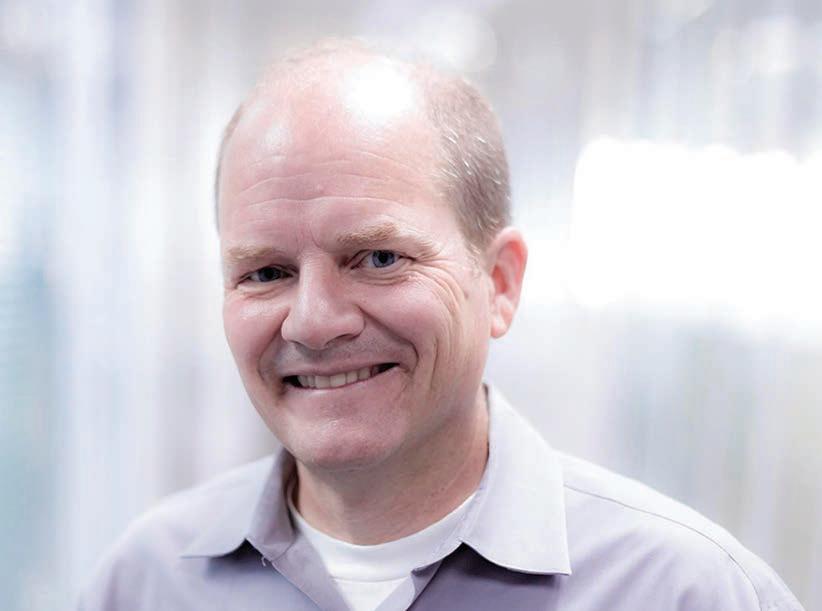
Cutting edge technology has always been a passion for Jon Zapp (BSE EE ’91), the current Director of Strategic Planning at Intel. His favorite classes at U-M included labs where he got to create holograms with lasers and a challenging course focused on logic design. But then he started taking classes in marketing and economics, and he discovered an entirely new career interest.
“When I look back at my time at Michigan, I think about how great of a match it was for me,” Zapp said. “It was an unbelievable place to be, and I feel like I really lucked out.”
After graduating from U-M, Zapp joined Accenture, a global professional services company focused on digital, cloud, and security technology. He worked there as a senior consultant for three years before he left to earn an MBA from the University of Chicago. He
then began his career at Intel, where he could serve his interest in technology while using his skills in marketing and finance.
“I realized I could blend these things together, because I love high tech, but there’s a whole business and marketing side of that,” Zapp said. “If you understand both aspects, you become pretty valuable to a company.”
At Intel, Zapp has worked on everything from desktop and notebook PC’s, to consumer products like MP3 players and smart toys, to corporate marketing and communications for networking products.
“Intel’s work impacts everyone on the planet,” Zapp said. “These new technologies touch healthcare, education, manufacturing, transportation –everything. It’s very exciting.”
Zapp joined the product planning team about ten years ago, and he leads a team of engineers, finance, and marketing experts to design CPU processors for PC manufacturers that make the products that will fill store shelves in the years to come. His team was responsible for creating and launching the 11th generation Intel Core mobile processor, known as “Tiger Lake,” for which they earned an Intel Achievement Award.
“It was a long road, but it’s rewarding to be a part of moving technology forward,” Zapp said. “I sent my daughter off to school recently with a laptop with that exact processor in it.”
Jon and wife Kim (an Oregon State grad) enjoyed a day at the big house when Michigan hosted the other OSU. U-M won!
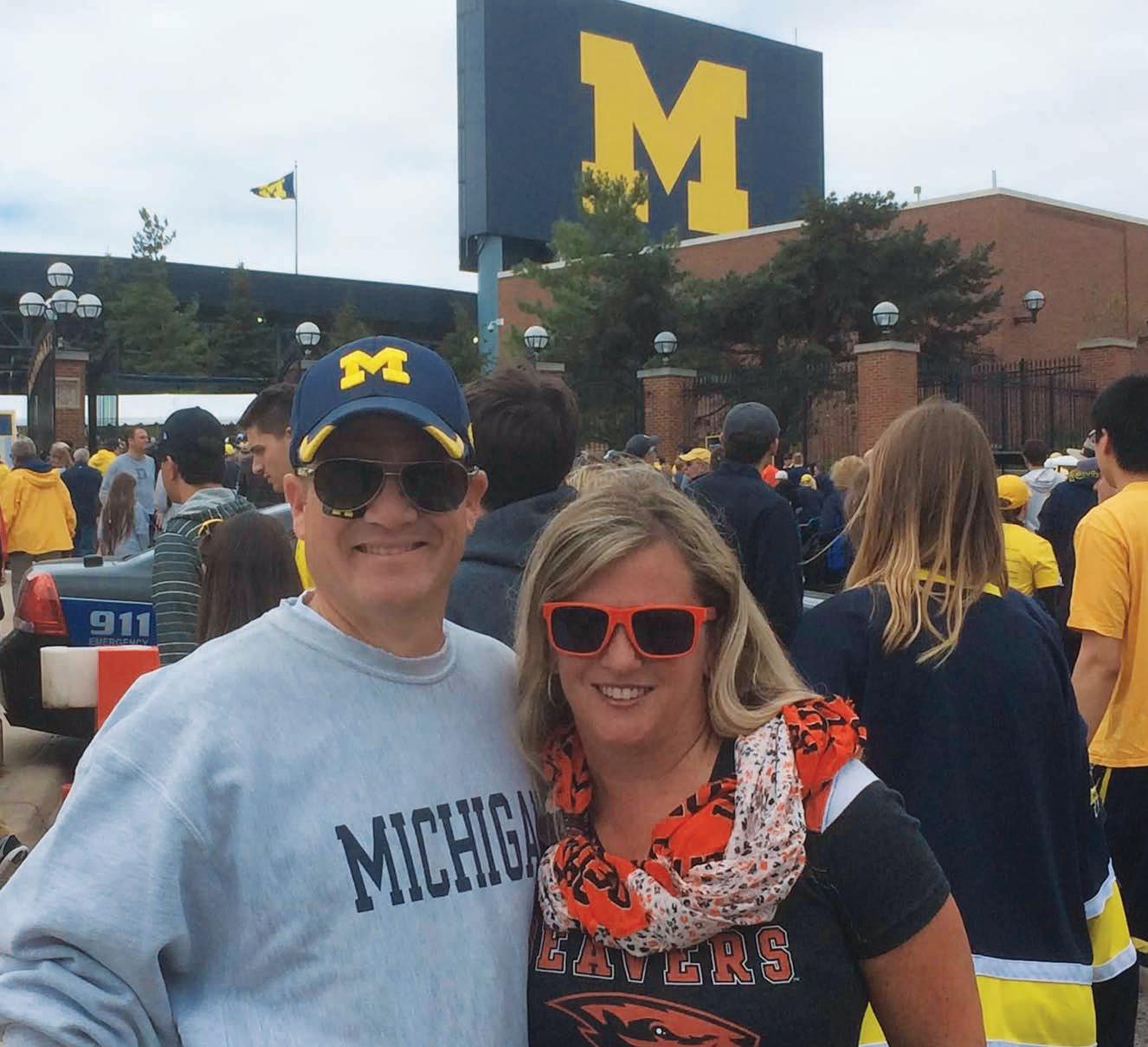
PEOPLE POWERING INNOVATION | 73
“It’s rewarding to be a part of moving technology forward.” —Jon Zapp
ALUMNI SPOTLIGHTS

“We’re engineers – we want to create new technology that serves people, makes their lives easier.”
—Linda Zhang
LINDA ZHANG Electrifies America’s Bestselling Truck
After years in development, the Ford Motor Co. brought its fully electric F-150 Lightning pickup—scion of the best selling pickup in the United States for more than 40 years—to dealerships this past spring.
After years in development, the Ford Motor Co. brought its fully electric F-150 Lightning pickup—scion of the bestselling pickup in the United States for more than 40 years—to customers this past spring.
Expectations were high from a crowd that included everyone from Ford and pickup fanatics, to climate change activists and the electric vehicle industry. The F-150 Lightning is meant to be all manner of things, including Ford’s boldest foray yet into the quickly growing electric vehicle market as well as one of the most important offerings to get the public to embrace a technology that could save the planet.
“We’re engineers – we want to create new technology that serves people, makes their lives easier,” said alum Linda Zhang (BSE EE ’96, MSE CE ’98, MBA ’11) during her talk to students, faculty and staff in her homecoming talk on September 23, 2022.
Zhang is the 2022 College of Engineering Alumni Merit Award recipient for Electrical and Computer Engineering. She is also Chief Program Engineer for the F-150 Lightning, responsible for managing the design, development, and delivery of the vehicle. As chief of the program for the Lightning, she’s been lighting up social media and all the major news outlets as well. She spent an afternoon with President Joe Biden, and was
Above: F-150 in production. Right: Linda Zhang outside the

March 2022.

PEOPLE POWERING INNOVATION | 75
ALUMNI SPOTLIGHTS
Robert H. Lurie Engineering Center during a visit to U-M’s campus in
“U-M has always been a cornerstone, in a way, for providing talent for the industry. I’m on Ford’s recruiting team for U-M, partly because it’s such a great engineering school, but it also has a great business school and sciences.”
—Linda Zhang
featured on the cover of Time, to name just a couple high profile examples.
A great deal of what Zhang and her Ford team have done with the Lightning has been centered on developing an electric pickup that can go toe-to-toe with consumer expectations. In the pickup truck universe, that means a product that is tough, fast, and both looks and acts like a “real” truck.

Her team succeeded!
A single Lightning truck is able to tow up to 10,000 lbs up a hill in the frigid temperatures of Alaska or the extreme heat of Arizona, and go from 0-60 in under 4 seconds. And it offers numerous upgrades such as an improved cab and bigger screen, all while offering the same spaciousness of a non-electric F-150.
As of September, sales had soared 300% during the past month, making the Lightning the #2 EV brand in the U.S.
“We started with very aggressive goals – never done before tech,” said Zhang, “and the team did a great job. As for
what we couldn’t do yet, we’re still working on it.”
From China to A2 to Team Leader at Ford Zhang’s life journey began in China, where she was encouraged to think creatively by both of her engineering parents.
“My dad always said I had just the craziest questions when I was little,” Zhang said last December. “My father promoted it, saying, ‘You’re always full of curiosity and you’re always coming up with crazy ideas of how to do things that are maybe different or better.’”
A year after her father, John Zhang, entered a doctoral program at Purdue University, Zhang arrived in the U.S. at the age of 8 years old with her mother, Mel.
The pace of her previous education in China put Zhang ahead of children her own age in the U.S. In third grade she was taking fifth- and sixth-grade math classes. Just eight years later, she enrolled at the University of Michiganat the age of 16.
76 | PEOPLE POWERING INNOVATION
Linda Zhang gives President Joe Biden his first look at the F-150 Lightning in May 2021. Photo: Ford Motor Company
Despite her goal of finishing her undergraduate degree in three years, she still had time to enjoy what Michigan had to offer outside the classroom.
“I went to parties,” she remembered. “I actually met my husband my freshman year at a house party on Division Street. We were friends for a long time before we ever dated. We’ve known each other 29 years and have been married for almost 20.”
Zhang’s first job after graduating with her master’s degree in computer engineering was at Ford, where she’s been ever since.
But she didn’t envision a straight career trajectory - she wasn’t even sure what exactly she wanted to do. And at one point, Zhang turned down a variety of promotions and opted for alternative schedules that included working from home (even back then) so she could spend more time with her children.
During this time she took advantage of Ford’s rotational program, and she learned manufacturing, product development, strategy, and even mergers and acquisitions. She also somehow fit in an MBA, graduating with her third degree in 2011.
“I’m not sure any of that was planned. I took assignments that interested me,” said Zhang.
Her advice to students?
“Focus on what you want to do, and be really good at that.”
The Auto Industry and ECE U-M grads dot the automotive landscape around the world, particularly down the road from Ann Arbor in Detroit. Throughout the larger industry ecosystem, U-M faculty and alumni are involved in the move to electrification—quite possibly the biggest transition for automakers since adoption of assembly line production.
“It’s not surprising to me, but honestly it’s really great,” Zhang said. “U-M has always been a cornerstone, in a way, for providing talent for the industry. I’m on
Ford’s recruiting team for U-M, partly because it’s such a great engineering school, but it also has a great business school and sciences.”
On an early morning in March, ECE Chair Mingyan Liu and CoE Dean Alec Gallimore got a ride in a Lightning with Zhang behind the wheel, giving them an up-close look at where Zhang’s journey has taken her so far.
"We are very proud of Linda's accomplishments, which will inspire the next generation of students, no matter where they are from and what their background is, to pursue an engineering career and take on society's grand challenges,” said Liu.

Within ECE, researchers and students investigate everything from extending battery life and boosting charging performance, to adapting control strategies for home and infrastructure charging of EVs. And of course, ECE students are masters at all the electronics that go into today’s cars.
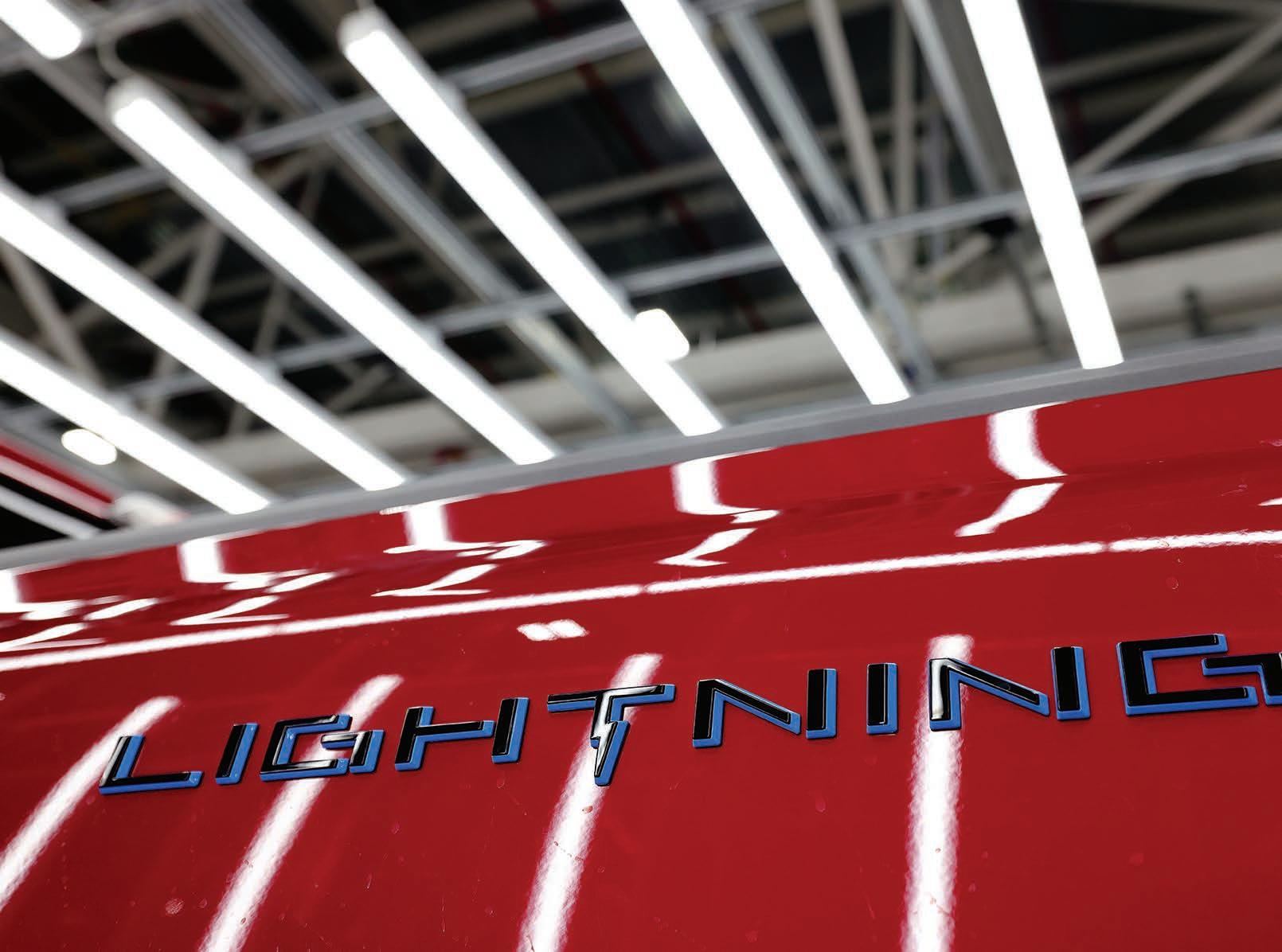
“It’s an iPad on wheels,” said Zhang of the F-150 Lighting.
“The automotive industry is an exciting place to be,” said Zhang, who will be recruiting perhaps the next great auto innovator from the students at Michigan.
Note: This article borrows from an extended article written by James Lynch, College of Engineering, and includes quotes from Linda Zhang’s Homecoming talk on September 23, 2022.
dents,
PEOPLE POWERING INNOVATION | 77
Prof. Mingyan Liu presents the Alumni Merit Award to Linda Zhang at Zhang’s 2022 Homecoming talk to stu
faculty and staff on September 23, entitled “My Journey in electrifying the world’s most popular truck.”
THANKS TO OUR DONORS
INDIVIDUALS
Mark Abel
Natalie Adams
Christine Anthony
Robert J. Armantrout
John Asvestas
Michael Bacher
Michael Badalament Qing Bai Matthew Baker
Edmund Banghart Deborah Barr
David Bartlett
Paul Bauerschmidt
Paul E. and Ruth Bauhahn Philip Bayer Amy Bell
Alan Berke
Jeffrey Berno
Xiaochuan Bi Phil and Sherri Bishop David Blair
Janice Bohrer
Matthew Bombery
John Bonn
Andrea Borkowicz
Neil Borkowicz
Barbara Brandenburg Ali Bregu
Edward Breitenbach
Andrew Brown Matthew Brown John Brunn
Gregory Buchanan Nicholas Bueter
Joseph Campbell Joel Carlson
J. Scott Carr and Marion E. Parr Allan Carter
Edmund Case
Matthew Casselton
Chih-hung Cheng
Thecla Chomicz
Shing Choo Rex Chung John Clark
David Cochran
Christopher Codella Shoshanna Cogan
Gary Cohen
Don Coleman Kent Conness
Daniel Connors Geoff Cost
Thomas Craig
William Dargel
John DeHeus John DeLoof Brandon Demory David DeRoo Jack DiGiuseppe Allen Dobryden Joseph Doll Linda Dressic Brent Edwards John Eisenbraun Richard Elliott Larry Engelhardt Sara Evans Susan Evans Andrew Farah Isaac Fehrenbach Karen Fireman Karen Fleming Tristan Fletcher Carol Flint Maceo Foster J. George Friess Edwin Fujinaka Samuel Fuller Aviva Garrett Doshay Brian Gilchrist Helmut Goebel Burt and Liz Gold Srinivasa Gopaladhine Marjorie Gurmen Mark Haddox Timothy Hannon Kristen Hausman Paul Heininger
Thomas Heisey Rashaunda Henderson Brian Hess William Heydenburg Robert Hogan Robert Honor
Robert Hooper Ryan Hoppe Dr. Rebecca S. Horvath Yung-Chu Hsia Tao-Yang Hsieh Hai-Chang Hsiung Wan-Thai Hsu
Jean Hudson Aaron Hurd Medhat Ibrahim Douglas Johnson George Johnston
Benny Joseph
Daniel Josephs Catharine June Elizabeth Kamlet Ibrahim Kandah Rojano Kashani Dr. Minuchehr Kashef Harry Katzenmeyer John Keller
Nicholas Khabbaz Rohit Khanna Hima Kher Faizan Khuwaja Dongwoon Kim Thomas Klein Rajanna Konanahalli Gary Krebs Royce Kriewall Patricia Kroesen Barbara Kuczynski Larry Kuivenhoven John Kurkjian Steven Kurth Michael La Moreaux Kathy LaHaie Matthew Lamb Peter LaPresto John and Sarah Lawser Roger Lee Somin Eunice Lee Franklin Leimbach Frederick J. Leonberger Robert and Patricia Lerner Yifei Li Herman Lieberman Joe Lin Shenchuan Lin Robert Lipa Yao-Chang Liu Brian Long Khai-Quang Luc Anthony Lucchesi Peter Lucyshyn Marco Ma Ann MacNeill
Thomas Madden Maureen Madden Kevin Makowski Daniel Marco
Norman D. Marschke Christopher Marsh Michael Marsh Steve Martin John McCall
N. McClamroch
Thomas McElroy
Mary Anne Medaglia
Steven Medaglia Stanley Mendenhall David G. and Dorothy S. Messerschmitt
Ezgi Mete
Kraig Meyer
Grant Miars
Laurence Mieras Eiji Miki
Arthur Miller
William Miller Jianhua Mo Dale Mohr Pedram Mohseni Moloney Family
Elizabeth Monasa Peter Moo Walter Mosley Robert Most Eric Munson Michael Murray Yuka Muto Yoshio Nakajima Nagaraj Nandhakumar Sunil Navale
Gregor Neff John Nepiuk Sean Newman Thanh Nguyen Doyle Nichols Jonathon Niemczak Ray Notarantonio Daniel Obudzinski Alp Okuyucu
Ibrahim Onyuksel Rajeev Parekh Vinay Patel
Joseph Patterson
James Patzer
Solti Peng Craig Pepper
Harry Peterson Frederick Phail Jamie Phillips
Megan Pillsbury
Daniel B. Pinkert and Freddi L. Greenberg
Walter Pinkus Jean Policht Glen Pollock Mark Posluszny
78 | PEOPLE POWERING INNOVATION
Electrical and Computer Engineering thanks the recent donors named below as well as those who gave anonymously.
Bob Powell
Vinod Prasad Brian Raeker
Sheila Rajan
Menglou Rao Hazel Redman
Alan D. Reed Dr. Jordi Ribas Michael Richards Adam Roberts
Christian Romvary Tomas Rose Rob Rutenbar John Salvador John Sanguinetti Kamal Sarabandi Matthew Sauve Wilmer Schnure
Arthur Schupp Robert D. Scott Stephen Scott Demetrios Serakos
James A. Seydel and Judith C. (Gunderman) Seydel Patrick Sherhart David Shuster David Siminoff
Jayakumaran Sivagnaname James Siwik
Bryan Smith T. Murray Smith Sandra Spires
Gary Sprader James Stiles
Anne Stoppe Carl Stubenrauch
Vijay Subramanian Bruce Swanson Paul Techau
Douglas Teeter Chia-Yuan Teng Jean-Paul Tennant Mindy Teo Daniel Terry Douglas Tinker Tao Sang Tong
Anthony Torre
Diane Trew
Adam Trock Sal Trupiano Ioannis Tsampalis John Tsao Reid Turnbull
Joseph Twicken
Fawwaz Ulaby Gabriel Valderrama Kurt VanVoorhies Ramji Venkataramanan Gary Voegeding Jerrold L. Wagener Richard P. and Mara F. Wallace Rodger Walser Stacy Walters Sha Wang Tianlin Wang Jason Weigold Robert Weissman Brandon Wellbaum Cheng Wen Ronald West Marvin White Cary Wilson Eleanore Wolpaw Jenny Wong Scott Wright Hui Ye Dawson and Wendy (dec.) Yee Henry Yee Benjamin Yee Norman Yeung Hamza Yilmaz Joseph Yoder Caroline Yu Michael Zapf Jonathan Zapp Ruth Zarger Aaron Zeller Kan Zhou Xiuli Zhou Tamara Zielony David Zuk
CORPORATIONS, FOUNDATIONS, FUNDS
Accenture
Adobe Systems, Inc. Agilent Technologies, Inc. AiFi, Inc. Amazon.com, Inc. Analog Devices, Inc. Apple Inc. Avicena Tech Ball Corporation Black & Veatch Foundation
Carol S. Ireton-Jones and James D. Jones Charitable Fund
Consumers Energy Foundation Dell Computer Corporation
EMAG Technologies, Inc. Ford Motor Company
Fred Krumm Memorial Fund George & Karen Lipscomb Charitable Fund Google Foundation
Google, Inc. Hage Foundation IBM Corporation Intel Corporation
Javin and Connie Olson Giving Fund
Jeff Fessler and Sue Cutler Family Fund
Jenny H. Krauss & Otto F. Krauss Charitable Foundation Lavigne Family Charitable Fund Mahendra-Rajah Giving Fund
MasterCard Inc. and MasterCard Foundation Medtronic Inc. Microsoft Corporation
Nancy Savonick & Steve Lund Charitable Fund Naver Labs Europe Nooril-Iman Charitable Foundation, Inc. Northrop Grumman Nvidia Corporation ON Semiconductor Qualcomm Incorporated Sevalia-Misra Charitable Trust Silicon Laboratories, Inc. Steve and Debbie Grob Fund Texas Instruments Inc. and Texas Instruments Foundation
The Boeing Company
The Siewiorek Walker Family Charitable Fund
Toyota Motor Corporation uLab Systems, Inc. Willow Run Test Labs, Inc.
PEOPLE POWERING INNOVATION | 79
Blaauw,
Fessler, Jeffrey William L. Root Collegiate Professor of EECS (courtesy: AP; BME; RAD)
Finelli, Cynthia Professor Director, EER Program (courtesy: Education)
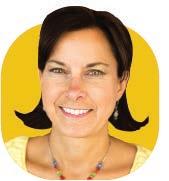

Gianchandani,







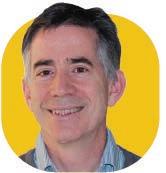

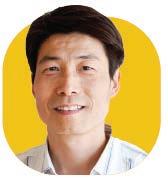
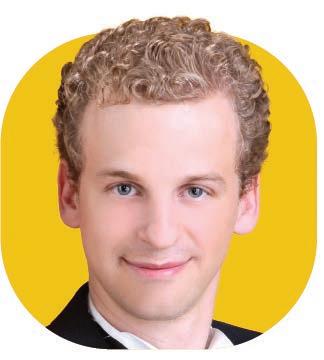


Flynn, Michael Fawwaz T. Ulaby Collegiate Professor





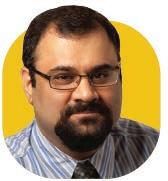
Gilchrist,
Forrest, Stephen R. Peter A. Franken Dist. University Professor; Paul G. Goebel Professor; (courtesy: PHY; MSE; AP)
Balzano,

Grbic,
Deotare,

Freudenberg, James S. Professor; Program Director, Automotive Engineering, ISD (courtesy: ISD)
Guo,

80 | PEOPLE POWERING INNOVATION ECE FACULTY
Bhattacharya, Pallab Charles M. Vest Dist. Univer. Professor; James R. Mellor Professor (courtesy: AP)
David T. Kensall D. Wise Collegiate Professor
Parag Assoc. Professor (courtesy: AP)
Dick, Robert Assoc. Professor
Cook, Jeffrey Lecturer II
Afshari, Ehsan Professor
Laura Assoc. Professor (courtesy: STATS)
Ahmadi, Elaheh Asst Professor
Anastasopoulos, Achilleas Assoc. Professor
Avestruz, Al-Thaddeus Asst. Professor Ali, Maha Lecturer I
Galvanauskas, Almantas Professor Garmire, David T. Assoc. Research Scientist Lecturer I
Yogesh B. Professor; Director, WIMS2 (courtesy: AP; ME)
Brian E. Professor; Program Director, Ideation Laboratory (courtesy: CLASP; AP)
Anthony Professor (courtesy: AP)
Burgers, Alexander Asst. Professor
Corso, Jason Professor, Robotics and EECS
Current tenure track faculty, research scientists, and regular lecturers active as of September 1, 2022
L. Jay Professor (courtesy: AP, MACRO, ME)
Hero, Al John H. Holland Dist. Univ. Prof.; R.J. and B. Williams Professor of Engineering (courtesy: BME, STATS )
Kanicki, Jerzy Professor (courtesy: AP)
Hiskens, Ian A. Vennema Professor of Engineering


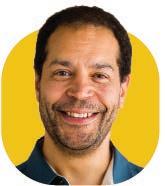
Hofmann, Heath Professor; Assoc. Chair, Graduate Affairs

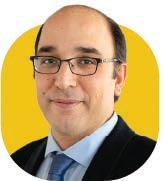

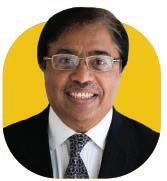



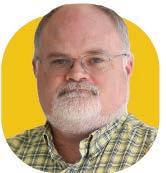
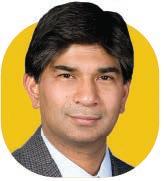
Hou, Bixue Assoc. Research Scientist
Islam, Mohammed N. Professor (courtesy: BME, IntMed)
Jeong, Seok Hyeon Asst. Research Scientist
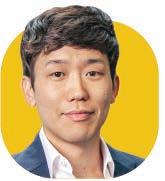


Lafortune,

Kim, Gyouho Asst. Research Scientist
Kim, Hun-Seok Assoc. Professor
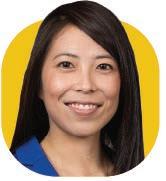
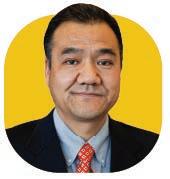
Kira, Mackillo Professor

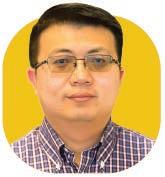
Ku, Pei-Cheng Professor; Assoc. Chair, Undergraduate Affairs (courtesy: AP, MACRO)
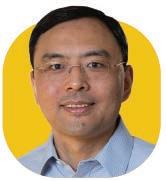

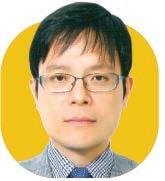
Kushner, Mark J. George I. Haddad Professor; Director, MIPSE (courtesy: AP, ChemE, NERS)

Liu,
Lee,
Li,
Lim, Jaechan Asst. Research Scientist
Liu, Mingyan Peter and Evelyn Fuss Chair of ECE; Alice L. Hunt Collegiate Professor
Liu,
Lu,
Mahdavifar,
Mathieu,
PEOPLE POWERING INNOVATION | 81
Wei Professor (courtesy: AP, MSE)
Hessam Assoc. Professor
Maksimchuk, Anatoly Research Scientist
Zhongming Assoc. Professor, BME and EECS
Stéphane N. Harris McClamroch Professor of EECS
Yongxi Asst. Research Scientist
Somin Eunice Asst. Professor (courtesy: BME, MACRO)
Shuai Asst. Research Scientist
Johanna Assoc. Professor
Mazumder, Pinaki Professor
Michielssen,
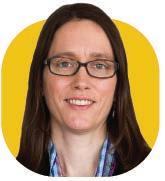


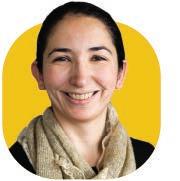







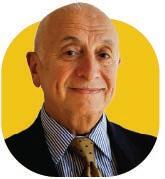

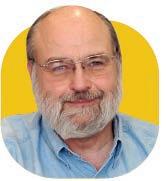







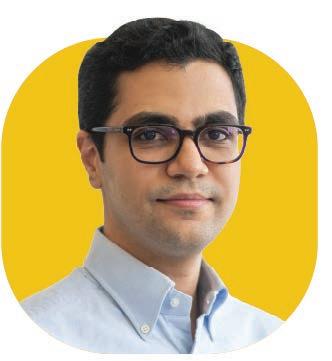
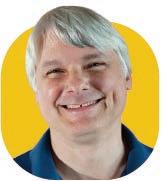



Mortazawi,


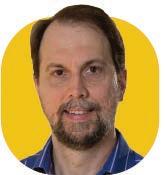
Nadakuditi,
Revzen,
Peterson,

82 | PEOPLE POWERING INNOVATION
Becky (R.L.) Assoc. Professor; Director, LNF (courtesy: AP, MSE)
Pierce, Leland Assoc. Research Scientist; Lecturer
Pradhan, S. Sandeep Professor Qin, Yutao Assoc. Research Scientist Qu, Qing Asst. Professor
Shai Assoc. Professor (courtesy: EEB)
Saligane, Mehdi Asst. Research Scientist
Sarabandi, Kamal Rufus S. Teesdale Professor of Engineering; Director, Center for Microwave Sensor Technology
Sarabi, Armin Asst. Research Scientist
Scott, Clayton D. Professor (courtesy: STATS)
Seiler, Peter Assoc. Professor
Stark, Wayne E. Professor Steel, Duncan Robert J. Hiller Professor (courtesy, BioPHY, PHY, IOG, AP)
Subramanian, Vijay Assoc. Professor
Sylvester, Dennis Edward S. Davidson Collegiate Professor Sr. Assoc. Chair
Terry, Fred Professor; (courtesy: AP)
Tang, Wei Asst. Research Scientist
Tsang, Leung Professor
Ozay, Necmiye Assoc. Professor
Raj Rao Assoc. Professor (courtesy: AP)
Nees, John Research Scientist
Nashashibi, Adib Assoc. Research Scientist
Norris, Theodore B. Gérard A. Mourou Professor, (courtesy: AP)
Najafi, Khalil Schlumberger Prof. of Engineering; Arthur F. Thurnau Professor (courtesy: BME)
Owens, Andrew Asst. Professor
Meerkov, Semyon Professor Mi, Zetian Professor
Eric Louise Ganiard Johnson Professor; COE Assoc. Dean for Research
Amir Professor; Director, RADLAB
Wang, Ping Asst. Research Scientist
Wentzloff,
Willingale,
Winful, Herbert Joseph E. & Anne P. Rowe Prof.; Arthur F. Thurnau Prof.; Univ. Diversity and Social Transformation Prof. (courtesy: Physics)
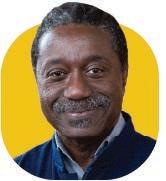
AFFILIATED FACULTY
Includes faculty who are paid entirely by another department or division, but have an official affiliation with ECE.
Austin, Todd, S. Jack Hu Professor of CSE Berenson, Dmitry, Assoc. Professor, Robotics Brehob, Mark, Kurt Metzger Lecturer, CSE Chestek, Cynthia, Assoc. Professor, BME Cundiff, Steven, Harrison M. Randall Professor of Physics, PHY Epureanu, Bogdan, Professor, ME Fu, Kevin, Assoc. Professor, CSE Goldman, Rachel S., Professor, MSE Gong, Xiwen, Asst. Professor, ChemE Gregg, Robert, Assoc. Professor, Robotics Hayes, John, Claude E. Shannon Professor, CSE Krushelnick, Karl, Harry J. Gomberg Professor, NERS Kurabayashi, Katsuo, Professor, ME Mudge, Trevor, Bredt Family Professor of Engineering, CSE Pipe, Kevin Patrick, Professor, ME Sakallah, Karem, Professor, CSE Sample, Alanson, Assoc. Professor, CSE Sangi Reddy, Pramod, Professor, ME Scruggs, Jeffrey, Assoc. Professor, CEE Shin, Kang, Kevin and Nancy O’Connor Professor of CS Stefanopoulou, Anna, William Clay Ford Prof. of Technology, ME Sun, Jing, Michael G Parsons Professor, NAME Thomas, Alexander, Professor, NERS Tilbury, Dawn, Assoc. VP for Research, ME

AP – Applied Physics
BioPHY – BioPhysics BME – Biomedical Engineering CEE – Civil and Environmental Engineering ChemE – Chemical Engineering CSE – Computer Science and Engineering EEB – Ecology and Evolutionary Biology IntMed – Internal Medicine IOG – Institute of Gerontology

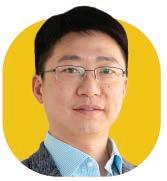
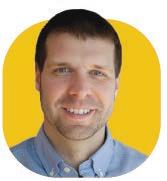

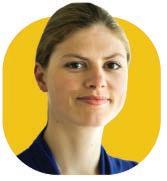
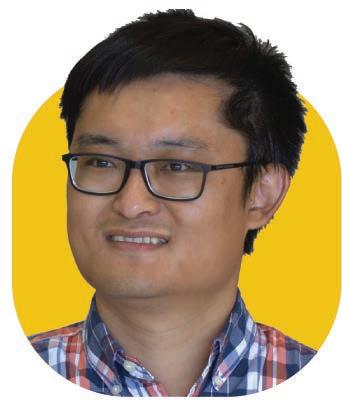
MACRO – Macromolecular Science and Engineering ME – Mechanical Engineering

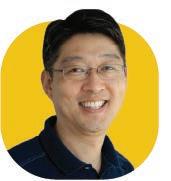
MSE – Materials Science and Engineering
NAME – Naval Architecture and Marine Engineering NERS – Nuclear Engineering and Radiological Sciences OTO – Otolaryngology
PHY – Physics
RAD – Radiology
STATS – Statistics
PEOPLE POWERING INNOVATION | 83
David D. Professor; Director, Michigan Integrated Circuits Lab
Louise Assoc. Professor
Ying, Lei Professor Yoon, Euisik Professor (courtesy: BME)
Zhang, Pei Assoc. Professor
Zhang, Zhengya Professor
Zhong, Zhaouhui Assoc. Professor
Young, Steven Asst. Research Scientist
Zhang, Zheshen Assoc. Professor
1301 Beal Avenue Ann Arbor, Michigan 48109-2122 ece.engin.umich.edu
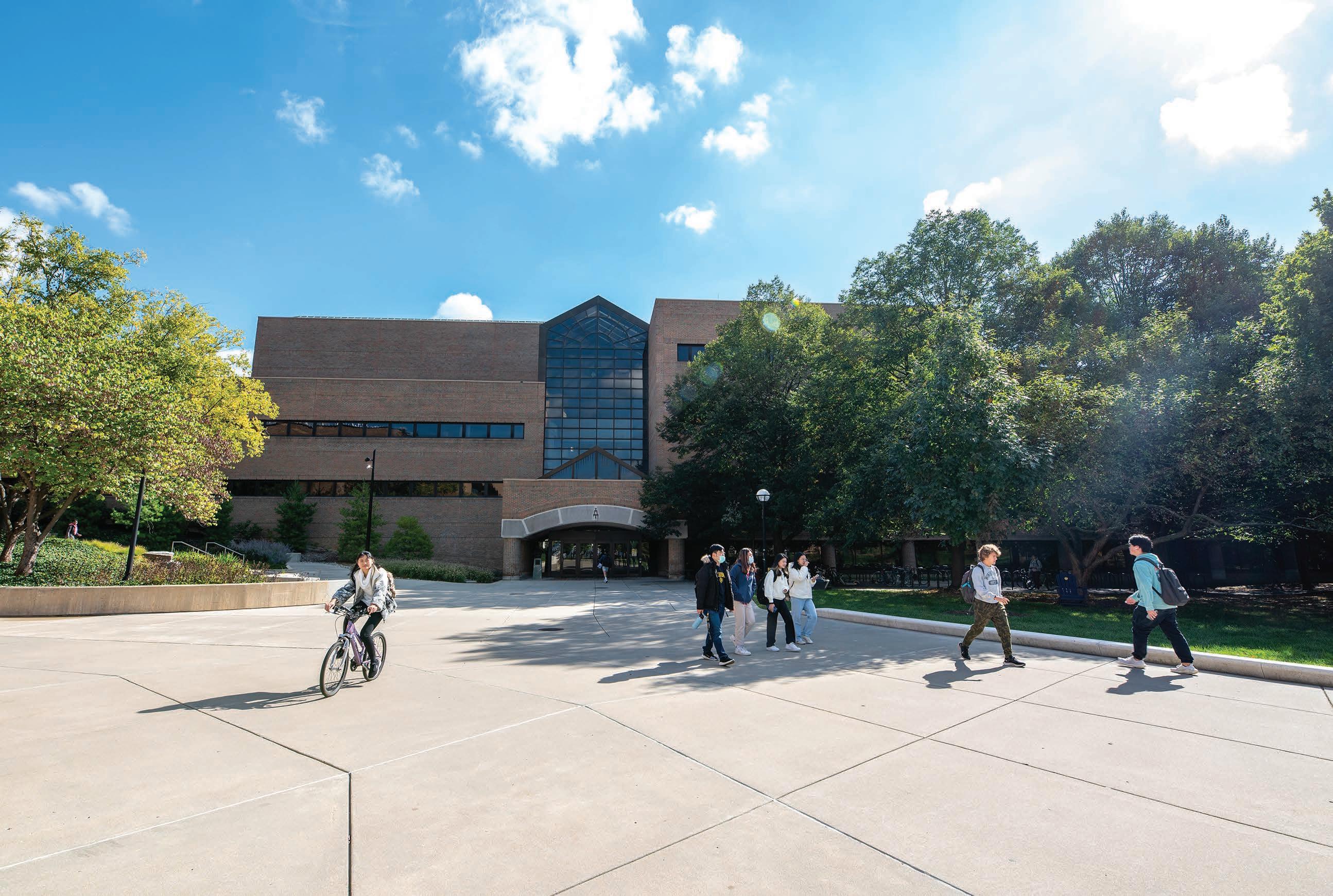 Photo: Silvia Cardarelli
Photo: Silvia Cardarelli



































 ECE doctoral student Nathan Dvořák holds a prototype sensor. Photo: Silvia Cardarelli
IMAGE SENSOR
ECE doctoral student Nathan Dvořák holds a prototype sensor. Photo: Silvia Cardarelli
IMAGE SENSOR












































 Fawwaz T. Ulaby Collegiate Professor of ECE
Fawwaz T. Ulaby Collegiate Professor of ECE


 Fawwaz T. Ulaby Distinguished University Professor of EECS
Fawwaz T. Ulaby Distinguished University Professor of EECS















 AMY BROOKS ECE Research Manager
AMY BROOKS ECE Research Manager

 AMY WICKLUND ECE Senior Administrative Assistant
KIM NOVAK ECE Administrative Assistant
AMY WICKLUND ECE Senior Administrative Assistant
KIM NOVAK ECE Administrative Assistant




















































































































































































 Photo: Silvia Cardarelli
Photo: Silvia Cardarelli